South of Market, San Francisco
description: neighborhood in San Francisco, California, United States
90 results
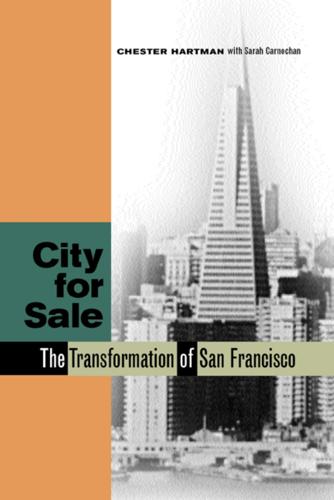
City for Sale: The Transformation of San Francisco
by
Chester W. Hartman
and
Sarah Carnochan
Published 15 Feb 2002
Jean Fuller Anderson, “New Wave of Entrepreneurs Is Rejuvenating South of Market Showplace Square Area,” San Francisco Business, 26 July 1982; Jack Miller, “New Owners Plan for Big Showplace,” San Francisco Sunday Examiner & Chronicle, 22 May 1983. 13. See Gayle S. Rubin, “The Miracle Mile: South of Market and Gay Male Leather,” in Reclaiming San Francisco, ed. James Brook, Chris Carlsson, and Nancy J. Peters (San Francisco: City Lights Books, 1998), 247 – 72. 14. See John McCloud, “Builders Bet on San Francisco High-Rises,” New York Times, 29 August 1999. chapter 11 . city hall 1. Eugene C. Lee and Jonathan S. Rothman, “San Francisco’s District System Alters Electoral Politics,” National Civic Review 67 (April 1978): 173–78. 2.
…
See San Francisco Neighborhood Legal Assistance Foundation Shaklee Corporation, 245 Shanley, John, 273 Shapiro, William, 136, 418n27 Shaw, Randy, 389 Shearson–American Express, 245 Shelley, John, 24 – 28, 30, 38, 45, 103 Shelley, Kevin, 354, 355 Sherman Hotel, 97 Ship Scalers Union, 69 Shorenstein, Walter, 175, 189, 209, 299, 313, 315, 316, 337, 386, 396 Shurtleff, Roy L., 9 Sierra Club, 117 Silicon Valley, 305, 328, 336, 400 Silver, Carol Ruth, 253, 272, 353n, 362 Simmons, Warren, 235 Simon, Louis S., 43 Simon, Paul, 315n Sister Boom Boom, 247 “Sisters of Perpetual Indulgence,” 247 Sixth Street, 78, 86, 219, 220, 221 Sixth Street Merchants and Residents Association, 223 60 Minutes, 247 Skidmore, Owings & Merrill, 45, 156, 160, 163, 302 Skid Row, 34, 39, 54, 60–62, 68, 70, 82, 116, 220, 412n24 Sklar, Richard, 144, 252, 281, 283, 314 SKS Investments, 269, 331 Smith, Arlo, 303 Smith, Charles, 418n27 Social Science Research, Bureau of, 78 Social Services, Department of, 67, 138 Social Services Building, 146 “soft money,” 270n, 273, 315n Solnit, Rebecca, 397 Solomon, Emmett, 405n35 Solvin, Francis, 25 Sony Corporation, 214 Sorro, Rick, 139 Southern Pacific (SP), 5, 6, 61, 182–87, 230, 231, 245, 262, 291, 295, 302, 316, 394, 395, 405n35 South of Market, 8, 11–14, 17, 19, 32, 34, 37, 38, 44, 46, 48, 54–76, 91, 95, 96, 115, 122, 125, 136, 138, 141, 155, 165, 173, 178, 182, 184, 220, 223, 225–26, 272, 297, 298, 301, 302, 305–7, 326, 334, 345, 365, 370, 391, 397, 412n24 South of Market Advisory Committee, 52 South of Market Business Association, 223 South of Market Health Center, 217 South of Market Problem Solving Council, 223 South Park, 58, 72 Spectacor Management Group, 174 sports arena, 12, 14, 31, 32, 45, 50, 51, 52, 108, 110, 118, 129–33, 171–78, 396 SPUR. See San Francisco Planning and Urban Renewal (Research) Association Stadium, Inc., 171, 172 Index / 485 stadium, downtown, 171 –78, 183, 226, 256, 336 Standard Oil of California, 44, 230, 245, 301, 405n35.
…
Burton H. Wolfe, “Must San Francisco Choke Itself to Death?” San Francisco Bay Guardian, 18 June 1968. 31. San Francisco Examiner, 28 November 1962, quoting a committee report of the Board of Supervisors. The story continues, “The South of Market Advisory Committee thus outlined yesterday one of the biggest problems it faces in trying to restore economic life South of Market.” 32. Frederick M. Wirt, Power in the City: Decision Making in San Francisco (Berkeley and Los Angeles: University of California Press, 1974), 190. 33. “Financiers Set on Redevelopment,” San Francisco Examiner, 18 January 1957. 34.
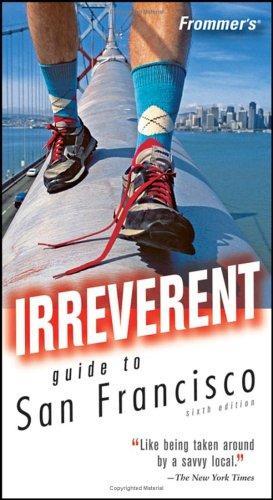
Frommer's Irreverent Guide to San Francisco
by
Matthew Richard Poole
Published 17 Mar 2006
A neighborhood map will show clearly, for example, that Haight-Ashbury is right next to Golden Gate Park, which stretches from the middle of the city all the way to the Pacific Ocean (at Ocean Beach, near the Cliff House). You’ll see that the Castro and the Mission District—right next to each other, and not too far east of Haight-Ashbury—are both south of Market Street, but the neighborhood officially known as South of Market is quite a distance farther east, in the downtown area. You’ll also see that San Francisco—a city and county unto itself—is at the northern tip of a peninsula flanked by the San Francisco Bay on the east and the Pacific Ocean on the west. The Financial District sits on the eastern shore of the city, which curves northward as the Embarcadero passes North Beach and Fisherman’s Wharf, eventually turning almost due west to the Golden Gate, where the Pacific Ocean meets the bay.
…
Other cafes I mention are in three areas where you’d expect to find the city’s cafe culture well represented: Hayes Valley, a small, sunny neighborhood perfect for strolling because it comprises only a few blocks along Hayes Street (between Franklin and Buchanan sts.) with an occasional side-street detour; South of Market (SoMa), an industrial neighborhood where artists, architects, multimedia gurus, filmmakers, and musicians live and work in warehouse lofts (below Market St., between Second and Tenth sts.); and the Castro district, San Francisco’s famous gay mecca (mostly south of Market to about 20th St., between Castro and Sanchez sts.). Finally, there are the refuges—cafes that provide escapes from neighborhoods that are often overrun by tourists or other consumption-crazed breeds.
…
If sunsets aren’t your thing, and you’d sooner toss back a pint at a rowdy tavern full of live music and boisterous baby boomers, try the No Name Bar, but don’t drink too many happy-hour specials unless you intend to spend the night—the last ferry departs for San Francisco just after 7pm. 106 DIVERSIONS Museum meccas outside Golden Gate Park... From a half block away, the huge circular skylight atop Swiss architect Mario Botta’s San Francisco Museum of Modern Art (South of Market) looks like some sort of signaling device for extraterrestrial art collectors. Inside, earthlings have been known to be dazzled by the West Coast’s most extensive collection of 20th-century art, which fills 50,000 square feet of gallery space.
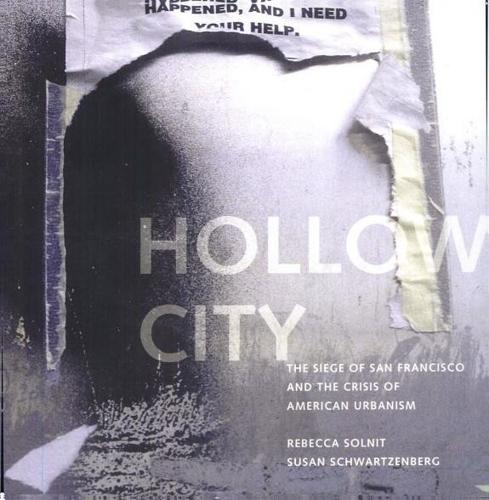
Hollow City
by
Rebecca Solnit
and
Susan Schwartzenberg
Published 1 Jan 2001
Bohemian Territories bohemia caught on The idea of Ada Clare, the via New "Queen of Bohemia," arrived in San Francisco Civil War, from Paris magazine The Golden Era}^ In 1872, San Francisco's Bohe- mian Club was founded by in end of the York and stayed to become a local luminary and a contributor to the literary included quickly. Before the artists and writers. Mark Twain, those years: and journalists for the rest of the century San Francisco had a Ambrose Bret Flarte, lot of resident writers Bierce, Joaquin Miller, Gertrude Atherton, Frank Norris, Ina Coolbrith, Jack London (born south of Market Street), and, peripherally, John Muir.
…
meatpacking in the is facilities The moment of toward a more peripheralized working This is "The dominated by middle-class residential areas, a concentration of professional, administrative, agerial cities. class, the context behind multimedia replacing South of Market, Fly arriving as the Coltrane church SAN FRANCISCO, CAPITAL OF THE TWENTY-FIRST CENTURY departs in my own Western Addition neighborhood, and 21 valet parking suddenly appearing where lowriders once cruised Mission Street. As for the effects of this gentrification, what is happening in San Francisco pening everywhere, which precisely the term is gentrification traditionally describes the borhood rather than term altogether a whole hap- problem (and because the transformation of a neigh- city or region, may be an it What for this awful upgrading).
…
to discredit the residents of the claiming that no decent people would the city to take . . . Photograph by ' Connii " ^ u Connie Hatch: live South of Market neighborhood —therefore it was okay for "... And even without around 5,000 people here. It's happening the only people the fire, who were all people are being forced out because of changes being displaced. over San Francisco and who can afford to live here, single white people, which is It's It's the area. Figures crop up going to be too expensive for the working-class people to in this in taking San Francisco away in the coming years, will be professional the identity of our city."
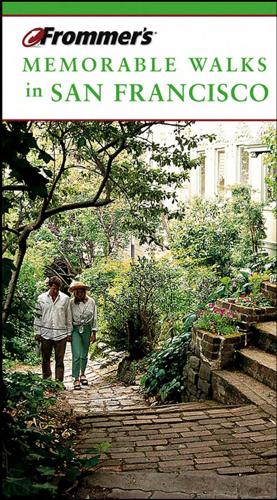
Frommer's Memorable Walks in San Francisco
by
Erika Lenkert
Published 15 Mar 2003
Manufactured in the United States of America 5 4 3 2 1 Contents List of Maps iv Introducing San Francisco 1 The Walking Tours 1 2 3 4 5 6 7 8 9 10 11 12 Union Square Past & Present The Culture & Cuisine of Chinatown Noshing Through North Beach The Storied Steps of Telegraph Hill The Haughty Hotels of Nob Hill The Ghosts of Russian Hill The Majestic Homes of Pacific Heights South of Market: A Civilized Afternoon of Arts & Leisure The Culture & Color of the Mission District A Historical Flashback Through Haight-Ashbury Golden Gate Park: Museums, Blooms & Trees from Dunes The Golden Gate 7 21 36 54 68 83 94 106 115 127 136 146 Essentials 158 Guided Walking Tours of San Francisco 169 Index 174 LIST OF MAPS The Tours at a Glance 4 The Walking Tours Union Square Chinatown North Beach Telegraph Hill Nob Hill Russian Hill Pacific Heights South of Market Mission District Haight-Ashbury Golden Gate Park Northern San Francisco 11 23 37 55 69 85 95 109 117 129 139 149 About the Author A native San Franciscan, Erika Lenkert writes food, travel, and lifestyle articles for San Francisco Magazine, Wine Country Living, and Four Seasons. She is also the author of The Last Minute Party Girl, Frommer’s San Francisco, and Frommer’s Wine Country, and the co-author of dozens of guides about California, including Frommer’s California.
…
Seriously, though, the tall tales of who lived where and who killed whom in this neighborhood are just as compelling as the over-the-top architecture. And if you like to shop, you’ll love the finale. Walk 8: South of Market: A Civilized Afternoon of Arts & Leisure Only recently has South of Market become the area of choice for a civilized and culturally stimulating afternoon. But with the Museum of Modern Art and the Yerba Buena Gardens within a few blocks of one another, you can’t but walk away feeling inspired. The Tours at a Glance Golden Gate Bridge NORTHERN SAN FRANCISCO San Francisco Bay Marina 101 Bl vd 101 . d. v. Lyon St. Presidio A HAIGHTASHBURY Ashbury sus nas Par Av. on 1 Twin Peaks Blvd.
…
Better yet, catch either the no. 41 or 45 bus heading due east on Union Street, get off at Columbus Avenue, and continue your exploration of San Francisco with a tour of North Beach. • Walking Tour 8 • South of Market: A Civilized Afternoon of Arts & Leisure Start: Mission Street, between Fourth and Fifth streets. Public Transportation: Bus: 15, 30, or 45; Muni Metro: J, K, L, or M to Montgomery Station. Finish: New Montgomery and Market streets. Time: Half an hour to 5 hours, depending on how many museums you visit. Best Times: Tuesday and Thursday through Saturday from 11am to 5pm. 106 South of Market • 107 Worst Times: Monday, when many of the museums are closed; Wednesday, when the Museum of Modern Art is closed; Sunday; nighttime.
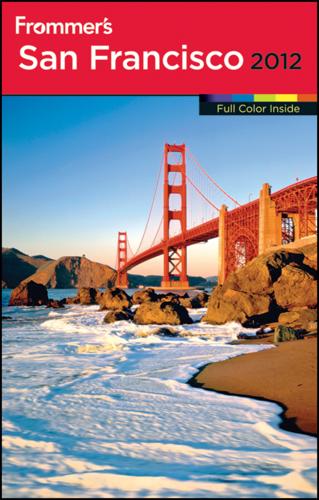
Frommer's San Francisco 2012
by
Matthew Poole
,
Erika Lenkert
and
Kristin Luna
Published 4 Oct 2011
Nob Hill is worth a visit if only to stroll around delightful Huntington Park with its cherubic fountain (a copy of the Tartarughe fountain in Rome), attend a Sunday service at the cathedral, or ooh and aah your way around the Fairmont’s spectacular lobby. We’re Number One! It’s the kind of old news that we never get tired of hearing: San Francisco was voted the number-one city in the United States to visit in the latest Condé Nast Traveler Readers’ Choice Survey. This is the 18th time San Francisco has topped the annual poll’s “Top Cities—United States” category since it debuted in 1990. It is the 17th consecutive year that San Francisco has scored the highest (Santa Fe won in 1992). Huntington Park. South of Market (SoMa) From Market Street to Townsend Street and the Embarcadero to Division Street, SoMa has become the city’s cultural and multimedia center.
…
SoMa, the once industrial neighborhood south of Market Street, has exploded with new development, including the beautiful Yerba Buena arts district, the sleek lofts of Mission Bay, and a slew of hip new clubs and cafes. South Beach is the new darling of young professionals living the condo-in-the-city life, and the spectacular new California Academy of Sciences and de Young Museum have given even the locals two new reasons to visit Golden Gate Park. The San Francisco Giants celebrate their 2010 World Series win. All that glitters is not the Golden Gate, however. At the end of World War II, San Francisco was the largest and wealthiest city on the West Coast.
…
Numerical avenues (Third Ave. and so on) are in the Richmond and Sunset districts in the western part of the city. Numerical streets (Third St. and so on) are south of Market Street in the east and south parts of town. Neighborhoods in Brief For further discussion of some of the neighborhoods below, see the “Neighborhoods Worth a Visit” section of chapter 6, beginning. Also see the “San Francisco Neighborhoods” map. Union Square Union Square is the commercial hub of San Francisco. Most major hotels and department stores are crammed into the area surrounding the actual square, which was named for a series of violent pro-union rallies staged here on the eve of the Civil War.
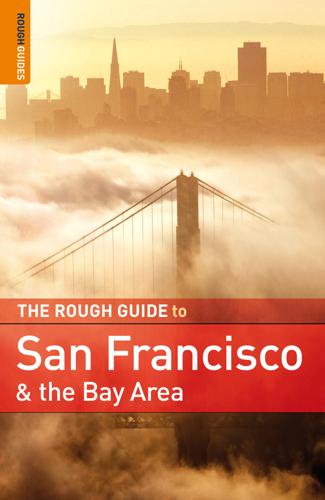
Rough Guide to San Francisco and the Bay Area
by
Nick Edwards
and
Mark Ellwood
Published 2 Jan 2009
Environmentally conscious buses, powered by overhead electric cables rather than gas, cover all the areas not served by streetcars. There are three historic cable-car lines (wwww.sfcablecar.com; see p.27 for further details), which are more for The streets of San Francisco 26 San Francisco’s street system can seem maddeningly idiosyncratic at first, since, unlike many American cities, Downtown streets have names rather than numbers (the only grid of numbered streets is that radiating into the dock area south of Market.) Throughout this guide, we’ve provided the street address, its cross street, and the city neighborhood to make it as easy as possible to locate any listings. If you need to find another address, there’s a basic formula that will help pinpoint your destination.
…
The Bohemian Club, 624 Taylor St, is best known for its Bohemian Grove retreat on the Russian River, where ex-presidents and corporate giants assemble for Masonic rituals and schoolboy larks; the San Francisco chapter is housed in a Lewis Hobart Moderne-style building. The Financial District The boundaries of San Francisco’s FINANCIAL DISTRICT have increasingly blurred in recent years, particularly with the spate of new office high-rises that continue to go up south of Market Street. Its western edge abuts Chinatown at Kearny Street, while to the north it quietly fades into the residential towers and inviting parks of the Northeast Waterfront beyond Clay Street.
…
High above, on the hills just to the south, the ornate mansions and Victorians of Pacific Heights make for splendid views; from this perch you’ll spot too the Presidio, a vast expanse of green stretching west to the Golden Gate Bridge. ˘ | INTRODUCTION | WHAT TO S E E | W HE N TO GO g Children enjoying San Francisco’s outdoors ˘ Back near Downtown and west of Union Square, the gritty Tenderloin, a rundown section of cheap hotels and sleazy porn shops, will snap you back to reality. It rests uneasily next to the Civic Center, where the painstakingly restored City Hall is the imposing focus of a concentrated few blocks of public buildings and cultural venues. Cross Market Street and you’ll hit SoMa (South of Market), once the city’s major industrial enclave The city’s hills serve as handy and, in the Nineties, home to the markers between its shifting offices of a myriad since-defunct moods and characters.
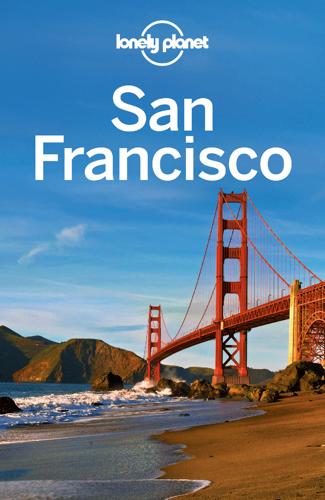
San Francisco
by
Lonely Planet
He won 5600 votes. Undaunted, he declared himself Absolute Empress of San Francisco, the widow and true heir of Emperor Norton. When local media echoed the Empress’ criticism of the continuing raids, the crackdown stopped – a feat not achieved for years elsewhere, until New York’s 1969 Stonewall protests. By the mid-1970s, the rainbow flag was flying high over gay businesses and homes in the out-and-proud Castro, and the sexual revolution was in full swing at gay clubs and bathhouses on Polk St and South of Market (SoMa). Gay San Francisco had arrived; now all it needed was an elected representative. The Castro was triumphant when Castro camera-store owner Harvey Milk was elected city Supervisor, becoming the nation’s first openly gay elected official – but as Milk himself predicted, his time in office would be cut short by an act of extremist violence.
…
BusSamTrans (www.samtrans.com; one-way $5) Express bus KX takes about 30 minutes to reach Temporary Transbay Terminal in the South of Market (SoMa) area. Airport Shuttles (one-way $14-17) Depart from baggage-claim areas, taking 45 minutes to most SF locations. For service to the airport, call to reserve a pickup from any San Francisco location at least 4 hours in advance of departure time. Companies include SuperShuttle ( 800-258-3826; www.supershuttle.com), Quake City ( 415-255-4899; www.quakecityshuttle.com), Lorrie’s ( 415-334-9000; www.gosfovan.com) and American Airporter Shuttle ( 415-202-0733; www.americanairporter.com). Taxi Taxis to downtown San Francisco cost $35 to $50, departing from the yellow zone on the lower level of SFO.
…
Contents Plan Your Trip Welcome to San Francisco San Francisco’s Top 10 What’s New Need to Know Top Itineraries If You Like… Month by Month With Kids Eating Drinking & Nightlife Entertainment GLBT Shopping Sports & Activities Cable Cars Explore San Francisco The Marina, Fisherman’s Wharf & the Piers Downtown & Civic Center North Beach & Chinatown The Hills & Japantown The Mission, SoMa & Potrero Hill The Castro & Noe Valley The Haight & Hayes Valley Golden Gate Park & the Avenues Day Trips from San Francisco Sleeping Understand San Francisco San Francisco Today History Local Cuisine & Drinks Literary San Francisco Visual Arts San Francisco Music San Francisco Architecture Hills & Fog Survival Guide Transportation Directory A–Z Welcome to San Francisco Grab your coat and a handful of glitter, and enter the land of fog and fabulousness.
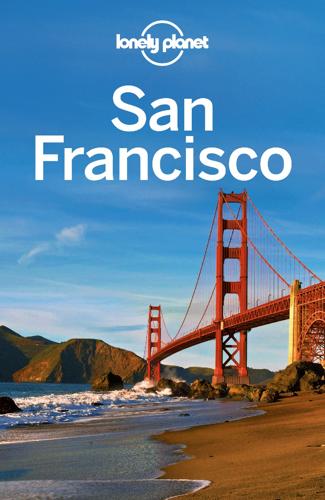
San Francisco
by
Lonely Planet
He won 5600 votes. Undaunted, he declared himself Absolute Empress of San Francisco, the widow and true heir of Emperor Norton. When local media echoed the Empress’ criticism of the continuing raids, the crackdown stopped – a feat not achieved for years elsewhere, until New York’s 1969 Stonewall protests. By the mid-1970s, the rainbow flag was flying high over gay businesses and homes in the out-and-proud Castro, and the sexual revolution was in full swing at gay clubs and bathhouses on Polk St and South of Market (SoMa). Gay San Francisco had arrived; now all it needed was an elected representative. The Castro was triumphant when Castro camera-store owner Harvey Milk was elected city Supervisor, becoming the nation’s first openly gay elected official – but as Milk himself predicted, his time in office would be cut short by an act of extremist violence.
…
BusSamTrans (www.samtrans.com; one-way $5) Express bus KX takes about 30 minutes to reach Temporary Transbay Terminal in the South of Market (SoMa) area. Airport Shuttles (one-way $14-17) Depart from baggage-claim areas, taking 45 minutes to most SF locations. For service to the airport, call to reserve a pickup from any San Francisco location at least 4 hours in advance of departure time. Companies include SuperShuttle ( 800-258-3826; www.supershuttle.com), Quake City ( 415-255-4899; www.quakecityshuttle.com), Lorrie’s ( 415-334-9000; www.gosfovan.com) and American Airporter Shuttle ( 415-202-0733; www.americanairporter.com). Taxi Taxis to downtown San Francisco cost $35 to $50, departing from the yellow zone on the lower level of SFO.
…
Contents Plan Your Trip Welcome to San Francisco San Francisco’s Top 10 What’s New Need to Know Top Itineraries If You Like… Month by Month With Kids Eating Drinking & Nightlife Entertainment GLBT Shopping Sports & Activities Cable Cars Explore San Francisco The Marina, Fisherman’s Wharf & the Piers Downtown & Civic Center North Beach & Chinatown The Hills & Japantown The Mission, SoMa & Potrero Hill The Castro & Noe Valley The Haight & Hayes Valley Golden Gate Park & the Avenues Day Trips from San Francisco Sleeping Understand San Francisco San Francisco Today History Local Cuisine & Drinks Literary San Francisco Visual Arts San Francisco Music San Francisco Architecture Hills & Fog Survival Guide Transportation Directory A–Z Welcome to San Francisco Grab your coat and a handful of glitter, and enter the land of fog and fabulousness.
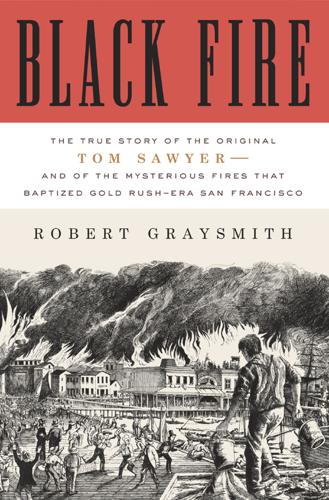
Black Fire: The True Story of the Original Tom Sawyer--And of the Mysterious Fires That Baptized Gold Rush-Era San Francisco
by
Robert Graysmith
Published 30 Oct 2012
One landfill consisted of two shiploads of Spanish brandy dumped over two acres of waterfront ground. South of Market, bounded by Folsom and Mission and Fourth and Tenth streets, was a quicksand bog that sucked anyone crossing out of sight. Each spring the city did maintenance on the single road to the cemetery that cost $15 per square inch. Because the city was flat busted, all the roads remained quagmires and a hazard for the volunteers and their torch boys. Here and there nestled a small refuge, but immense dunes still covered much of San Francisco. The town’s hills had always presented a predicament. No level ground existed beyond the narrow crescent rim forming the beach.
…
Since these children had grown up in the atmosphere of their parents’ depravity, they began to rob and pillage on their own as soon as they left the nest. Known as the Tarflat Hoodlums, they roved south of Market and over most of unhappy Happy Valley, waylaying, beating, and robbing anyone they met. In their black coats, blue spring-bottom trousers, and buff-colored felt hats, they treated mothers and their little girls no better than men and boys. When an officer intervened, the Tarflatters beat him nearly to death. The call of gold had drawn the most reckless young men to San Francisco: the best artists, intellectuals, farmers, merchants, and clerks. It also attracted the worst: cutthroats, ex-convicts, profiteers, pirates, traders, deserters, renegades, crooked politicians, and the Lightkeeper.
…
A blaze had broken out on the deck of the Tennessee on their way up the California coast and had terrified Lillie. That night she awoke screaming of fire. As San Francisco rebuilt, the little girl rode horseback along the muddied streets, went “fishing for rats” under the raised sidewalks, trotted her donkey cart around Mac-Condray’s grounds, or watched the many daylight fires that volunteers promptly extinguished. One day a bullet whizzed by her head while she was walking in the dunes south of Market. Instead of turning and running, she rushed up the hill to locate the origin of the shot. The Hitchcocks swiftly adopted the role of well-to-do aristocrats and Martha became her old grand-mannered self.

The Upstarts: How Uber, Airbnb, and the Killer Companies of the New Silicon Valley Are Changing the World
by
Brad Stone
Published 30 Jan 2017
The founders pitched the carpooling service to new universities and to some companies, such as Walmart—take Zimride every day to work!—and then opened the website to regular folks. The startup ran buses between major cities, like Los Angeles and San Francisco, and from cities to the Coachella and Bonnaroo music festivals. Sometimes Zimmer and Green would even drive. They raised another six million dollars in funding from venture capitalists in 2011 and moved up to San Francisco, to the fashionable South of Market District, where an uprising of startups was starting to shift Silicon Valley’s center of gravity north. But when they were being honest with each other, Green and Zimmer had to admit that Zimride wasn’t going to get big enough to change the world.
…
That March he bought a house in Los Altos Hills, an eighteenth-century French château–style mansion with panoramic views of the golden San Francisco Bay. In Silicon Valley, this is what passes for getting the last laugh. To the casual observer, the home-rental site Airbnb didn’t seem like it could ride this wave, let alone come to embody it. At the start of the year, its employees were still crowded into the office on Tenth Street in SoMa (the South of Market area in San Francisco), with bad cell phone reception inside and the homeless camping on the street outside. The startup was run almost entirely by its triumvirate of co-founders, who had two college degrees in design and one in computer science among them.
…
—Brian Chesky The first guest to use Airbedandbreakfast.com was Amol Surve, a recent graduate of the Biodesign Institute at Arizona State University.1 He arrived at his rental late in the afternoon on Tuesday, October 16, 2007, fifteen months before Barack Obama’s historic inauguration, and was greeted at the door by the site’s twenty-six-year-old co-creator Joe Gebbia, who politely asked him to remove his shoes. Gebbia gave him a tour of unit C on the top floor of 19 Rausch Street, a narrow, side-street row house in San Francisco’s chaotic South of Market neighborhood. It was spacious, with three bedrooms, two bathrooms, a comfortable living room, and, up the main flight of stairs, a roof terrace overlooking the golden city, which was undergoing its own momentous reinvention. At the time, the two men had no way of knowing that over the next few years, this apartment would be ground zero for a worldwide social movement and global business phenomenon called the sharing economy.
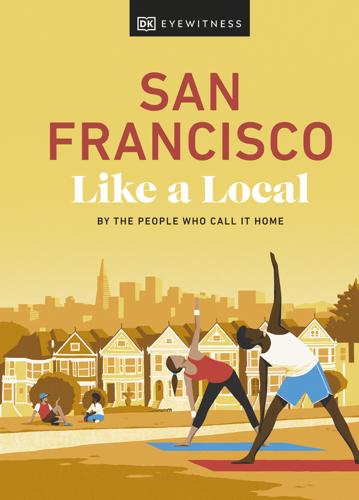
San Francisco Like a Local: By the People Who Call It Home
by
Dk Eyewitness
Published 5 Apr 2023
Whether you’re a San Franciscan eager to rediscover your home or a visitor looking for the parts that don’t make it into guidebooks, we’ll show you the real city. So strap in, and see SF like a local. San Francisco | Welcome To The City Liked by the locals “The great joy of San Francisco is its contrasts: where ancient forest sits side by side with a city forging the future, and the excitement of a world-class capital meets the convenience and quirkiness of a small town.” LAURA CHUBB, JOURNALIST AND COPYWRITER g Contents San Francisco THROUGH THE YEAR From joyful parades in the summer to festive fun in the winter, there’s a cause for celebration with the dawn of each new season in San Francisco. SPRING STREET FOOD MARKETS As the winter rain eases in March, locals start to brave the outdoors.
…
{map 1} Pacific Heights Only celebrities and tech CEOs can afford to live in the mansions of SF’s most expensive ocean-view neighborhood. But we can look (and dream). {map 5} The Richmond The residential avenues of Richmond border Golden Gate Park and stretch to Ocean Beach. Here, a diverse mix of locals have transformed this outpost into a foodie haven. {map 5} SOMA SoMa stands for “South of Market” and scoops up the area – wait for it – south of Market Street. Start-up workers flock to the new-builds of this downtown site, where warehouse nightclubs and trendy restaurants sit uncomfortably alongside homeless encampments. {map 3} The Sunset Perennially described as “Surfie,” the Sunset district is certainly chilled-out, but don’t expect sultry LA vibes: proximity to Ocean Beach makes it the foggiest area in town.
…
Simply download the free what3words app, type a what3words address into the search bar, and you’ll know exactly where to go. TRANSIT Your local transit advice San Francisco mightn’t have a cohesive public transportation system, but it does have a cohesive public transportation app. Transit predicts all bus and train arrivals, and calculates time and cost comparisons between Lyft’s rideshares and bike shares (provided there are Bay Wheels docks in your area). g Contents San Francisco NEIGHBORHOODS San Francisco is a patchwork of mini-neighborhoods, each with its own distinct look and personality. Here we look at some of our favorites.
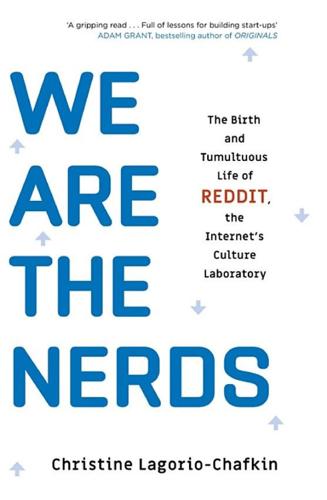
We Are the Nerds: The Birth and Tumultuous Life of Reddit, the Internet's Culture Laboratory
by
Christine Lagorio-Chafkin
Published 1 Oct 2018
Do you have time for a phone call? Also, are you based in Boston? You Are Making Us Sound Stupid After repeatedly Googling “Condé Nast,” Huffman, Ohanian, Slowe, and Swartz boarded a flight in early March 2006 to San Francisco to meet with Karimkhany. They rented a car and stayed with friends in the South Bay. None of them had spent much time in San Francisco, and they got turned around on one-way streets around Wired’s South of Market office. They found parking with just minutes to spare. The Wired office was just as awesome as they’d anticipated. Karimkhany showed them the “beer robot” (basically a small kegerator) and “The Berlin Hall,” which separated magazine staff from all the tech and online folks, and they were invited to try the arcade-style machines in the game room.
…
One was the crazy-long commute, from Burlingame to South of Market in San Francisco, and parking there every day. Altman suggested that instead of spending hours a day in his Tesla, perhaps Wong should expense an Uber every time and be able to open up his laptop, get through emails, start chipping away at his day instead of having idle time. Wong couldn’t. His carsickness was too severe. Wong fixated on the logistics of his commute as the root of all of his problems. Reddit needed a new office; why not make the office come to him? Commercial real estate in San Francisco was pushing $100 per square foot, which seemed unsustainable.
…
They’d have to live with the dark gray endurance carpeting, but the rest of the space was nice; finally they had their own little kitchen, a café area with communal seating, and a television with multiple video-game systems. And it was not in nowheresville Daly City but rather in the heart of San Francisco’s startup-saturated South of Market neighborhood. Y Combinator’s own San Francisco office was within walking distance. Pao had also negated the possibility that she’d ever get burnt out by commuting, as Wong had. Ellen Pao’s own home, in the St. Regis, was a single city block away. 10 On June 23, 2015, Reddit celebrated its ten-year anniversary.
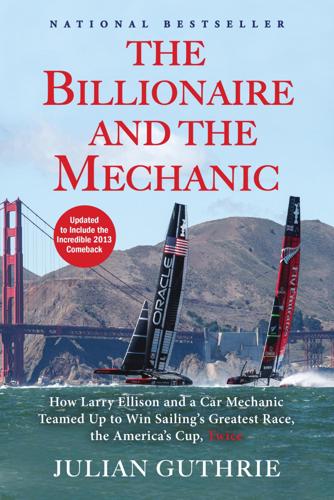
The Billionaire and the Mechanic: How Larry Ellison and a Car Mechanic Teamed Up to Win Sailing's Greatest Race, the Americas Cup, Twice
by
Julian Guthrie
Published 31 Mar 2014
Published simultaneously in Canada Printed in the United States of America ISBN: 978-0-8021-2136-3 eISBN: 978-0-8021-9331-5 Grove Press an imprint of Grove/Atlantic, Inc. 154 West 14th Street New York, NY 10011 Distributed by Publishers Group West www.groveatlantic.com Dedicated to Larry and Norbert Contents PART I 1. The Southern Ocean 2. Radiator Repair Shop in San Francisco 3. The Island of Antigua 4. San Francisco Marina 5. Woodside, California 6. St. Francis Yacht Club 7. The Golden Gate Yacht Club 8. The Golden Gate Yacht Club PART II 9. The Hills of Santa Barbara 10. Atherton, California 11. San Francisco to New Zealand 12. Oracle Base Camp 13. Redwood Shores, California 14. San Francisco Bay 15. Newport, Rhode Island 16. Valencia, Spain 17. South of Market, San Francisco 18. Valencia, Spain PART III 19. Woodside, California 20. Woodside, California 21.
…
AUTHOR’S NOTE AUTHOR’S NOTE Table of Contents Cover Praise for The Billionaire and the Mechanic THE BILLIONAIRE AND THE MECHANIC Also by Julian Guthrie Title Page Copyright Page Dedication Contents PART I 1 The Southern Ocean 2 Radiator Repair Shop in San Francisco 3 The Island of Antigua 4 San Francisco Marina 5 Woodside, California 6 St. Francis Yacht Club 7 The Golden Gate Yacht Club 8 The Golden Gate Yacht Club PART II 9 The Hills of Santa Barbara 10 Atherton, California 11 San Francisco to New Zealand 12 Oracle Base Camp 13 Redwood Shores, California 14 San Francisco Bay 15 Newport, Rhode Island 16 Valencia, Spain 17 South of Market, San Francisco PHOTO INSERT 18 Valencia, Spain PART III 19 Woodside, California 20 Woodside, California 21 Bangkok, Thailand, to Cagliari, Italy 22 Anacortes, Washington 23 San Diego, California 24 Valencia, Spain 25 Valencia to San Francisco 26 Rancho Mirage, California 27Moscone Center, San Francisco 28 Alouis Radiators, San Francisco 29 Stanford University, California PART IV 30 San Francisco Bay 31 The 34th America's Cup-A Very Rough Start 32 The Comeback Epilogue The 35th America's Cup Appendix The America's Cup Races Authors Note Acknowledgments Back Cover
…
The teams represented a dazzling array of talent and countries, from Italy, South Africa, New Zealand, France, Sweden, and Spain to Germany and China. 17 South of Market, San Francisco Spring 2006 IN THE SPRING of 2006 Norbert received a call out of the blue from Terry Anderlini, a friend and former commodore of the St. Francis. “Hey, Norbert, can we talk?” Anderlini asked. “What’s it about?” Norbert said, on his way home from work. “Let’s talk when we meet,” Anderlini said cryptically. “And let’s go somewhere besides our yacht clubs.” The next day, Norbert headed to the South of Market area to meet Anderlini and Terry Klaus, another former St. Francis commodore.

Golden Gates: Fighting for Housing in America
by
Conor Dougherty
Published 18 Feb 2020
Dorms, shift sleep, converted garages, streets of campers, live-in cars: all the totems of a housing shortage were there, and the surge of welcome-back peace babies, which followed the surge in goodbye war babies, would only make things worse. In 1947, two years after the war ended, San Francisco’s district attorney, Edmund G. Brown, whom everyone called Pat, commissioned a report on the city’s living conditions. The report cited rats in South of Market rooming houses and the sight of Chinatown families huddled into “dark cubicles.” Nearby in North Beach, a sick-looking family of seven occupied a damp and crowded apartment whose rigged-up wiring seemed destined to be the origin of a future and tragic fire.
…
Sonja was running to represent District Six, which was the unofficial repository of San Francisco’s biggest problems and a symbol of the third-world-grade inequality the American economy had become. On one side was the Tenderloin, a neighborhood that had the country’s largest concentration of single-room occupancy hotels and was the site of open-air heroin use and blocks of people with tattered clothes and shredded shoes sleeping on sidewalks smeared with human shit and orange needle caps. On the other side was South of Market, which had towering glass condos and the headquarters of Salesforce and Airbnb.
…
Francis Square, 72 salaries, see incomes, salaries and wages Salesforce, 187, 201 Sanders, Bernie, 129 San Francisco, 129 San Francisco Bay Area, xiv–xv San Francisco Board of Supervisors, 78, 79, 117, 119, 123, 131, 136 SB 827 and, 194 Trauss’s campaign for, 186–88, 194, 195–202, 216–26 San Francisco Call Bulletin, 65 San Francisco Chamber of Commerce, 120 San Francisco Chronicle, 35, 79, 218 San Francisco Ethics Commission, 105–6 San Francisco Planning Commission, 1, 12, 26 San Francisco politics, 123, 125, 201 election structure and, 119 moderates in, 118–20 progressives in, 119–20, 122, 127, 129 San Francisco Tenants Union, 31, 33, 104, 120 San Jose, Calif., 40 San Leandro, Calif., 23–24, 77 San Mateo County Board of Supervisors, 181 Saturday Evening Post, 68 Save Lafayette, 101–2, 107, 113–14 Saver, Daniel, 48–50, 54, 56–58, 180, 181, 204 Save the Bay, 79 Schumacher, E.
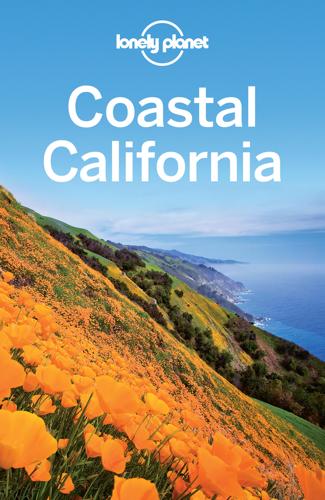
Coastal California
by
Lonely Planet
Fast Facts »Population 805,235 »Area 7 square miles »Telephone area code 415 Planning Your Trip »Three weeks before Book Alcatraz trips and dinner at Coi or Frances. »Two weeks before Build stamina for downtown hills, South of Market (SoMa) galleries and Mission bars. »One week before Score tickets to San Francisco Symphony or Opera, and assemble your costume – SF throws parades whenever. Resources »SF Bay Guardian (www.sfbg.com) Hot tips on local entertainment, arts, politics. »SFGate (www.sfgate.com) News and event listings. San Francisco Highlights Make yourself at home where the buffalo roam in Golden Gate Park (Click here) Reach new artistic heights at the San Francisco Museum of Modern Art (Click here) rooftop sculpture garden Watch fog dance atop the deco towers of the Golden Gate Bridge (Click here) Graze the Ferry Building (Click here), SF’s local, sustainable foodie destination Plot your escape from Alcatraz (Click here), SF’s notorious island prison Discover unlikely urban marine life along Fisherman’s Wharf (Click here): sea lions, sharks, and a WWII submarine Unwind in Japanese baths and catch film screenings in Japantown (Click here) Get breathless from the climb, murals and panoramic views at Coit Tower (Click here) Wander through 150 years of California history in pagoda-topped Chinatown (Click here) History Oysters and acorn bread were prime dinner options in the Mexico-run Ohlone settlement of San Francisco circa 1848 – but a year and some gold nuggets later, Champagne and chow mein were served by the bucket.
…
CHINATOWN Li Po BAR (916 Grant Ave; 2pm-2am) Enter the grotto doorway and get the once-over by the dusty Buddha as you slide into red vinyl booths beloved of Beats for beer or Chinese Mai Tai, made with baiju (rice liquor). GAY/LESBIAN/BI/TRANS SAN FRANCISCO Singling out the best places to be queer in San Francisco is almost redundant. Though the Castro is a gay hub and the Mission is a magnet for lesbians, the entire city is gay-friendly – hence the number of out elected representatives in City Hall at any given time. New York Marys may label SF the retirement home of the young – indeed, the sidewalks roll up early – but for sexual outlaws and underground weirdness, SF trounces New York. Dancing queens and slutty boys head South of Market (SoMa), the location of most thump-thump clubs.
…
Fort Point HISTORIC BUILDING ( 415-561-4395; www.nps.gov/fopo; Marine Dr; 10am-5pm Thu-Mon) Despite its impressive guns, this Civil War fort saw no action – at least until Alfred Hitchcock shot scenes from Vertigo here, with stunning views of the Golden Gate Bridge from below. Baker Beach BEACH The city’s best beach, with windswept pines uphill, craggy cliffs and a whole lot of exposed goosebumps on the breezy, clothing-optional north end. SOUTH OF MARKET (SOMA) San Francisco Museum of Modern Art MUSEUM (SFMOMA; Click here ; 415-357-4000; www.sfmoma.org; 151 3rd St; adult/student/child $18/11/free, first Tue of month free; 11am-6pm Fri-Tue, to 9pm Thu) Swiss architect Mario Botta’s light-filled brick box leans full-tilt toward the horizon, with curators similarly inclined to take forward-thinking risks on Matthew Barney’s poetic videos involving industrial quantities of Vaseline and Olafur Eliasson’s outer-space light installations.
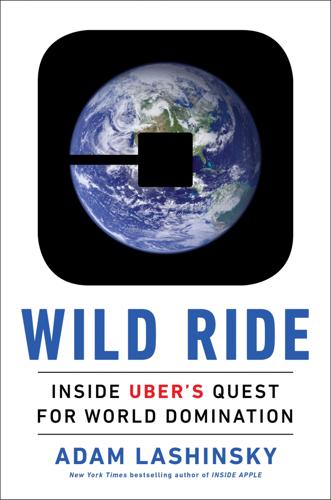
Wild Ride: Inside Uber's Quest for World Domination
by
Adam Lashinsky
Published 31 Mar 2017
The entire “seed” round for UberCab’s first investment, led by First Round and also including Chris Sacca’s fund, Lowercase Capital, and a smattering of San Francisco angel investors, was $1.25 million and valued Uber at $4 million, not including the new money. Just a few years later such an amount would prove to be less than a rounding error for Uber. First Round, a firm that invests only in seed rounds, wrote a check for $450,000. The bet would net the firm billions in return. Money in hand, Kalanick had finally concluded that it was time to go to work for UberCab, which had moved into the offices of First Round Capital, in San Francisco’s South of Market neighborhood. There was only one job that interested Kalanick, however, and Ryan Graves was doing it.
…
Holidays would prove to be significant inflection points for Uber, for both good and ill, during that first year of operations. Rob Hayes, the seed-round investor from First Round Capital, had a bird’s-eye view of Uber’s early development. For several months in late 2010 the company had moved into his firm’s offices in San Francisco’s South of Market neighborhood. Kalanick’s desk was nearby, and the two spoke frequently. “Growth was just torrid those first few months,” says Hayes. “And then Thanksgiving happened, and growth fell off a cliff. Travis had this chart that showed growth in rides. And there was this huge dip for the whole week of Thanksgiving.
…
A large handful of smaller Internet companies, most with some connection to media or advertising technology, had formed in San Francisco during the dot-com bubble of the late 1990s. Most vanished just as quickly. Then, in the depth of one of the tech industry’s periodic down cycles, something changed. One new software company, Salesforce.com, grew rapidly in San Francisco, primarily because of its founder’s preference for urban living. Then, as Google and other tech giants began offering free, Wi-Fi-enabled shuttle buses to the suburbs in order to appeal to younger city dwellers, San Francisco enjoyed a resurgence. Once that happened, more companies sprang up there.
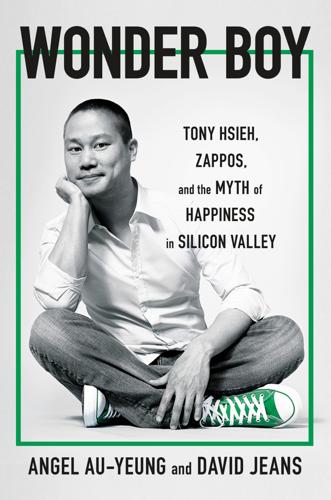
Wonder Boy: Tony Hsieh, Zappos, and the Myth of Happiness in Silicon Valley
by
Angel Au-Yeung
and
David Jeans
Published 25 Apr 2023
Despite losing $2,000 in his pizza business at Harvard, she was open to hearing another pitch from him. This time she agreed to provide a $200,000 seed investment. Five months after they started in Tony and Sanjay’s living room, LinkExchange had grown into an office on Second Street, in San Francisco’s South of Market district, with fifteen employees. Looking around, Tony could see that with every new hire, he was recreating the magic of his Harvard dorm room. LinkExchange was becoming a hub for all his friends to be in one place. If everyone got along and had fun, he figured, they would work hard, play hard, and succeed.
…
“Let’s just say they kind of liked to explore the boundaries,” said the friend. On a weekly basis, Tony and his group were attending warehouse raves or going to nightclubs. Some friends recalled what felt like endless nights at 1015 Folsom, a nondescript building in a then-seedy part of San Francisco’s South of Market. On any given Friday, two chaotic dance floors were illuminated with strobe lights and lasers flickering around the windowless club, piercing the faux fog. The floor would be covered with sweat, spilled drinks, and empty beer cans. As bouncers bottlenecked the line snaking from the entrance doors out on the sidewalk, Tony and his friends were getting lost in the rhythm of techno inside.
…
Asked about the investment a decade later, he wrote, “That was just a small investment and one among over a hundred from that time period—I met him via Tony whom I knew through friends in technology founder circles.” Just as Tony had launched Zappos from his condo in 1000 Van Ness, Lux Delux’s product and engineering operations were primarily based out of Andy’s San Francisco apartment in the South of Market district, a part of town that had started attracting new tech talent and companies like Airbnb and Zynga. His two-bedroom loft had an open-plan kitchen and dining room, framed by floor-to-ceiling windows overlooking the neighborhood. But unlike Tony, who likely knew how to code better than all the engineers at Zappos combined, Andy did not bring any software engineering expertise to his work.

Whole Earth: The Many Lives of Stewart Brand
by
John Markoff
Published 22 Mar 2022
At the time, Kirkland was living in San Francisco’s seedy South of Market neighborhood while attending the San Francisco Art Institute. She was also heavily into the burgeoning Bay Area punk rock scene. Her hair was pink; she wore combat boots; and her skirt ended substantially above her thigh. She started telling him about the concerts she’d attended, and Brand asked if she would take him. Soon thereafter he accompanied Kirkland and another Quarterly staffer to hear the Dead Kennedys at Temple Beautiful, an abandoned synagogue that had been adopted by the punk scene. Brand had helped create the original San Francisco acid rock scene in the sixties.
…
After several newspaper accounts appeared, Moore was besieged with financial requests by both phone and mail. And like Frodo’s ring, the money wouldn’t stay in the ground. Moore was soon forcibly turned into a “people’s banker” when a small group of San Francisco activists who were engaged in building a collective in a warehouse in a tattered neighborhood south of Market Street heard about the windfall. Project One encompassed a diverse set of community political projects, ranging from education to organizing to the theater to one of the first community time-sharing computer efforts, which was called Resource One and had become the final resting place for Doug Engelbart’s original SDS-940 mainframe computer, on which he had developed his oNLine System—as luck would have it, ultimately paid for with a grant from a foundation created from money generated by the Catalog.
…
, A (Leach), 165 Russell, Steve, 84 S Saffo, Paul, 315, 325, 330, 356 Safra, Jacqui, 325, 328, 331 Sagan, Carl, 224 Saginaw, Mich., 7, 8–9 SAIL (Stanford Artificial Intelligence Laboratory), 83, 146, 147–48, 211–12 sailing, SB’s interest in, 69–70, 242 Saint-Exupéry, Antoine de, 119 Salisbury, Harrison, 200 Saltonstall, William Gurdon, 17 Sampson, Donald, 12, 37, 60, 67 Sandberg-Diment, Erik, 259 Sand County Almanac (Leopold), 349 San Francisco, Calif.: Summer of Love in, 2, 75, 128 see also Haight-Ashbury; North Beach San Francisco Art Institute, 68, 69, 70, 90, 118, 323 San Francisco Chronicle, 48, 94–95, 119, 135, 258, 303, 318 San Francisco Mime Troupe, 124, 125, 127, 206 San Francisco Museum of Modern Art, 93–95 San Francisco State University, 68, 69, 70, 141, 142, 145, 149, 174 San Francisco Tape Music Center, 94 San Francisco Zen Center, 203, 208, 210, 247–48, 250, 313 Santa Fe, N.Mex., 110, 116 Santa Fe Institute, 304, 321, 324 Sausalito, Calif., 299 SB’s homes and offices in, 69, 221, 234, 242, 243–45, 276, 302, 329 see also Mirene waterfront community of, 69, 244–45, 246, 280, 294, 299, 307 Savage, Charles, 78, 103 Savage, Melissa, 203, 205–6, 207, 210 Save the Whales, 204, 206, 227 scenario planning, 273, 277, 285, 295, 296, 297–98 Schell, Orville, 225, 226, 299 Schneider, Stephen, 339 Schumacher, E.
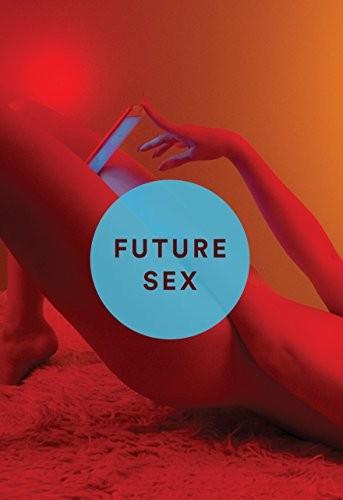
Future Sex
by
Emily Witt
Published 10 Oct 2016
Once a week, OneTaste therefore offered an open house, where curious members of the public could meet practitioners of what the organization called orgasmic meditation, or OM-ing, in a casual and friendly setting, without any of the actual orgasms or meditating. Advertised as “A room of people (cool, fun people) engaged in honest, humorous, playful conversation around topics we mostly only consider having in our head,” the meetings were held every Wednesday evening at OneTaste’s small headquarters on Moss Street, a secluded back alley in San Francisco’s South of Market district. The building was a squat two-story former warehouse, its exterior painted a neutral gray, its front a façade of frosted glass windows. A velvet curtain shielded the front door from the view of the street, and entrances were monitored by beaming members of the organization, who greeted newcomers with the confidence and searching eye contact characteristic of all purveyors of conversion experiences.
…
She was originally from Kansas City but had most recently been living in New York. She had only just moved to San Francisco. She worked in public relations. She was white, had long brown hair and a full figure, and wore a knit dress. Her looks and dress would have been visually congruent in a vast array of settings: she would not have stuck out at a church in Kansas City, or in a bar in Midtown Manhattan, or at a Whole Foods in Austin, or on a back patio in Atlanta, and nor did she stick out in an orgasmic meditation information session in San Francisco. We compared New York and San Francisco, agreeing that the latter’s slower pace and manageable size had its advantages.
…
I hoped the primacy and legitimacy of a single sexual model would continue to erode as it has, with increasing acceleration, in the past fifty years. * * * I spent only a few months in San Francisco, but the city just happened to be a synecdoche, where the post-1960s combination of computers and sexual diversity was especially concentrated. It was like Epcot, in a way, an experimental prototype city of tomorrow informed by queerness and dedicated to sexual experimentation. You could tour it and leave with a showcase world of sexual options in mind. I first went to San Francisco in 2012. Then I left. When I returned a couple years later, San Francisco felt different. Nobody wore Google T-shirts anymore. Protesters had begun throwing rocks at the buses that took employees down to the peninsula.
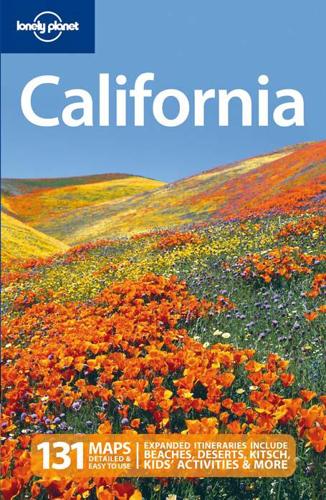
California
by
Sara Benson
Published 15 Oct 2010
Return to beginning of chapter ORIENTATION San Francisco may loom large in the imagination, but it’s just the tip of a 30-mile-long peninsula with the Pacific Ocean on one side and San Francisco Bay on the other. True to the spirit of the city, San Francisco’s main Market St thoroughfare is a contrarian streak that runs diagonally across the otherwise tidy grid of east–west city streets. North of this dividing line past Van Ness Ave is Civic Center and the Tenderloin, Union Sq, the Financial District, Chinatown, North Beach, Nob Hill, Russian Hill and Fisherman’s Wharf. SoMa (South of Market) fades around Van Ness into the Mission, which blends into the Castro around Church St. The scenery gets weirder and wilder north of Market from Van Ness on out to the Pacific Ocean.
…
* * * GAY/LESBIAN/BI/TRANS SAN FRANCISCO Singling out the best places to be queer in San Francisco (SF) is almost redundant. Though the Castro is a major gay center and the Mission is a magnet for lesbians, the entire city is known for being gay-friendly – hence the number of out elected representatives in City Hall at any given time. Nightlife is fabulous here. New York Marys may label SF the retirement home of the young – indeed, the sidewalks roll up early – but when it comes to sexual outlaws and underground weirdness, SF kicks New York’s ass. Dancing queens and slutty boys head South of Market (SoMa), the location of most thump-thump clubs and sex venues.
…
Further along the ocean side of the peninsula is Baker Beach (Map), the city’s best beach with windswept pines uphill, craggy good looks along the cliffs and a whole lot of exposed goosebumps on the breezy, clothing-optional north end of the beach. South of Market (SoMa) Don’t let the tony high-rises and poker-faced warehouses fool you: SoMa is scattered with outrageous art venues, adventurous dining and anything-goes after-hours clubs. The city is buzzing over the ever-expanding collection of museums and galleries around Yerba Buena Gardens and anchored by the San Francisco Museum of Modern Art (SFMOMA; Map; 415-357-4000; www.sfmoma.org; 151 3rd St; adult/child/student/senior $12.50/free/7/8; 11am-5:45pm Mon, Tue & Fri-Sun, to 8:45pm Thu Sep-Apr, 10am-5:45pm Mon, Tue & Fri, to 9:45pm Thu, to 7:45pm Sat & Sun May-Aug).
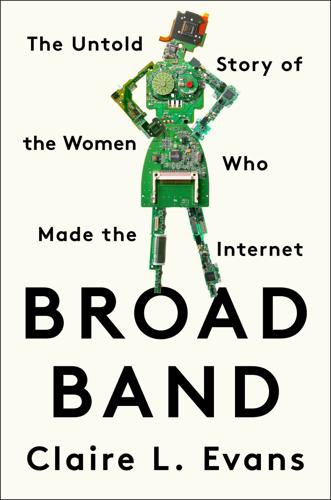
Broad Band: The Untold Story of the Women Who Made the Internet
by
Claire L. Evans
Published 6 Mar 2018
As I divest myself of my wet outer layers, they look up cheerily from their conversation. They’ve been catching up. Only recently have they reconnected with one another, but forty years ago, alongside a hundred other dreamers, hippies, and iconoclasts, they all lived together in a technological commune in San Francisco called Project One. They’ll explain to me that Project One was a mustard-yellow warehouse South of Market. Inside its eighty-four thousand square feet of interlinked habitations, they slept in hand-built bays one hundred feet wide and gathered for community meetings on the fifth floor that often ended in shouting matches and tears, or music and laughter, depending on the day.
…
Since its interface was a three-ring binder rather than a Teletype terminal, its true nature as a digital object remained invisible to all but those who maintained it, although the database was printed out only for the benefit of those without “access to tools.” Today, in the former warehouse district South of Market, buildings are still full of young people, hard at work on their vision of tomorrow. They call it SoMa now. Nobody’s bumming rides—these days, the cars drive themselves. Instead of one computer, its tonnage rivaling the rooftop boiler whose installation most Project One graduates remember with equal clarity, there are computers in every pocket and on every desk. There are light bulbs South of Market smarter than the Resource One computer. The brightest minds in computer science are still here—or the most privileged, anyway—but now they’re refining algorithms to sell goods and services on a network their hippie forebears could only have imagined, long haired and pointing to the box (it’s an electronic bulletin board, they said; it’ll help us with the revolution, they said).
…
The Berkeley Barb ran back-page ads for resistance organizations, and a group called the Haight-Ashbury Switchboard had even built a sophisticated phone tree in the late 1960s, linking human “switchboards” to one another to help distraught families track down their wandering hippie kids. This grew into an informal network of interest-specific Switchboards in the Bay Area, one of which, the San Francisco Switchboard, had offices at Project One. With a couple of phones and boxes of index cards, it coordinated extensive group action for quick-response incidents like the 1971 San Francisco Bay oil spill—an early version of the kind of organizing that happens so easily today on social media. Resource One took up where these efforts left off, even inheriting the San Francisco Switchboard’s corporate shell. When Pam and the Chrises moved into the warehouse, their plan was to design a common information retrieval system for all the existing Switchboards in the city, interlinking their various resources into a database running on borrowed computer time.

Valley of Genius: The Uncensored History of Silicon Valley (As Told by the Hackers, Founders, and Freaks Who Made It Boom)
by
Adam Fisher
Published 9 Jul 2018
The joke used to be at the time, this being ’97 through 2000—the golden era—was basically all you had to do was stand at the corner with a cocktail napkin, and VCs would throw money at you from a passing car. I loved it. The dot-com scene was clustered around South Park, a seedy neighborhood park in San Francisco’s industrial South of Market district. Wired magazine had its headquarters on the park, as did many of the most notable dot-com companies. Steve Perlman: South Park is this small little oval-shaped park that’s largely grassy except for a few swings and a couple of picnic tables. Yves Béhar: I had either lived or worked on South Park since 1993.
…
That’s the point where it shifted: when the engineers were treated as valuable as they really are. Ev Williams: One of the interesting shifts that has happened is the move to San Francisco. Silicon Valley until the dot-com boom wasn’t in San Francisco. It was in Palo Alto and Mountain View, because tech companies weren’t built in the City. Steve Wozniak: The hardware industry has sort of settled down and all the new things that catch our attention—the apps and Ubers—they’ve kind of chosen to move up to San Francisco. Silicon Valley includes San Francisco now. Biz Stone: San Francisco is the cool place to be. Ev Williams: My theory is that as these tech companies have become more culture makers, then they gravitate toward the City, because that is who makes culture—people who live in cities.
…
They built satellites and stuff and what was happening up in San Francisco just didn’t make sense to them. They were like, “What’s their technology?” They were like, “HTML? It’s not like you can build a company on that!” And so they were like, “They’re not that hard-core.” John Markoff: The San Francisco scene really emerged with the web. Tiffany Shlain: At the time there were only sixteen million people online—and a lot of them were in San Francisco making and creating this nascent medium. It was so exciting. Fred Davis: So, why did the internet get started in San Francisco? Why did that become the center of all the internet things?
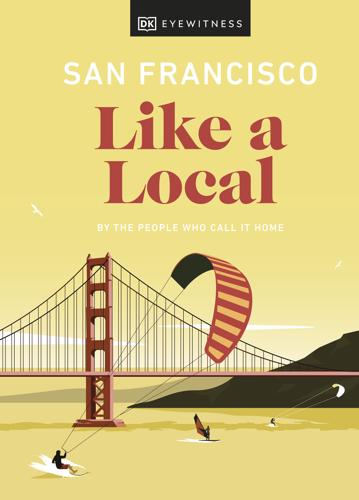
San Francisco Like a Local
by
DK Eyewitness
Published 4 Oct 2021
Whether you’re a San Franciscan keen to rediscover your home, or a visitor looking for the bits that don’t make it into guidebooks, we’ll show you the real city. So strap in, and see SF like a local. San Francisco | Welcome To The City Liked by the locals “The great joy of San Francisco is its contrasts: where ancient forest sits side by side with a city forging the future, and the excitement of a world-class capital meets the convenience and quirkiness of a small town.” LAURA CHUBB, JOURNALIST AND COPYWRITER g Contents San Francisco THROUGH THE YEAR From joyful parades in the summer to festive fun in the winter, there’s a cause for celebration with the dawn of each new season in San Francisco. SPRING STREET FOOD MARKETS As the winter rain eases in March, locals start to brave the outdoors.
…
Simply download the free what3words app, type a what3words address into the search bar, and you’ll know exactly where to go. TRANSIT Your local transit advice San Francisco mightn’t have a cohesive public transportation system, but it does have a cohesive public transportation app. Transit predicts all bus and train arrivals, and calculates time and cost comparisons between Lyft’s rideshares and bikeshares (provided there are Bay Wheels docks in your area). g Contents San Francisco NEIGHBORHOODS San Francisco is a patchwork of mini-neighborhoods, each with its own distinct look and personality. Here we look at some of our favorites.
…
g Contents MAPS MAP 1 MAP 2 MAP 3 MAP 4 MAP 5 MAP 6 g Maps g Contents ← MAP 1 → n Double-tap image to read the labels EAT Angler Bini’s Kitchen The Flying Falafel House of Nanking Humphry Slocombe The Italian Homemade Company Mister Jiu’s Rooster & Rice DRINK 620 Jones Amelie Blue Bottle Coffee Bourbon & Branch Buena Vista Cafe Comstock Saloon Contraband Coffee Bar Li Po Cocktail Lounge Pacific Cocktail Haven Resolute Tonga Room & Hurricane Bar Top of the Mark Union Larder SHOP City Lights Booksellers & Publishers Jay Jeffers – The Studio Molte Cose & Belle Cose Out of the Closet ReLove ARTS & CULTURE American Conservatory Theater The Beat Museum Chinese Historical Society of America Museum Curran Et Al. Exploratorium Good Vibrations Grace Cathedral Musée Méchanique Language of the Birds Rincon Center Murals San Francisco Cable Car Museum San Francisco Playhouse SF Masonic NIGHTLIFE Best of San Francisco Stand-Up Comedy Cheaper Than Therapy Cobb’s Comedy Club Punch Line Secret Improv Society OUTDOORS Embarcadero Center Steps Filbert Street Stairs Greenwich Stairs Rooftop Tai Chi g Maps g Contents ← MAP 2 → n Double-tap image to read the labels EAT Miyako’s Old-Fashioned Ice Cream Shop Nari Nightbird Rich Table State Bird Provisions The Progress Zuni Cafe DRINK Magnolia Brewing Last Rites Twin Peaks Tavern Smuggler’s Cove SHOP Amoeba Music Booksmith Bound Together Anarchist Collective Bookstore Grooves Inspiralled Vinyl Kenneth Wingard Local Take Marine Layer Originals Vinyl Relic Vintage Rooky Ricardo’s Records Vinyl Dreams The Wasteland ARTS & CULTURE African American Art & Culture Complex GLBT Historical Society Museum Haight-Ashbury Clock Lorraine Hansberry Theater Rainbow Honor Walk NIGHTLIFE Beaux Boom Boom Room Castro Theatre The Fillmore Hi Tops The Independent Lookout Madrone Art Bar The Mix New People Cinema Open Mic at Cafe International Poetry at the Sacred Grounds Sheba Piano Lounge OUTDOORS The Castro to Twin Peaks Corona Heights Park Mission Dolores Park Vulcan Steps g Maps g Contents ← MAP 3 → n Double-tap image to read the labels EAT Benu Brenda’s French Soul Food In Situ Kin Khao Niku Steakhouse Rintaro STEM Kitchen & Garden DRINK 21st Amendment Brewery & Restaurant Anchor Public Taps B Restaurant & Bar Black Hammer Brewing Charmaine’s Rooftop Bar & Lounge Dirty Habit Press Club Sightglass Coffee Terroir Whitechapel SHOP BaBoo McGuire Furniture Zozi’s Loft ARTS & CULTURE Catharine Clark Gallery Luggage Store Gallery Museum of the African Diaspora New Conservatory Theatre Center Sea Change Kinetic Sculpture SOMArts Cultural Center SFMOMA Tenderloin Museum Nightlife AMC Metreon 16 Asia SF Audio Black Cat Bawdy Storytelling Butter Cat Club The EndUp Great American Music Hall Moad Open Mic Mortified Live OASIS PianoFight Raven Bar Rickshaw Stop The Setup SF Eagle Temple OUTDOORS Kayaking Tours Sailing Trips g Maps g Contents ← MAP 4 → n Double-tap image to read the labels EAT AL’s Place Blue Plate Californios Craftsman and Wolves Eterna Primavera Flour + Water Foreign Cinema Gracias Madre Lazy Bear Liholiho Yacht Club Peaches Patties Taqueria Cancun Tartine Bakery DRINK Barebottle Brewing The Beehive El Techo de Lolinda Fort Point Valenica The Monk’s Kettle Philz Coffee The Sycamore Trick Dog True Laurel Wild Side West SHOP Betabrand Community Thrift Dog Eared Books Gravel & Gold Heath Ceramics Nooworks Omnivore Books On Food Stranded Thrillhouse Records Tigerlily Perfumery Timbuk2 Factory Store ARTS & CULTURE Creativity Explored The Marsh Mission Murals Peephole Cinema Theatre of Yugen Nightlife Alamo Drafthouse The Chapel The Knockout Manny’s Other Cinema Roxie Theater Stage Werx UHAUL SF Writers with Drinks OUTDOORS Bernal Heights Park Kadampa Meditation Center SF g Maps g Contents ← MAP 5 → n Double-tap image to read the labels EAT Atelier Crenn Breadbelly B Star Bar Jane on Fillmore KAIYŌ Pizzetta 211 Salt & Straw Wildseed DRINK California Wine Merchant High Treason SHOP Green Apple Books Inner Sunset Flea March ARTS & CULTURE Andy Goldsworthy Sculptures California Academy of Sciences St.
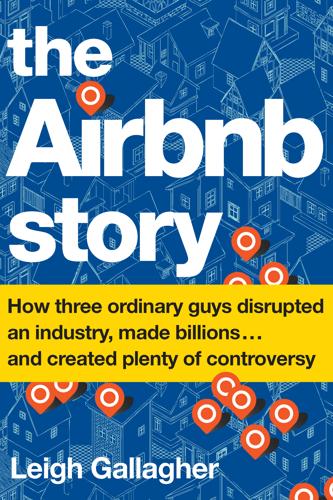
The Airbnb Story: How Three Ordinary Guys Disrupted an Industry, Made Billions...and Created Plenty of Controversy
by
Leigh Gallagher
Published 14 Feb 2017
“I felt my life was, like, I was in a car, and I could see the road disappearing into the horizon in front of me, and I could see the same view in the rearview mirror,” he later told Sarah Lacy, the technology journalist and founder of PandoDaily, in a fireside chat in 2013. “It was, like, ‘Oh, this is all I’ll end up doing. I guess it wasn’t like they said it would be at RISD.’” Meanwhile, Gebbia had finished up at RISD and eventually moved to San Francisco, where he was working as a graphic designer for Chronicle Books and living in a three-bedroom apartment on Rausch Street in the city’s South of Market district. He’d also tried his hand at entrepreneurialism, attempting to launch a line of seat cushions he’d designed at RISD. Conceived for art school students as a comfortable seat when sitting through famously lengthy critiques, or “crits,” they were cheekily called CritBuns and designed in the shape of rear ends.
…
ISBN 978-0-544-95266-9 Cover design by Michaela Sullivan Cover illustrations © Getty Images Author photograph © Christos Karantzolas eISBN 978-0-544-95387-1 v1.0117 For Gil, Zeb, Anna, Noa, and Ava, the ultimate home sharers Introduction * * * * * * BRIAN CHESKY AND I were sitting across from each other in the velvet, high-backed, regal-feeling chairs of the lobby bar of the Fairmont San Francisco hotel. It was early November 2015, and we were there so that I could talk to him about the idea of writing a book about his company, the “home-sharing” platform Airbnb, to use the phrase the company has been so successful at popularizing. There was some irony in the fact that we were at a hotel, and not just any hotel: this was the exact venue that hosted the international design conference in 2007 that had maxed out San Francisco’s hotel supply and had given Chesky and his cofounder Joe Gebbia their goofy idea to rent out air mattresses on the floor of their three-bedroom apartment in the South of Market district.
…
(“It was a subtle nudge,” Gebbia says. “It was a reminder: Don’t forget. We could potentially be creating things too.”) It was enough to get Chesky to start looking around for jobs in San Francisco. In early 2007, he heard about a job opening at Method, then a fast-growing home-products company with a focus on sustainability and award-winning packaging. Chesky thought this could be his answer: it would get him to San Francisco, and it was a design-oriented company whose values were much more in line with his own. He went far in the interview process: he went through multiple rounds of interviews, completed a design challenge, and presented in front of a panel of five executives, getting more and more excited about the opportunity at every step.
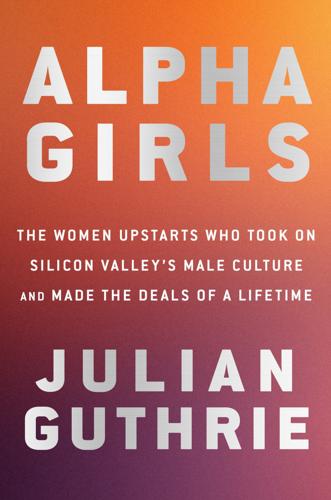
Alpha Girls: The Women Upstarts Who Took on Silicon Valley's Male Culture and Made the Deals of a Lifetime
by
Julian Guthrie
Published 15 Nov 2019
The Menlo partners were starting a new fund—Fund XI—which was often a time of transition, when younger partners moved up and were given more equity, and older partners sometimes pulled back and reduced their percentage of the profits. Sonja needed to make her health her top priority. She proposed to the Menlo partners that she work part-time. From her viewpoint, the timing was ideal: Venture firms and tech start-ups were opening offices in San Francisco almost every day, turning areas like South Park, in the bustling South of Market neighborhood, into mini Sand Hill Roads. Sonja also thought she could save time on the commute—more than two hours a day—by working remotely. She had been with Menlo Ventures for nearly seventeen years. Her investments had brought hundreds of millions of dollars to the firm and created a number of legacy companies.
…
Combined, the two women had created $10 billion in public market value, helped lead fifteen merger and acquisition transactions, and raised more than three hundred rounds in follow-on capital for their portfolio companies. Trulia, one of the more recent companies Theresia had invested in, was in the news as it was being acquired by Zillow for $3.5 billion. Theresia and Jennifer planned to start by investing their own money, then raise funds from limited partners. They opened offices in San Francisco’s South of Market district and in Menlo Park. When the story on the founding of Aspect broke, Theresia told a reporter she wanted to invest in great companies, regardless of whether they were founded by men or by women. But she also said she wanted to be a part of creating more stories of successful women who raised capital and built companies.
…
SONJA On a beautiful weekend in April 2003, Sonja went sailing on San Francisco Bay in a thirty-five-foot J/105 one-design keelboat, Good Timin’, owned by Jon’s brothers Chris and Phil. Sonja and Jon were joined by Phil as they sailed from the St. Francis Yacht Club in San Francisco past Alcatraz Island and toward the majestic Golden Gate Bridge. Jon and Phil were accomplished sailors who had won major races with Good Timin’, and Sonja had done her own share of sailing in college. The wind picked up, the spinnaker was hoisted, and Good Timin’ sliced through the choppy gray waters. Later that morning, they headed to lunch at the San Francisco Yacht Club in Tiburon, where the Perkins boys had spent almost every day of every summer learning to sail, competing for who was king.
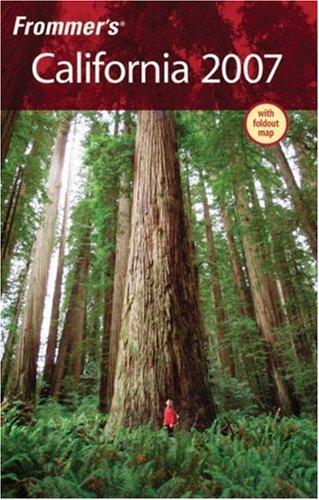
Frommer's California 2007
by
Harry Basch
,
Mark Hiss
,
Erika Lenkert
and
Matthew Richard Poole
Published 6 Dec 2006
SOMA Although this area is too big and shops are too scattered to be suitable for strolling, you’ll find good discount shopping, along with a few great regular retail shops, in warehouse spaces south of Market. Most major hotels carry discount-shopping guides. Many buses pass through this area, including nos. 9, 12, 14, 15, 19, 26, 27, 30, 42, 45, and 76. The SFMOMA MuseumStore, 151 Third St., 2 blocks south of Market Street, across from Yerba Buena Gardens (& 415/357-4035; www.sfmoma.org), is a favorite among locals. The shop’s art cards and books, as well as jewelry, housewares, and knickknacks are well designed. For visitors, the San Francisco mementos here are much more tasteful than those sold in Fisherman’s Wharf.
…
Other popular features include: • • • • Online updates of our most popular guidebooks Vacation sweepstakes and contest giveaways Newsletters highlighting the hottest travel trends Online travel message boards with featured travel discussions What’s New in California SAN FRANCISCO San Francisco doesn’t appear to have enough undeveloped space to welcome a few more parking spaces, let alone major development, but it is evolving and changing at an astounding pace. Anyone who hasn’t been here in a few years will marvel at how much more attractive the Embarcadero waterfront is—not to mention how much more there is to do there. Likewise for South of Market (SoMa), which, despite a mass exodus of start-up companies after the dot.com bust, has become an epicenter of urban regrowth, with a burgeoning number of lofts, shops, and restaurants near the ballpark, and four-star hotels and museums around Yerba Buena Gardens.
…
Safety Few locals would recommend walking alone late at night in certain areas, particularly the Tenderloin, between Union Square and the Civic Center. Compared to dodgy neighborhoods in other cities, however, even this section of San Francisco is relatively tranquil. You should also be alert in the Mission District, around 16th and Mission streets; the lower Fillmore area, around lower Haight Street; and SoMa (south of Market St.). Taxes An 8.5% sales tax is added at the register for all goods and services purchased in San Francisco. The city hotel tax is a whopping 14%. Transit Information For live help, call Muni (& 415/673-6864) weekdays from 6am to 8pm, and weekends 8am to 6pm.
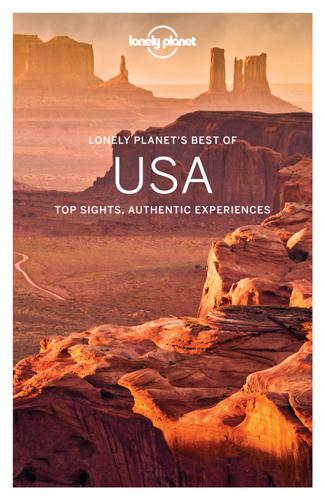
Lonely Planet's Best of USA
by
Lonely Planet
San Francisco 1 Sights 1 Aquarium of the Bay C1 2 Beat Museum D3 3 Children’s Creativity Museum D7 4 Chinatown Alleyways C4 5 Chinese Historical Society of America C4 6 City Lights Bookstore C3 7 Coit Tower D2 8 Commercial Street D4 9 Exploratorium E3 10 Ferry Building E4 11 George Sterling Park A3 12 Justin Herman Plaza E4 13 Lombard Street A2 14 Maritime National Historical Park A1 15 Ross Alley C4 16 Spofford Alley C4 17 Tin How Temple C4 2 Activities, Courses & Tours 18 Chinatown Alleyway Tours D4 5 Eating 19 Brenda’s French Soul Food A7 20 City View D4 21 Cocotte A4 22 Cotogna D3 23 Ferry Plaza Farmers Market F4 24 Mijita F4 25 Molinari C3 26 Swan Oyster Depot A5 6 Drinking & Nightlife 27 Aunt Charlie’s Lounge C7 28 Caffe Trieste C3 29 Comstock Saloon D4 30 Tonga Room C5 31 Top of the Mark C5 3 Entertainment 32 Beach Blanket Babylon C3 33 San Francisco Giants F8 34 San Francisco Opera A8 35 SFJAZZ Center A8 7 Shopping 36 Britex Fabrics C6 37 Electric Works B8 38 Golden Gate Fortune Cookie Company C4 39 Heath Ceramics F4 1 SIGHTS Let San Francisco’s 43 hills stretch your legs and your imagination as they deliver breathtaking views. Keep your city smarts and wits about you in the Tenderloin and South of Market (SoMa) neighborhoods. 1 Embarcadero Exploratorium Museum Map Google Map Is there a science to skateboarding?
…
. (%415-984-1478; www.chinatownalleywaytours.org/; tours depart Portsmouth Sq, near Washington & Kearny Sts; adult/student $26/16; htours 11am Mon, Tue & Sat, 3pm Thu & Fri; c; g1, 8, 10, 12, 30, 41, 45, jCalifornia St, Powell-Mason, Powell-Hyde) OVERSNAP / GETTY IMAGES © LGBT San Francisco Doesn’t matter where you’re from, who you love or who’s your daddy: if you’re here, and queer, welcome home. The Castro is the historic heart of the gay scene. South of Market (SoMa) has leather bars and thump-thump clubs. The Mission is the preferred ’hood for many women and a diverse transgender community. Cafe Flore You haven’t done the Castro till you’ve idled on the sun-drenched patio – everyone winds up here sooner or later.
…
If California is one grand, sweeping gesture, a long arm cradling the Pacific, then San Francisco – that seven-by-seven-mile peninsula – is a forefinger pointing upward. Take this as a hint to look up: you’ll notice San Francisco’s crooked Victorian rooflines, wind-sculpted treetops and fog tumbling over the Golden Gate Bridge. Cable car / BILLY RICHARDS PHOTOGRAPHY / GETTY IMAGES © y In This Section Golden Gate Bridge Cable Cars Alcatraz Ferry Building Chinatown Sights Tours Shopping Entertainment Eating Drinking & Nightlife San Francisco Airport / KAREN DESJARDIN / GETTY IMAGES © 8 Arriving in San Francisco San Francisco Airport (SFO) Fast, 30-minute rides to Downtown on BART cost $8.65; door-to-door shuttle vans cost $17 to $20; express bus fare to the Temporary Transbay Bus Terminal is $5; taxis cost $40 to $55.
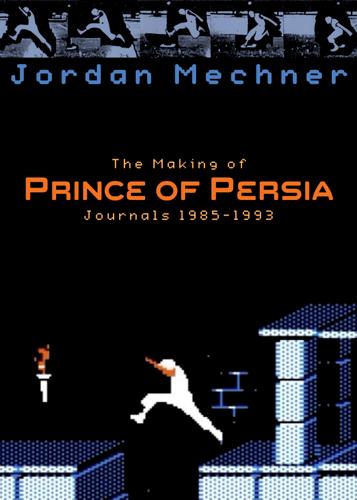
The Making of Prince of Persia: Journals 1985-1993
by
Jordan Mechner
Published 30 Jan 2012
“Actually,” Ed said, “I was expecting you today.” My life is about to change. California September 10, 1986 [San Francisco] “I thought you were the pizza man,” Tomi said when she opened the door to the Baker Street apartment and saw me there at the top of the steep steps with my two bags. Now I’m reclining in luxury in one of their new armchairs, listening to Maurizio Pollini play Chopin preludes on their new CD player. There’s a stunning view of San Francisco Bay out the windows that makes my stomach contract every time I look at it. Did I mention that I’m scared? Getting a ride to work this morning with Tomi, pulling into the Broderbund parking lot – that was scary.
…
January 23, 1991 I did read most of the 1001 Nights and I did spend a couple of hours doodling on the POP 2 game design, but have nothing concrete to show for it. Sequel January 24, 1991 [San Francisco] Man, it’s great to be back. When I got into my rented car and hit Highway 280, I laughed out loud, I was so thrilled. The trees, the colors, the quality of the sunlight… San Francisco is the most beautiful city on the planet. It’s a wonderfully reassuring feeling to return and realize that my old life is still here, waiting for me, if I want it. The good news is, they’re truly hot to do POP 2.
…
I realized this when I went to the United office to try to change the date of my still-unused return ticket and was told that, sorry, the ticket is only good for one year. I’ll have to leave tomorrow morning or not at all. October 15, 1992 I bought a ticket for San Francisco for next Thursday. “What are you doing in France?” Patrick said. “Go to San Francisco! Finish the game! They need you. Stay for a couple of months. Nothing’s going to happen here. We won’t forget you.” October 18, 1992 Spent the whole day at rue Boutarel making Level 3, “First Cavern Level.” I’m quite pleased with it. Some nifty little puzzles, not too hard, not tedious either.
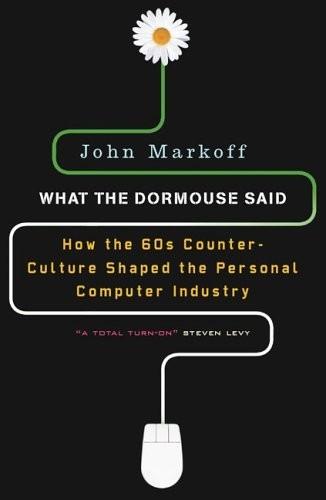
What the Dormouse Said: How the Sixties Counterculture Shaped the Personal Computer Industry
by
John Markoff
Published 1 Jan 2005
After several newspaper accounts appeared, Moore was besieged with financial requests both by phone and mail. And like Frodo’s ring, the money wouldn’t stay in the ground. Despite his views on the institutions that controlled money, Moore was soon forcibly turned into a “people’s banker” when a small group of San Francisco activists who were engaged in building a collective in a warehouse in a tattered neighborhood south of Market Street heard about the windfall. Project One was a single site that encompassed a diverse set of community political projects, ranging from education to organizing to theater to one of the first community time-sharing computer efforts, which was called Resource One and had become the final resting place for Doug Engelbart’s SDS-940.
…
Franklin eventually coauthored What to Do After You Hit Return with Albrecht, an introduction to programming games in BASIC that soon became a hot seller. Another of the potluck regulars was Lee Felsenstein, who would arrive each Wednesday evening by train from San Francisco, where he was tending an SRI mainframe computer that had been donated by the Transamerica Leasing Corporation to Project One community activists who had taken over a warehouse in the city’s South-of-Market district. For Felsenstein, the PCC was a glimpse of the future, as forecast by Nelson and Albrecht. A veteran of the Berkeley Free Speech Movement whose career had already run the gamut from being a junior engineer at Ampex to working on the editorial collective of the Berkeley Barb, Felsenstein, like Lenny Siegel at Stanford, was an antiwar activist who was not anti-technology.
…
During the next four years, initially charging subjects five hundred dollars to participate in a study of LSD and creativity, the foundation ultimately led more than 350 people, including some of the Valley’s best engineers, through their first psychedelic experiences. On the San Francisco Midpeninsula, the late fifties and the early sixties were a bucolic time. Kepler’s bookstore on El Camino Real, just two miles north of the Stanford University campus, served as a beacon for an eclectic group of intellectuals who were outsiders in a community that was largely split in its economic dependence among Stanford, a fledgling electronics industry, and large military contractors like Lockheed. Woodside, a forested town just northwest of Stanford, was already a bedroom community and retreat, but for an earlier San Francisco financial elite with roots in the California Gold Rush.
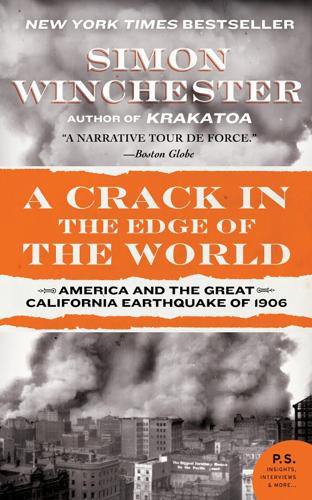
A Crack in the Edge of the World
by
Simon Winchester
Published 9 Oct 2006
The Ultimate Guide to San Francisco. San Francisco: Chronicle Books, 1989 Dickson, Samuel. San Francisco is Your Home. Stanford: Stanford University Press, 1947 Dillon, Richard H. The Hatchet Men. New York: Coward-McCann, 1962 —Embarcadero. New York: Coward-McCann, 1959 —Shanghaiing Days. New York: Coward-McCann, 1961 Downs, Tom. San Francisco. Victoria, Australia: Lonely Planet Publications, 2002 Eames, David B. San Francisco Street Secrets: The Stories behind San Francisco Street Names. [n.p.]: Gem Guide Books, 1995 Elliott, James Welsh. Taylor & Taylor: A Reminiscence. San Francisco: The Kemble Collections, 1985 Erickson, Jon.
…
London: Cassell, 2002 Turner, Patricia (ed.). 1906 Remembered: First-hand Accounts of the San Francisco Disaster. San Francisco: Friends of the San Francisco Public Library, 1981 Watkins, T. H., and R. R. Olmsted. Mirror of the Dream: An Illustrated History of San Francisco. San Francisco: Scrimshaw Press, 1976 Weber, Francis J. A Bicentennial Compendium of Maynard J. Geiger’s ‘The Life and Times of Fray Junipero Serra’. San Luis Obispo, CA: EZ Nature Books, 1988 Wiley, Peter Booth. National Trust Guide: San Francisco. New York: John Wiley, 2000 Wilson, James Russel (‘The Well-known Author’). San Francisco’s Horror of Earthquake and Fire, Terrible Devastation and Heart-Rending Scenes, Immense Loss of Life and Hundreds of Millions of Property Destroyed.
…
Outpost of Empire: The Story of the Founding of San Francisco. New York: Alfred A. Knopf, 1939 Brechin, Gray. Imperial San Francisco: Urban Power, Earthly Ruin. Berkeley: University of California Press, 1999 Bronson, William. The Earth Shook, the Sky Burned. San Francisco: Chronicle Books, 1986 Brook, James, Chris Carlsson, and Nancy J. Peters (eds.). Reclaiming San Francisco: History, Politics, Culture. San Francisco: City Lights Books, 1998 Butler, Jon, Grant Wacker, and Randall Balmer. Religion in American Life: A Short History. New York: Oxford University Press, 2002 Caen, Herb. The San Francisco Book. Boston: Houghton Mifflin, 1948 —and Dong Kingman.
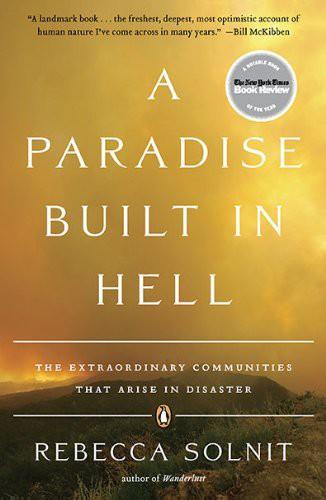
A Paradise Built in Hell: Extraordinary Communities That Arise in Disaster
by
Rebecca Solnit
Published 31 Aug 2010
The socialist novelist Jack London, whose birthplace in the poor district south of Market Street burned in the quake aftermath, agreed: “Remarkable as it may seem, Wednesday night while the whole city crashed and roared into ruin, was a quiet night. There were no crowds. There was no shouting and yelling. There was no hysteria, no disorder. I passed Wednesday night in the path of the advancing flames, and in all those terrible hours I saw not one woman who wept, not one man who was excited, not one person who was in the slightest degree panic-stricken. The most perfect courtesy obtained. Never in all San Francisco’s history, were her people so kind and courteous as on this night of terror.”
…
When they were done, half the city was ash and rubble, more than twenty-eight thousand buildings had been destroyed, and more than half the population of four hundred thousand was homeless. Mansions burned down atop Nob Hill; the slum district south of Market Street was nearly erased. The disaster provoked, as most do, a mixed reaction: generosity and solidarity among most of the citizens, and hostility from those who feared that public and sought to control it, in the belief that an unsubjugated citizenry was—in the words of Funston—“an unlicked mob.” For all the picturesqueness of men in bowler hats and women in long skirts fleeing a disaster more than a century ago, the San Francisco earthquake has, in all its essentials, the same ingredients as most contemporary disasters, the same social solidarities and schisms, the same generous and destructive characters.
…
The writer Mary Austin, who was there for the earthquake and its aftermath, said that the people of San Francisco became houseless, but not homeless, “for it comes to this with the bulk of San Franciscans, that they discovered the place and the spirit to be home rather than the walls and the furnishings. No matter how the insurance totals foot up, what landmarks, what treasures of art are evanished, San Francisco, our San Francisco is all there yet. Fast as the tall banners of smoke rose up and the flames reddened them, rose up with it something impalpable, like an exhalation.” Mary Austin’s San Francisco didn’t burn down, it rose up. The morning of the quake, policeman H.
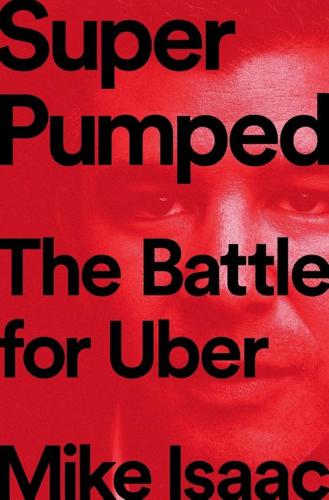
Super Pumped: The Battle for Uber
by
Mike Isaac
Published 2 Sep 2019
Chapter 3 POST-POP DEPRESSION Despite the RIAA’s obliteration of Scour and the betrayal by Ovitz, Kalanick walked away from bankruptcy court with some money in his pocket. He had thought Scour was going to be worth millions of dollars—and had he been just a few years older and lived five hundred miles to the north he might have been right. When Travis Kalanick was still an undergrad, South of Market—SoMa for short—in San Francisco was a dot-com wonderland. In the 1990s, the airy lofts at the corner of Second and Bryant housed dozens of startups with dreams of transforming the web. Companies like Bigwords.com, Macromedia, and Substance were quartered along South Park, a cozy green area tucked between Second and Third streets.
…
v=TS0NuV-zLZE. 244 “We will impound the vehicle”: Victor Fiorillo, “Uber Launches UberX In Philadelphia, but PPA Says ‘Not So Fast,’ ” Philadelphia, October 25, 2014, https://www.phillymag.com/news/2014/10/25/uber-launches-uberx-philadelphia/. 244 “UBERX: REMINDER”: Documents held by author. 245 a behavior engineers called “eyeballing”: Mike Isaac, “How Uber Deceives the Authorities Worldwide,” New York Times, March 3, 2017, https://www.nytimes.com/2017/03/03/technology/uber-greyball-program-evade-authorities.html. 247 “Uber has for years used”: Isaac, “How Uber Deceives the Authorities Worldwide.” 247 Uber’s security chief, prohibited employees: Daisuke Wakabayashi, “Uber Seeks to Prevent Use of Greyball to Thwart Regulators,” New York Times, March 8, 2017, https://www.nytimes.com/2017/03/08/business/uber-regulators-police-greyball.html. 247 Department of Justice opened a probe: Mike Isaac, “Uber Faces Federal Inquiry Over Use of Greyball Tool to Evade Authorities,” New York Times, May 4, 2017, https://www.nytimes.com/2017/05/04/technology/uber-federal-inquiry-software-greyball.html. 247 the inquiry widened to Philadelphia: Mike Isaac, “Justice Department Expands Its Inquiry into Uber’s Greyball Tool,” New York Times, May 5, 2017, https://www.nytimes.com/2017/05/05/technology/uber-greyball-investigation-expands.html. 248 He called it The Rideshare Guy: Harry Campbell, “About the Rideshare Guy: Harry Campbell,” The Rideshare Guy (blog), https://therideshareguy.com/about-the-rideshare-guy/. 248 directly due to the string of controversies: Kara Swisher and Johana Bhuiyan, “Uber President Jeff Jones Is Quitting, Citing Differences Over ‘Beliefs and Approach to Leadership,’ ” Recode, March 19, 2017, https://www.recode.net/2017/3/19/14976110/uber-president-jeff-jones-quits. 250 “there’s just a bunch of models”: Emily Peck, “Travis Kalanick’s Ex Reveals New Details About Uber’s Sexist Culture,” Huffington Post, March 29, 2017, https://www.huffingtonpost.com/entry/travis-kalanick-gabi-holzwarth-uber_us_58da7341e4b018c4606b8ec9. 253 “I am so sorry for being cold”: Amir Efrati, “Uber Group’s Visit to Seoul Escort Bar Sparked HR Complaint,” The Information, March 24, 2017, https://www.theinformation.com/articles/uber-groups-visit-to-seoul-escort-bar-sparked-hr-complaint. 253 reporter’s cell phone number: Efrati, “Uber Group’s Visit to Seoul Escort Bar.” Chapter 26: FATAL ERRORS 254 who called the maneuver illegal: Mike Isaac, “Uber Expands Self-Driving Car Service to San Francisco. D.M.V. Says It’s Illegal.,” New York Times, December 14, 2016, https://www.nytimes.com/2016/12/14/technology/uber-self-driving-car-san-francisco.html. 254 Uber issued a statement: Isaac, “Uber Expands Self-Driving Car Service to San Francisco.” 255 Uber’s narrative was false: Mike Isaac and Daisuke Wakabayashi, “A Lawsuit Against Uber Highlights the Rush to Conquer Driverless Cars,” New York Times, February 24, 2017, https://www.nytimes.com/2017/02/24/technology/anthony-levandowski-waymo-uber-google-lawsuit.html. 255 Levandowski was unceremoniously terminated: Mike Isaac and Daisuke Wakabayashi, “Uber Fires Former Google Engineer at Heart of Self-Driving Dispute,” New York Times, May 30, 2017, https://www.nytimes.com/2017/05/30/technology/uber-anthony-levandowski.html. 256 “possible theft of trade secrets”: Aarian Marshall, “Google’s Fight Against Uber Takes a Turn for the Criminal,” Wired, May 12, 2017, https://www.wired.com/2017/05/googles-fight-uber-takes-turn-criminal/. 256 expressed contrition in a press interview: Mike Isaac, “Uber Releases Diversity Report and Repudiates Its ‘Hard-Charging Attitude,’ ” New York Times, March 28, 2017, https://www.nytimes.com/2017/03/28/technology/uber-scandal-diversity-report.html. 257 existence of Uber’s program “Hell”: Efrati, “Uber’s Top Secret ‘Hell’ Program.” 257 The team kept tabs: Kate Conger, “Uber’s Massive Scraping Program Collected Data About Competitors Around the World,” Gizmodo, December 11, 2017, https://gizmodo.com/ubers-massive-scraping-program-collected-data-about-com-1820887947. 257 recorded private conversations: Paayal Zaveri, “Unsealed Letter in Uber-Waymo Case Details How Uber Employees Allegedly Stole Trade Secrets,” CNBC, December 15, 2017, https://www.cnbc.com/2017/12/15/jacobs-letter-in-uber-waymo-case-says-uber-staff-stole-trade-secrets.html. 261 personal, private medical files: Kara Swisher and Johana Bhuiyan, “A Top Uber Executive, Who Obtained the Medical Records of a Customer Who Was a Rape Victim, Has Been Fired,” Recode, June 7, 2017, https://www.recode.net/2017/6/7/15754316/uber-executive-india-assault-rape-medical-records. 262 it was over for Eric Alexander: Mike Isaac, “Uber Fires Executive Over Handling of Rape Investigation in India,” New York Times, June 7, 2017, https://www.nytimes.com/2017/06/07/technology/uber-fires-executive.html. 262 Kalanick accepted her resignation: Mike Isaac, “Executive Who Steered Uber Through Scandals Joins Exodus,” New York Times, April 11, 2017, https://www.nytimes.com/2017/04/11/technology/ubers-head-of-policy-and-communications-joins-executive-exodus.html. 263 “The last note I got from her”: Kalanick, “Dad is getting much better in last 48 hours.” 265 “Over the last seven years”: Unpublished letter, obtained by author.
…
No longer would he have to work around the clock for peanuts, looking for the next deal while living in his parents’ house and eating ramen and other treats from the bargain bin at Safeway. Four months after the deal closed, he bought a condo in San Francisco’s Castro district, set atop one of the tallest hills in the city with a view of the Bay Area. He was able to take some time to relax and enjoy the luxuries that lured global elites to San Francisco. He and his girlfriend, Angie You, could hang out with friends from the startup scene while he let his Akamai shares vest. He could party, chill, and most importantly, figure out his next move. Aside from the money he made over ten years of dogfights in startup land, Kalanick had gained a great deal of practical experience and emerged with a new understanding of leadership.
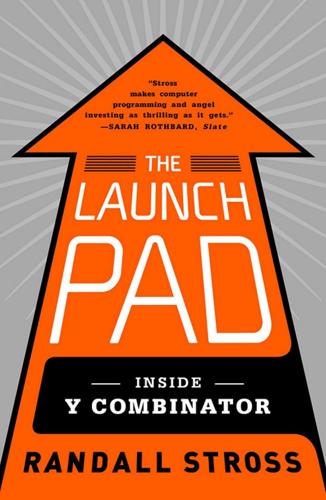
The Launch Pad: Inside Y Combinator, Silicon Valley's Most Exclusive School for Startups
by
Randall Stross
Published 4 Sep 2013
See also Kalvins Ries, Eric, 55, 77, 147 RocketMail, 151 RocketSpace, 136 Rolnitzky, David, 89–90, 134 Ruby, 31, 124, 148, 193 Rushkoff, Douglas, 267n1 Russell, Andy, 127–28 Sacca, Chris, 57, 61 Said Business School, 57 Salesforce.com, 31, 204 Salt Lake City, UT, 42 San Diego, CA, 20 San Francisco, CA, 41, 54 CampusCred, 111 hipsters, 36, 211 living in, 9, 35–36 Mission, 165 MobileWorks, 90 MUNI, 153 rideshare listings, 120–21 Russian Hill, 165 South of Market, 163 Standard Chartered Bank office, 90 Taylor Street, 223–24 Y Scraper, 223–24 YC founders in, 58, 71, 133–34, 141, 142, 163, 229 San Francisco Gray Line, 1 Sand Hill Road, Menlo Park, 41–42, 202–3 Santa Barbara, CA, 20 Sapient, 29 Say It Visually, 101–2 Schmidt, Geoff, 234 Science Exchange, 46, 163, 171–82 Scott, Riley, 51 Scribd, 166, 224, 230 Seattle, WA, 71 Securities Act of 1933, 205 Seibel, Michael, 142, 144, 228, 229 Sequoia Capital, 3, 66, 74, 86, 87, 153, 157 Seyal, Omar, 66, 151 Shah, Sagar, 110–14, 117, 136–37 Sharpie, 165 Shazam, 81 Shear, Emmett education, 15 Kan, Daniel, 229 Kan, Justin, 162–63 Kiko, 14, 16, 23 Justin.tv, 141–44 Rap Genius, 201 Twitch.tv, 144–47, 228 2005, summer batch, 14–16 YC partner, 63, 150 Shen, Jason, 68, 69, 163–64, 266n3 AnyAsq, 166 Art of Ass-Kicking blog, 9 Demo Day, 211 finalist interview, 10 Prototype Day, 120–21 Rehearsal Day, 187–88 Shirky, Clay, 105 Shpilman, Felix, 88, 222 Siberian ginseng, 134 Sift Science, 70–76, 121, 134, 138, 210 Silicon Valley Australian view of, 267n6 failure, forgiving of, 220 image, 114 merit over seniority, 60 programmers, 212 startups, 56–57, 58–59 Taggar, Harj, 58–60 tours, 1 uniqueness of, 237, 238 women in, 54 YC, 40 Silicon Valley Comes to Oxford, 57 Silver Tail, 54 Sims, Zach, 124–25, 147–49, 192–93, 194–96, 215–16, 227 Singapore, 154, 238 Skype, 17, 38, 124, 223, 265n1 Snapjoy, 43–44, 103, 130–33, 186–87, 194 Socialcam, 144, 147, 228 software is eating the world, 1–2, 6, 216, 238, 239 South Africa, 17 Spain, 238 Spanish (language), 213 Splitterbug, 123, 187, 209 Square, 91 Stamatiou, Paul, 219 Standard Chartered Bank, 90 Stanford Artificial Intelligence Lab, 47 Bing Nursery School, 52 computer science students, 47, 60, 66, 256n6 dorms, 52 Google, 86 graduates of, 9, 29, 68, 91, 214, 261n1, 266n3 photo books, 10 Stanford Daily, 163 students, current, 213 Start Fund, 43, 95, 137, 169, 219, 233 Andreesen Horowitz, 230 beginnings, 4, 28 Clerky, 126 Graham, Paul, 35, 87–88 Science Exchange, 179 Shpilman, Felix, 88 Tagstand, 154 Steiner, Chris, 51, 191, 208–9, 264n2 Stigsen, Alexander, 51, 103 Stripe, 64–66 Stypi, 194 Su, Andy, 52–53 Sunnyvale, CA, 125, 130, 149 SuperValu, 209 Suzman, Ted, 164–65, 224 Suzman, Tim, 164–68, 223–24 SV Angel, 137, 219, 233 Andreesen Horowitz, 230 Clerky, 126 Conway, Ron, 88–89 Lee, David, 88–89, 91 MongoHQ, 95 Science Exchange, 179 Stripe, 66 Tagstand, 154 Sweden, 168, 238 Swedish, 214 Taggar, Harj (Harjeet) AnyAsq, 166 Auctomatic, 60–63, 204 Boso, 57–58 coding, 58, 60 Kalvins/Ridejoy, 68 Rap Genius, 80–85, 127, 196 Sift Science, 71–75 Silicon Valley, 58–60 speaking style, 81 on startups, 59, 61, 66, 161–62 2007, winter, 58–61 YC partner, 62–63, 150, 166, 256–57n3, 263n13 Taggar, Kulveer, 151–60 Auctomatic, 60–62, 159, 204 Boso, 57–58 coding, 58, 60 Demo Day, 210, 264n1 Tagstand, 66 YC, 58–61, 66, 154, 160 Tagstand, 66, 151–60 Taiwan, 238 Tam, Chris, 98–100 Tamagotchi, 156 Tamplin, James, 134–36, 138 Tan, Garry Science Exchange, 171, 180–81 Tagstand, 151, 155 YC partner, 63, 64, 150 Tan, Jason, 71–76, 121, 134–36, 210 TapEngage, 187, 192, 209 Target, 169 TaskRabbit, 54 Tech Wildcatters, 41 TechCrunch, 93, 197 Codecademy, 195, 227 Snapjoy, 131 Socialcam, 147 women, 48 YC, 194 TechStars, 41, 42–44, 53, 169, 255n5–6, 255n10, 261n2 10gen, 30, 93 Thiel, Peter, 66, 140, 261n1 Thing Marks, 148 Thomas, Eric, 106, 108 TightDB, 51, 103, 223 Toontastic, 127–28 Topps, 152 Traf-O-Data, 16 Transition School, 15 Trott, Mena, 46 Tumblr, 147 Turkey, 17 Twitch.tv, 145–47, 228 Twitter, 57, 58, 91 Codecademy, 195, 227 Conway, Ron, 87 female users, 256n10 NowSpots, 168 Socialcam, 147 280 North, 64 UC Davis, 20 UCLA, 20 UC San Diego, 20 UC Santa Cruz, 20 UK, 17, 57, 59, 61, 184, 238 Union Square Ventures, 267n1 United Nations, 162, 214 University of Maryland, 39 University of Miami, 171 University of Southern California, 20, 88 University of Texas, Austin, 112 University of Washington, 15, 70, 71 U.S.
…
In the fall of 2009, Shen and Wang got an apartment in San Francisco but didn’t then work together. Shen, who had studied biology and philosophy, worked after graduation as the business manager of the Stanford Daily and commuted down to Stanford. Wang, a computer science major, worked at a number of startups and landed at Virgance, an incubator located in the South of Market area of San Francisco, not far from their apartment. The two needed to find someone for the third bedroom in their apartment. They ran an ad on Craigslist, brought in a roommate whom they had to ask to leave after only three months, and found themselves having to start over. This time, however, they determined to go about their search differently.
…
12 HACKATHON 13 NEW IDEAS 14 RISK 15 MARRIED 16 FEARSOME 17 PAY ATTENTION 18 GROWTH 19 FIND A DROPBOX 20 DON’T QUIT 21 SOFTWARE IS EATING THE WORLD Epilogue Acknowledgments Appendix: The Summer 2011 Batch Notes Index INTRODUCTION San Francisco Gray Line is the largest sightseeing tour company in Northern California. It offers tours of San Francisco, of Muir Woods and Sausalito or the wine country north of the city, but it no longer offers a tour of Silicon Valley, immediately south. From a bus seat, there just isn’t much to be seen.1 Silicon Valley’s past is more accessible than its present.
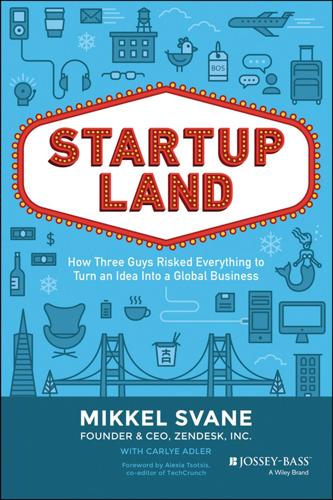
Startupland: How Three Guys Risked Everything to Turn an Idea Into a Global Business
by
Mikkel Svane
and
Carlye Adler
Published 13 Nov 2014
After so many visits to the West Coast, we were sure San Francisco was the right place: being part of a startup industry, the early adopter first-mover customers, the investors, the talent (and talent with actual relevant experience), the sheer density of startups and startup people, and of course the sunshine. And then came the less obvious part—we had to decide where exactly to set up shop. As usual, there was a difference of opinion. I flew out to San Francisco, toured a few office spaces, and selected what I thought to be a solid choice, 410 Townsend Street, in the South of Market (SoMa) neighborhood, which was home to so many software companies including Airbnb, Dropbox, salesforce.com, Twitter, and many more.
…
Starting Over, Again We signed a lease on an office at 410 Townsend in August, and by September 2009 all of us had officially moved to San Francisco. After a beastly summer in Boston, we were looking 119 Page 119 Svane c07.tex V3 - 10/24/2014 9:41 P.M. S TA R TU P L A N D forward to a cool fall in the Fog City, but of course we soon learned that in San Francisco the summers are chilly with fog, but the fall days are warm. When we first flew into SFO there was an unusual heat wave, which made the first couple of nights in San Francisco—again, with no air conditioning—warm and sticky. Before moving over, I had found a nice little house for my family. Unlike in Boston, in San Francisco we could actually find a house that we could afford and that wasn’t hours outside of the city.
…
This was the early days of Netscape Navigator, and the Web was just becoming searchable, but I certainly didn’t know where the Internet was headed. However, a trip to San Francisco in 1995 made everything more clear—it was going to change everything. In San Francisco, everything related to the Internet was being totally embraced. Everything was about the Web. Billboards advertised companies with “www” addresses. My San Franciscan friends ordered food and DVDs online. The Internet was a part of their daily lives. Everyone communicated saying, “Send me an email,” and everybody had an email address. I experienced emailing between Copenhagen and San Francisco and having these messages arrive instantly. I couldn’t believe how much smaller the world was, now that it 10 Page 10 Svane c01.tex V3 - 10/24/2014 8:14 P.M.
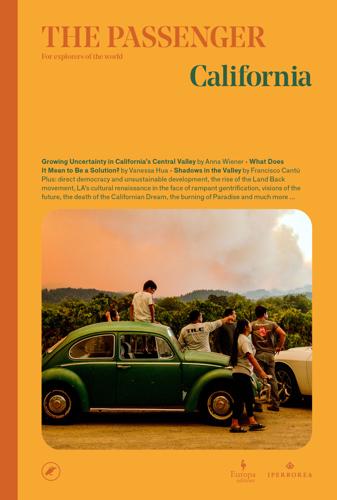
The Passenger
by
AA.VV.
Published 23 May 2022
It’s a widespread phenomenon, and it’s something you’ll notice if you find yourself at one of the “sights” along the well-worn path that everyone takes when they head off to Silicon Valley – which nobody actually calls Silicon Valley, by the way, but “the Bay Area”. (And please don’t call San Francisco “Frisco”.) Your itinerary will include a selection from the following: Facebook headquarters, the LinkedIn skyscraper in San Francisco and/or the Airbnb headquarters in SoMa (South of Market). You’ll also be taken to see a few mysterious startups, complete with pimply kids in hoodies. Two places definitely on the itinerary include the famous garage in Palo Alto where Hewlett-Packard started and Steve Jobs’s garage in Los Altos.
…
Since 2008 house prices per square metre in Los Angeles, San Diego and San Francisco have risen by 70, 80 and 116 per cent respectively. Renting a room in San Francisco averages $2,700 per month – with the key words here being “room” and “average”. The market for sublets is ferocious and poorly regulated: people quite literally lose their housing overnight. The competition Airbnb has brought to the hotels sector has made things even worse by removing more rooms from the rental market. Homes for sale and under construction in Oakland and San Francisco. A demonstration in Sunnyvale outside the building where the annual general meeting of Google’s parent company, Alphabet, was taking place.
…
A person selling a home in California can buy three houses in Idaho. Today San Francisco is inhabited mainly by the ultra-rich, who are more numerous there than anywhere else in the country. The percentage of African-American inhabitants, however, has dropped from 13 per cent to 5 per cent in fifty years. San Francisco is perhaps the only place in America which has become more white, not less, with the passage of time. And it is mostly middle-class families who are leaving. The median age of California residents today is forty and is rising much more quickly than in the rest of the country. In San Francisco there are fewer residents under the age of eighteen than in any other large city in the USA.
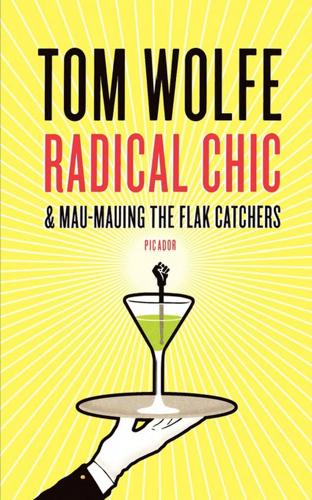
Radical Chic & Mau-Mauing the Flak Catchers
by
Tom Wolfe
Published 1 Jan 1970
Would that black apparition, that damnable Negro by the piano, be rising up from the belly of a concert grand for the rest of his natural life? Mau-Mauing the Flak Catchers Going downtown to mau-mau the bureaucrats got to be the routine practice in San Francisco. The poverty program encouraged you to go in for mau-mauing. They wouldn't have known what to do without it. The bureaucrats at City Hall and in the Office of Economic Opportunity talked "ghetto" all the time, but they didn't known any more about what was going on in the Western Addition, Hunters Point, Potrero Hill, the Mission, Chinatown, or south of Market Street than they did about Zanzibar. They didn't know where to look. They didn't even know who to ask. So what could they do?
…
Everybody was out mau-mauing up a storm, to see if they could win the victories the blacks had won. San Francisco, being the main port of entry for immigrants from all over the Pacific, had as many colored minorities as New York City. Maybe more. Blacks, Chicanos, Latinos, Chinese, Japanese, Filipinos, American Indians, Samoans-everybody was circling around the poverty program. By the end of 1968 there were eighty-seven different groups getting into the militant thing, getting into mau-mauing. Nobody kept records on the confrontations, which is too bad. There must have been hundreds of them in San Francisco alone. Across the country there must have been thousands.
…
A lot of whites seemed to think all the angry young men in the ghettos were ready to riseu p and follow the Black Panthers at a moment's notice. Actually the Panthers had a complicated status in the ghettos in San Francisco. You talked to almost any young ace on the street, and he admired the Panthers. He looked up to them. The Panthers were stone courageous. They ripped off the white man and blew his mind and fucked him around like nobody as ever done it. And so on. And yet as an organization the Panthers hardly got a toehold in the ghettos in San Francisco, even though their national headquarters were just over the Bay Bridge in Oakland. Whites always seemed to think they had the ghetto's leaders identified and catalogued, and they were always wrong.
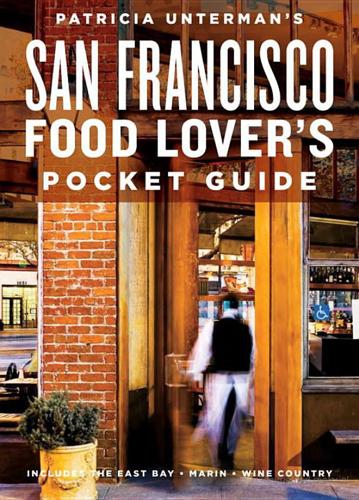
Patricia Unterman's San Francisco Food Lover's Pocket Guide
by
Patricia Unterman
and
Ed Anderson
Published 1 Mar 2007
eISBN: 978-0-307-78410-0 v3.1 CONTENTS Cover Title Page Copyright Introduction THE NEIGHBORHOODS Chinatown Civic Center & Hayes Valley Embarcadero & Fisherman’s Wharf Financial District & Union Square Lower and Upper Haight & Cole Valley The Marina & Cow Hollow The Mission, Bernal Heights & the Excelsior Noe Valley, the Castro, Diamond Heights, Upper Market & Glen Park North Beach Pacific Heights & Japantown Polk Street, Nob Hill, Russian Hill & Van Ness Avenue The Richmond South of Market, Third Street & Potrero Hill The Sunset OUT OF TOWN The East Bay Marin County Wine Country INTRODUCTION The San Francisco Food Lover’s Guide was written both for visitors and for residents who want to explore the culinary landscape of their own city. The new pocket edition, fully updated, with shortened entries and a convenient size for purse, glove compartment, or backpack, means that my comprehensive and opinionated restaurant and food guide can always be handy.
…
The new pocket edition, fully updated, with shortened entries and a convenient size for purse, glove compartment, or backpack, means that my comprehensive and opinionated restaurant and food guide can always be handy. For over three decades, I have been developing my sense of taste as a restaurant critic (at the San Francisco Chronicle and the San Francisco Examiner), and as a cook both at home and in San Francisco at the Hayes Street Grill, which I own with my partner of thirty years, Richard Sander. But what I really am is an eater, someone who loves food of every kind, but with an almost obsessive discrimination. Such openness combined with unrelenting critical consciousness seems like a paradox; being a connoisseur suggests a narrowing of taste.
…
Delicatessens also sell food to eat on the spot, though usually there are no places in the stores to sit. BAKERIES/PASTRIES The Bay Area is now the undisputed American, and arguably the world, capital of artisanal bread. Of course, San Francisco has a long tradition of bread making, started during the gold rush with our unique sourdough. Few artifacts represent San Francisco to the world as vividly as a crusty, chewy loaf of sourdough bread. However, with the rise of Acme Bread in 1983, Berkeley became the epicenter for high-quality levain and a range of other superb organic breads, albeit on a much smaller scale.

The Internet Is Not the Answer
by
Andrew Keen
Published 5 Jan 2015
It felt good to be back in the anonymous city—that reassuring place of self-erasure and self-invention. I shivered and, dodging a couple of networked Uber limousines, hailed a licensed yellow cab. “So what’s that new club like?” the driver asked me as we sped off down Battery Street toward San Francisco’s South of Market (SoMa) district, where the new offices of Internet companies like Twitter, Yelp, and Instagram are destroying local businesses. “It’s a failure,” I replied. “An epic fucking failure.” ACKNOWLEDGMENTS Sometimes one gets lucky. In March 2013, at Julia Hobsbawm’s Names Not Numbers conference in the delightful little town of Adeburgh on the Suffolk coast, I had the great fortune to meet the Atlantic Books CEO Toby Munday.
…
,” Letters to the Editor, Wall Street Journal, January 24, 2014. 34 Nick Wingfield, “Seattle Gets Its Own Tech Bus Protest,” New York Times, February 10, 2014. 35 Packer, “Change the World.” 36 Ibid. 37 Guynn, “San Francisco Split by Silicon Valley’s Wealth.” 38 Stephanie Gleason and Rachel Feintzeig, “Startups Are Quick to Fire,” New York Times, December 12, 2013. 39 See, for example, Eric Ries, The Lean Startup: How Today’s Entrepreneurs Use Continuous Innovation to Create Radically Successful Businesses (New York: Crown, 2011). 40 Quentin Hardy, “Technology Workers Are Young (Really Young),” New York Times, July 5, 2013. 41 Vivek Wadhwa, “A Code Name for Sexism and Racism,” Wall Street Journal, October 7, 2013. 42 Jon Terbush, “The Tech Industry’s Sexism Problem Is Only Getting Worse,” The Week, September 12, 2013. 43 Jessica Guynn, “Sexism a Problem in Silicon Valley, Critics Say,” Los Angeles Times, October 24, 2013. 44 Terbush, “The Tech Industry’s Sexism Problem Is Only Getting Worse.” 45 Elissa Shevinsky, “That’s It—I’m Finished Defending Sexism in Tech,” Business Insider, September 9, 2013. 46 Max Taves, “Bias Claims Surge Against Tech Industry,” Recorder, August 16, 2013. 47 Colleen Taylor, “Key Details of the Kleiner Perkins Gender Discrimination Lawsuit,” TechCrunch, May 22, 2012. 48 Alan Berube, “All Cities Are Not Created Unequal,” Brookings Institution, February 20, 2014. 49 Timothy Egan, “Dystopia by the Bay,” New York Times, December 5, 2013. 50 Marissa Lagos, “San Francisco Evictions Surge, Reports Find,” San Francisco Chronicle, November 5, 2013. 51 Carolyn Said, “Airbnb Profits Prompted S.F. Eviction, Ex-Tenant Says,” San Francisco Chronicle, January 22, 2014. 52 Ibid. 53 Casy Miner, “In a Divided San Francisco, Private Tech Buses Drive Tension,” NPR.org, December 17, 2013. 54 Andrew Gumbel, “San Francisco’s Guerrilla Protest at Google Buses Wells into Revolt,” Observer, January 25, 2014. 55 Carmel DeAmicis, “BREAKING: Protesters Attack Google Bus in West Oakland,” Pando Daily, December 20, 2013. 56 Robin Wilkey, “Peter Shih ‘10 Things I Hate About You’ Post Draws San Francisco’s Ire, Confirms Startup Stereotypes,” Huffington Post, August 16, 2013. 57 Jose Fitzgerald, “Real Tech Worker Says SF Homeless ‘Grotesque,’ ‘Degenerate,’ ‘Trash,’” San Francisco Bay Guardian, December 11, 2013. 58 Yasha Levine, “Occupy Wall Street Leader Now Works for Google, Wants to Crowdfund a Private Militia,” Pando Daily, February 7, 2014. 59 J.
…
It encapsulates what the New York Times’ Timothy Egan describes as the “dystopia by the Bay”—a San Francisco that is “a one-dimensional town for the 1 percent” and “an allegory of how the rich have changed America for the worse.”10 The Birches’ one-dimensional club is a 58,000-square-foot allegory for the increasingly sharp economic inequities in San Francisco. But there’s an even bigger issue at stake here than the invisible wall in San Francisco separating the few “haves” from the many “have-nots,” including the city’s more than five thousand homeless people. The Battery may be San Francisco’s biggest experiment, but there’s a much bolder social and economic experiment going on in the world outside the club’s tinted windows.
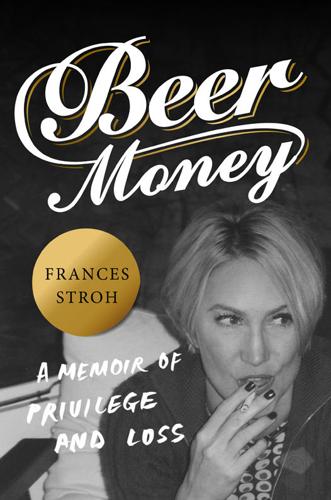
Beer Money: A Memoir of Privilege and Loss
by
Frances Stroh
Published 2 May 2016
I still had the signed copy of Ginsberg’s Collected Poems on my bookshelf in the Haight. It had survived the ’89 quake, when my bookshelf toppled over, crashing into my dresser, sending my books in every direction. Ginsberg had signed the book, his childish inscription the only evidence that still remained of my evening with the Beats. San Francisco Camerawork Gallery was located just south of Market Street in a former warehouse boasting floor-to-ceiling windows, creaky hardwood floors, and a freight elevator that could carry a crowd, twenty at a time, two floors up to the opening reception. I’d spent nearly twenty-four hours installing my piece, breaking for a short nap on the gallery couch sometime before dawn, and afterward heading to the airport to retrieve my parents.
…
He was a big fan, apparently, of lemurs. When the salads arrived, Ginsberg praised the restaurant’s tofu-tahini dressing. I seized my chance to join the conversation. “I know. I’ll miss this dressing when I’m in San Francisco,” I told him. “Ah, San Francisco,” said Ginsberg with an ironic little twirl of his salad fork. “And what ’ill you be doing there?” “I’m going to be an artist.” Nodding vaguely, he encouraged me to spend time at the San Francisco Art Institute. “It’s a wonderful place,” he said. “I taught a writing workshop there once.” After dinner we all drove to an auditorium on campus where Ginsberg would read. My friends and I sat on the edge of the stage, drinking red wine from the bottle, as the beatniks had once done at Ginsberg’s quixotic first reading of “Howl” in North Beach.
…
“You know? I really miss everyone.” My work had been selected as part of a group exhibition at San Francisco Camerawork Gallery entitled The Family Seen. Video screens of my family members talking would play in a darkened room simultaneously. We’d all met in Dallas for a couple of days so I could shoot the interviews—the only time the four of us had ever met outside a family occasion. Whitney had come all the way from Missoula, where he was a senior at the University of Montana. I had come from San Francisco, where I lived and worked as an artist. Bobby and Charlie lived near each other in Dallas but hardly saw each other.

Uncanny Valley: A Memoir
by
Anna Wiener
Published 14 Jan 2020
Most of the founders’ professional network—the other startups in their venture capitalists’ portfolios—lived in the Bay Area. The CPO spoke wistfully of California. “I maintain that San Francisco is the best place to be a young person,” he told me. “You should really try to get out there before too long.” I wanted to tell him that I thought I was still young: I was only twenty-five. Instead, I told him I would try. Everyone I knew in San Francisco had already left. Our college class had graduated straight into a recession, and while most of us trudged to New York or Boston to compete for unpaid internships and other scraps of a ravaged economy, those who moved west refused to bend to despair.
…
It was a world I wasn’t sure I could still call mine. If, in New York, I had never considered that there were people behind the internet, in San Francisco it was impossible to forget. Bubbly startup logos glowed from the tops of warehouses and office towers, and adorned the hats and vests and cycling kits of commuters downtown. The city was dotted with reminders that the English language was being disrupted. The stretch of highway that swept Silicon Valley, from San Francisco down to San Jose—where the money really started to tumble; where billboard space cost the most—was flanked with advertisements pitching software products to software developers in a language that only somewhat resembled modern speech.
…
After a few minutes I said goodbye, and returned to my boarding group at the back of the line. A few months later, reading the heavily moderated message board, I better understood their vagueness: the e-book startup was closing the service. They had probably been in San Francisco to meet with their investors, wind things down. The company had been purchased by the search-engine giant, in what was rumored to be an eight-figure acquihire. * * * Back in San Francisco, I felt acutely aware of the city’s beauty, and of the inbound aesthetic shift. Half the knowledge workers I encountered had the same thin cashmere sweaters I did, and the same lightweight eyeglasses.
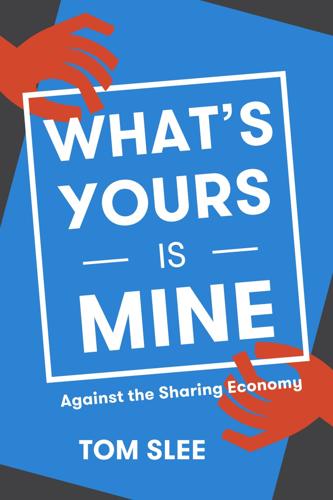
What's Yours Is Mine: Against the Sharing Economy
by
Tom Slee
Published 18 Nov 2015
Lichaa, 32 years old, advertised seats for the “mac attack” on a site called EatFeastly.com for $19.80 each.2 And here is Wired magazine, in the same vein: In about 40 minutes, Cindy Manit will let a complete stranger into her car. An app on her windshield-mounted iPhone will summon her to a corner in San Francisco’s South of Market neighborhood, where a russet-haired woman in an orange raincoat and coffee-colored boots will slip into the front seat of her immaculate 2006 Mazda3 hatchback and ask for a ride to the airport.3 Peers is only one lens through which to view the makeup of the Sharing Economy. In 2013 Rachel Botsman presented a classification of Sharing Economy services,4 and in a 2015 report, consultant Jeremiah Owyang presented his own profile.5 In addition to the examples given above, Botsman and Owyang each highlight some sectors that are less well-represented among the Peers membership.
…
Taxi earnings and employment models vary greatly from city to city, but comparing Uber’s estimates to taxi reports from Los Angeles, San Diego, and Toronto shows that Uber’s 20% cut of the fare, plus its $1 “safety fee” was about the same as that taken by medallion owners; there was no magic there after all.46 Payments for gas, maintenance, car depreciation, and insurance together with additional expenses (tolls, parking) accounted for about half of each dollar of taxi fare, which would take the earnings down to more like $45,000 in New York and $37,000 in San Francisco. Uber did not choose New York City and San Francisco at random for their report: the company selected these two cities because that’s where Uber drivers earn the most. A later report47 showed that New York City earnings were 50% more than those in any other city except for San Francisco, which was comfortably in second place, so in many cities the earnings would come to about $30,000, which is the average for a taxi driver. Once additional expenses are accounted for, the “astounding” gap between Uber earnings and taxi earnings vanished.
…
The Guardian, December 15, 2014. http://www.theguardian.com/technology/2014/dec/15/uber-offers-free-rides-after-backlash-over-surge-pricing-during-sydney-siege. Crunchbase. “TaskRabbit.” CrunchBase. Accessed June 19, 2015. https://www .crunchbase.com/organization/taskrabbit. Cushing, Ellen. “Uber Employees Warned a San Francisco Magazine Writer That Executives Might Snoop on Her.” Accessed May 23, 2015. http://www.modernluxury.com/san-francisco/story/uber-employees-warned-san-francisco-magazine-writer-executives-might-snoop-her. Dale, Daniel. “Council Votes to Overhaul Toronto Taxi Industry.” The Toronto Star, February 19, 2014. http://www.thestar.com/news/city_hall/2014/02/19/council_votes_to_overhaul_toronto_taxi_industry.html.
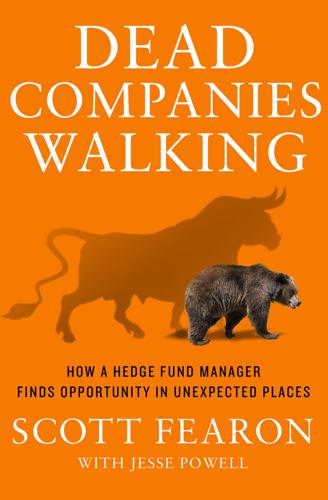
Dead Companies Walking
by
Scott Fearon
Published 10 Nov 2014
You might as well start measuring your head for a shiny new tinfoil hat, because you’ve officially crossed over into an alternate universe. And yet most people in the valley thought Bandel and I were the crazy ones for being skeptical of this nonsense. Sunk One month after my visit to Women.com, I parked my car on Brannan Street in the South of Market neighborhood of San Francisco and strolled into the corporate headquarters of a company called Quokka Sports (stock symbol: QKKA). Its CEO was a youthful, energetic Aussie named Alan. He had curly blond hair, brilliant white teeth, and an unusual idea for the next big thing in sports broadcasting. “Yacht racing!”
…
Chapman has never been shy about criticizing the managers of businesses he invests in, but he was particularly pointed with the brass at BMHC. He took to publicly calling out Rob as “San Francisco’s own $6 Million Man” and urged the company to reduce “its bloated cost structure.”* Even as the housing crisis became a clear supercycle event, BMHC—again, a low-margin commodity and service provider with its roots in Boise, Idaho—kept its tony corporate headquarters on the San Francisco waterfront. That fact alone, even more than the firm’s increasingly gruesome finances, convinced me to short its stock. Relatively speaking, the expense of maintaining the San Francisco office might have been small compared to BMHC’s overall budget, but the symbolism of it was enormous.
…
It taught me perhaps the single most important lesson about business and about life: Things go wrong more often than they go right. Failure is actually a natural—even crucial—element of a healthy economy. And the people who are willing to acknowledge that fact can make a hell of a lot of money. The Business of Failure Shortly after the collapse, I left Houston for the San Francisco Bay Area. From 1987 to 1990, I managed a mutual fund in downtown San Francisco. Since 1991, I’ve run a hedge fund from a modest Marin County office park in the shadow of Mount Tamalpais. I’ve lived through several more booms and busts since then, but I’ve almost always managed to make a profit, even in the worst of times. Over twenty-three years, my fund rose roughly 1,100 percent after all fees—significantly higher than the S&P 500’s total return during that same period.

Live Work Work Work Die: A Journey Into the Savage Heart of Silicon Valley
by
Corey Pein
Published 23 Apr 2018
“Despite the perception” “How to Determine the Value of Your Pre-Revenue Startup,” January 2015, entrepreneur.com. a seven-year lease Blanca Torres, “NerdWallet Signs Lease for New Market Street Headquarters in San Francisco,” June 13, 2014, bizjournals.com. “Fail Wall” Julie Balise, “At NerdWallet, Nerds and Finance Rule,” June 17, 2015, sfgate.com. “room to grow” Joe Gose, “Office REITs Counting on Record Rent Levels in San Francisco,” September 3, 2014, theregistrysf.com; Dan Levy, “San Francisco’s Blighted Market Street Reborn as Tech Hub,” September 18, 2013, bloomberg.com. Tim Chen Jonathan Shieber, “Scorching FinTech Market Keeps Attracting New Players as NerdWallet Raises $64 Million,” May 11, 2015, techcrunch.com.
…
The only way 99.99999 percent of us are going to become billionaires is through some Weimaresque economic cataclysm that leaves us pushing wheelbarrows full of high-denomination bills to barren grocery stores, where we can wait in long lines to buy stale bread and muesli cut with sawdust. Another thing I didn’t know when I packed up and flew to San Francisco in 2015, but which appears evident today, was that those days might come faster than most “reasonable” people thought. I Poor Winners Within hours of my arrival in the gleaming consumer paradise of boom-time San Francisco, people started giving me free things. Free snacks, free liquor, free T-shirts, free tchotchkes, free personal brand-building buzz, free advice—it was all there for the taking, emblazoned with corporate logos and gifted, ultimately, by benefactors who rarely showed their faces.
…
“Were I to get an eviction notice tomorrow, however, I would probably opt to leave the area, not just the city. I would take it as a sign of the beginning of the end of a bad relationship that has gone on for way too long,” Julie told me. She spoke of the city as if it were a person. “San Francisco used to be cool. Used to like all the things I like, it used to not worry about who I hung out with, or what clothes I wear, or how much money I have,” she said. “I don’t get how this happened.” The great San Francisco gentrification quake sent tremors up and down the West Coast. When we met, Julie asked me about Portland, where she had heard that one could rent a decent place for $300 a month. As a sometime Portlander, I knew that hadn’t been true for more than a decade, in part because so many Californians had moved north in search of cheaper rent.
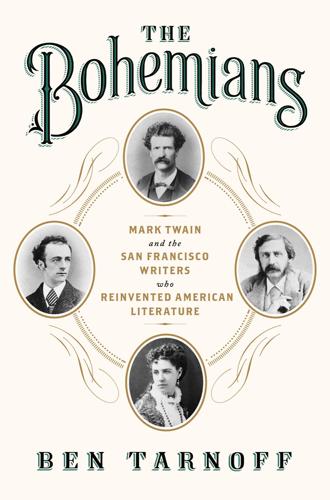
The Bohemians: Mark Twain and the San Francisco Writers Who Reinvented American Literature
by
Ben Tarnoff
Published 20 Mar 2014
He still felt adrift. “I have torn up my roots so often that they do not strike into any soil with much vigor,” he wrote. San Francisco had changed almost as much as he had. The city had been a refuge in the 1860s, but now it looked more like a dumping ground. People from other parts of the country washed up on its shores looking for work, swelling the ranks of the poor. By 1877, San Francisco’s unemployment rate was as high as 25 percent. Stoddard’s parents lived south of Market Street, a sprawling neighborhood that bore the brunt of the bad economy. Among its flophouses and slums, jobs were scarce and crime was commonplace.
…
Anthony), 134 Harte and, 211 Twain’s return to, 133, 135–36 Webb’s return to, 122, 137–38 New York Evening Post, 219 New York Home Journal, 159 New York Round Table, 105, 113, 143 New York Saturday Press, 110, 113–14 New York Sun, 241 New York Sunday Mercury, 75 New York Times, 180, 240–41, 253 New York Tribune, 115, 141 Nixon, Richard, 252 Northern Californian, 24, 25, 26 Occidental Hotel, 85 “Old Times on the Mississippi” (Twain), 240, 250 Once a Week, 226 Osgood, James R., 211, 212, 214 Outcroppings (Harte, ed.), 117–21, 123, 142, 147–49 Overland Monthly, 148–51, 150, 152, 154–63, 166–73, 179, 182, 185, 186, 191, 213, 214, 251, 255 Coolbrith and, 155–56 Harte and, 149–50, 152, 154–63, 166–73, 179, 188, 190–92, 200, 238 ownership change of, 173 Stoddard and, 155–56, 169 Overland Trinity, 156, 158, 169–70, 184, 192 Pacific Islands, 92 see also Hawaii Pacific Mail Steamship Company, 149 Pacific Railway Act, 18, 136 Page Act, 189 Paine, Albert Bigelow, 206 Panama-Pacific International Exposition, 254 Panic of 1873, 227, 228, 245, 250 Parsloe, Charles, Jr., 241–44, 246 Perfect Day, and Other Poems, A (Coolbrith), 253 Perry, Enoch Wood, Jr., 92 Pfaffians, 53–55, 72, 113 Phi Beta Kappa Society, 58, 210 Philadelphia Inquirer, 211 Pickett, William, 33 Pikes, 74 “Plain Language from Truthful James” (“The Heathen Chinee”) (Harte), 187–90, 187, 193, 202, 204, 219, 241, 246 Platt’s Music Hall, 132 Poems (Harte), 190 Poems (Stoddard), 136–37, 142–43, 144, 146–48, 182 “Poet of Sierra Flat, The” (Harte), 210–11 Pollock, Edward, 32 “Prodigal in Tahiti, A” (Stoddard), 214 Progress and Poverty (George), 163 Putnam’s Magazine, 190 Quaker City voyage, 141–42, 177 Twain on, 141–42, 151, 175, 177 Twain’s letters about, 151–55 Quarry Farm, 205–6 railroads, 17–18, 133, 136, 149–50, 145, 162–63, 165–66, 179, 185–86, 198, 227, 245 Chinese workers and, 136, 164, 187 subscription publishing and, 177 Reagan, Ronald, 67 Reconstruction, 239–40 “Relieving Guard” (Harte), 67 Roman, Anton, 117–18, 137, 148–51, 158, 173, 255 Roughing It (Twain), 111–12, 180, 189, 203–8, 217, 219, 222, 228, 231 Routledge & Sons, 229 Sacramento Daily Bee, 84, 120–21 Sacramento Daily Union, 52, 61, 119, 125–26, 132, 145 San Francisco, Calif., 3–4, 5, 16–17, 21, 27, 39, 50–51, 55–57, 63–64, 83–84, 185, 245, 251 bachelor life in, 55 Civil War and, 18–19, 55, 63–64 Coolbrith’s arrival in, 35–36 earthquake in, 159, 160–61, 190 economy of, 186 Harte’s arrival in, 26, 192 Harte’s departure from, 192–93, 197–98 Lick House in, 10, 41, 46, 60 Lincoln’s death and, 94 Montgomery Street in, 76 newspapers in, 17, 26, 55, 77 railroads and, 149–50, 154, 162–63, 165–66, 186 Stoddard’s arrival in, 38–39 Sydney-Town, 39 Telegraph Hill, xii, 43 Twain’s departure from, 133 Twain’s visits and move to, 2–4, 9–11, 17, 45–46, 71–72, 75, 77, 85, 87–88 San Francisco Alta California, see Alta California San Francisco Call, 244 San Francisco Chronicle, 215, 216, 229, 238, 250 San Francisco Dramatic Chronicle, 111, 118–19, 132, 154 San Francisco Evening Bulletin, 169 San Francisco Examiner, 104 San Francisco Morning Call, 17, 41, 45, 46, 72, 84, 85–88, 89–90, 104, 111, 112, 127, 153 San Francisco News Letter and Commercial Advertiser, 184 San Francisco Police Department, 104, 111 San Francisco Youths’ Companion, 111 Sanitary Commission, 68–70, 132 Sappho, 32 Saturday Club, 199–200 Saturday Press, 54, 65 Scott, Winfield, 1 Scribner’s, 201 Sellers, Isaiah, 12 Sewall, G.
…
Messianic rhetoric and anticipation: William Deverell, “Redemptive California? Re-thinking the Post–Civil War,” Rethinking History 11.1 (March 2007), pp. 65–66. Any citizen July 4 festivities: San Francisco Evening Bulletin, July 6, 1863. The news from First news of Gettysburg in SF: San Francisco Evening Bulletin, July 6, 1863. First news of Vicksburg in San Francisco: San Francisco Bulletin, July 7, 1863. Growing exhaustion with the war: SFLF, pp. 108–109. Bad turnout and 35 cases of public drunkenness: San Francisco Evening Bulletin, July 6, 1863. King knew how King at the Metropolitan: ibid. King: Kevin Starr, Americans and the California Dream, 1850–1915 (Oxford, UK: Oxford University Press, 1986 [1973]), pp. 99–105.
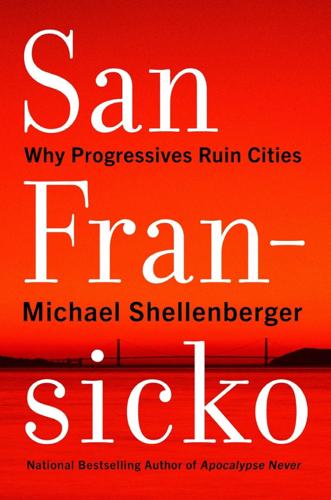
San Fransicko: Why Progressives Ruin Cities
by
Michael Shellenberger
Published 11 Oct 2021
.* Overdose deaths rose from 17,415 in 2000 to 93,330 in 2020, a 536 percent increase.30 Significantly more people die of drug overdoses today than of homicide (13,927 in 2019) or car accidents (36,096 in 2019).31 The overdose crisis is worse in San Francisco than in other cities. In Seattle, Phoenix, and Chicago, there were 23, 46, and 48 overdose deaths per every 100,000 people, in 2020. In San Francisco, there were 81.32 Overdose deaths rose from 196 in 2015 to 713 in 2020.33 Just over half occurred in the Tenderloin, the Inner Mission, and South of Market.34 There are about twenty-five thousand injection drug users in San Francisco, a number 50 percent larger than the number of students enrolled in the city’s fifteen public high schools.35 San Francisco gives away more needles to drug users, six million per year, than New York City, despite having one-tenth the population.36 When you walk through the open-air drug scenes in the Tenderloin in San Francisco, Skid Row in Los Angeles, and the Blade in Seattle, you see people of all races and ages injecting and smoking fentanyl, heroin, meth, and other hard drugs right there on the sidewalk near where they bought them.
…
The chiefs of Seattle and Dallas happened to be black.73 Today there are fewer police officers per capita than at any time since 1992.74 In 2020, San Francisco had fewer police on the streets than it did a few years earlier. San Francisco’s current police staffing in 2019 was already “severely inadequate,” according to a city-commissioned study. San Francisco in 2019 had just 1,971 officers but needed 2,176 by law.75 The number of San Francisco police officers leaving their job grew from 12 officers in 2018 to 26 in 2019 to 31 in 2020. “That might be hard to make up,” noted the Chronicle, “as the last police academy had only 19 cadets. Most classes are budgeted for 55 people.” The head of San Francisco’s police officer’s union warned, “This is just the beginning.
…
Erica Sandberg, “Harm Reduction in San Francisco: The City by the Bay Has Embraced a New Religion: Drug Normalization,” City Journal, February 14, 2019, www.city-journal.org; Joshua Sabatini, “SF’s New Needle Cleanup Team to Get Van and Branded Jackets,” San Francisco Examiner, May 25, 2018, www.sfexaminer.com. 46. City of San Francisco, 311 Cases, (July 13, 2021), distributed by Data SF, www.datasf.org. 47. City of San Francisco, 311 Cases: Needle-Related Cases After January 1, 2017 (January 22, 2021), distributed by Data SF, www.datasf.org. 48. Fuller, “Life on the Dirtiest Block in San Francisco.” 49. Cowan and Dougherty, “What Would It Take to End Homelessness?”
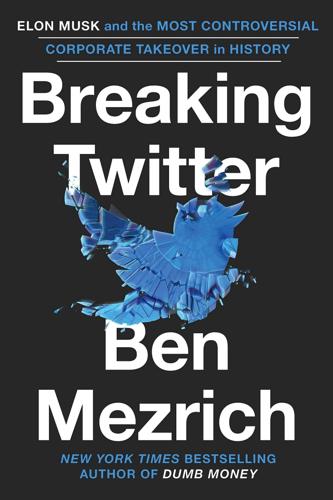
Breaking Twitter: Elon Musk and the Most Controversial Corporate Takeover in History
by
Ben Mezrich
Published 6 Nov 2023
He didn’t want to do anything to set the man off, but he might only have one chance—one brief chance—to get help. “Who is this?” he grunted into the phone, as if he didn’t know. A woman’s voice responded, loud enough that it echoed off the marble of the dark bathroom. “This is the San Francisco Police. Do you need help?” Paul made his eyes wide, for the benefit of the stranger. “Oh I guess I, I guess I called by mistake. What is this?” “This is San Francisco Police,” the woman repeated. “Do you need help?” Careful, now. “Oh, well there’s a gentleman, uh, here just waiting for my wife to come back.” Paul paused a moment, swallowing. “Nancy Pelosi,” he added, hoping that the 911 operator could quickly corroborate his phone number, confirm that he wasn’t just some crank making a late-night call.
…
“Do you need police, fire, for medical or anything?” “Uh… I don’t think so. I don’t think so.” But he knew that if he didn’t think quick, the call was going to end and he’d be alone, in the bathroom. With the hammer. “Is the Capitol Police around?” “No, this is San Francisco—” “They are usually here at the house protecting my wife.” There was another pause. “No. This is San Francisco Police.” Christ, maybe the woman didn’t have a way of cross-referencing the call. Maybe she wasn’t going to get what was happening. “I know,” Paul stalled. “I understand.” Then he decided to take a chance—held the phone slightly away from his ear and addressed the stranger.
…
Even Elon’s own inner circle had seemed to be backing off, though it was unclear why. It could have been self-motivated, to protect their own image as Twitter 2.0 was more and more under attack from the major media outlets, or simply because they didn’t have the bandwidth to run their podcasts and their VC investments while hanging around a building South of Market that no longer even had a smoothie bar, or it could have been Elon who had asked them to take a step back. It had been reported that Musk had even had issues with Calacanis, after the most visible of his “Goons” had tweeted a little too often about the changes occurring on the platform. Esther was running into the Goons less and less as the weeks progressed.
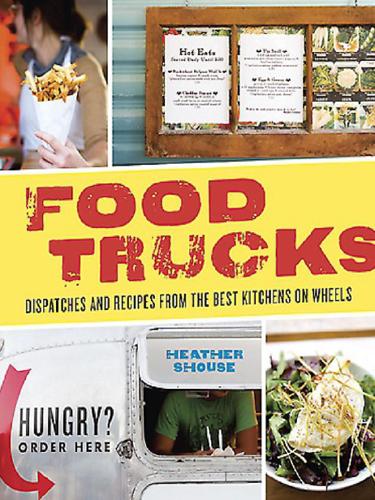
Food Trucks: Dispatches and Recipes From the Best Kitchens on Wheels
by
Shouse, Heather
Published 19 Apr 2011
Bryce is from Austin, where his dad, Jack Gilmore, has been known for his chef skil s for a couple of decades, earning himself a good rep first at Z’Tejas and now at his own restaurant, Jack Al en’s Kitchen. Not surprisingly, Bryce joined his dad in the kitchen by the time he was fourteen, then headed west to San Francisco’s California Culinary Academy, where he fel in love with farmers’ markets and eventual y landed a job cooking at Boulevard under James Beard–winner Nancy Oakes. “As much as I love San Francisco, I love Austin more,” Bryce says. “Austin’s my home, and real y, as I was getting exposed to al this stuff in San Francisco, Austin was also getting into the local food movement and the farmers’ markets were starting to get better. I felt like I wanted to be a part of the beginning of this and felt I had a lot to offer Austin.
…
Transfer to a plate, cut into triangle-shaped pieces, and serve. San Francisco, California When an unlicensed street food vendor known as “the Tamale Lady” has nearly as many Yelp reviews as The Dining Room at the Ritz Carlton, it’s clear that you have an interesting culinary community on your hands. Virginia Ramos, a.k.a. the Tamale Lady, operates on foot, not on wheels, but the Mexican immigrant recal s that when she started her side job in the early 1990s, the only other mobile food vendors were other Latinos operating taco trucks. Today, San Francisco’s street food scene has changed considerably, and as this book was going to print there was so much interest in curbside dining that city officials were holding public hearings with restaurant owners, cart operators, and members of the police force to figure out how to navigate the massive spike of interest in mobile food vending.
…
Spencer on the Go FIND IT: Folsom St. between 7th and Langton Sts., San Francisco, California KEEP UP WITH IT: www.spenceronthego.com or twitter.com/chezspencergo Escargot drenched in garlic butter, wrapped in puff pastry, and stabbed with a skewer seems like the type of thing you’d find being passed around on silver trays at a party where more people spoke French than didn’t and owning a home on the Riviera was more common than owning al of your own teeth. But thanks to a long-running joke that final y became reality, you’l actual y find these little lol ipop-like escargot puffs being sold out of a gleaming silver truck in San Francisco’s South of Market District, several blocks away from the Mission.

Western USA
by
Lonely Planet
Glimpse Golden Gate Bridge views atop the MH de Young Museum, take a walk on the wild side inside the California Academy of Sciences rainforest dome, then dig into organic Cal-Moroccan feasts at Aziza. Sights Let San Francisco’s 43 hills and more than 80 arts venues stretch your legs and imagin-ation, and take in some (literally) breathtaking views. The 7 x 7-mile city is laid out on a staid grid, but its main street is a diagonal contrarian streak called Market St. Downtown sights are within walking distance of Market St, but keep your city smarts and wits about you, especially around South of Market (SoMa) and the Tenderloin (5th to 9th Sts). SF’s most historic landmarks are in the Mission, while exciting new destinations are inside Golden Gate Park. San Francisco & the Bay Area Sights 1Baker BeachB3 2California Palace of the Legion of HonorB4 3Candlestick ParkC4 4Cliff HouseB4 5di Rosa Art + Nature PreserveC1 6Fort PointC3 7Golden Gate ParkB4 8Jack London Historic State ParkB1 9Lands EndB4 10Muir Woods National MonumentB3 11Ocean BeachB4 12Pantoll StationB3 13Point Reyes LighthouseA3 14Rodeo BeachB3 15University of California, BerkeleyC3 ACTIVITIES, COURSES & TOURS 16Aqua Surf ShopB4 Sutro Baths(see 4) Sleeping 17HI Marin Headlands HostelB3 18HI Point Reyes HostelA3 19Motel InvernessA2 Downtown San Francisco Top Sights Asian Art MuseumC7 Coit TowerD3 Davies Symphony HallB7 Ferry BuildingF4 San Francisco Museum of Modern ArtE6 Sights 114 GearyE6 249 GearyE6 377 GearyD6 4Aquarium of the BayD2 5Aquatic Park BathhouseB2 6Art InstituteC3 7Beat MuseumD4 8Cartoon Art MuseumE6 9Catharine Clark GalleryE6 10Children’s Creativity MuseumE6 11Chinatown GateD5 12Chinese Culture CenterD4 13Chinese Historical Society of America MuseumD5 14City HallB7 15Contemporary Jewish MuseumE6 16George Sterling ParkB3 17Grace CathedralC5 18Hyde Street Pier Historic ShipsB2 19Musée MécaniqueC2 20Museum of African DiasporaE6 21Museum of Craft & Folk ArtsE6 22Pier 39D1 23San Francisco Maritime National Historical ParkB2 24Transamerica PyramidE4 25Union SquareD6 26Uss PampanitoC2 Activities, Courses & Tours 27Adventure CatD2 28Alcatraz CruisesD2 29Blazing SaddlesB2 30City KayakG6 31Meeting Point for Fire Engine ToursB2 Sleeping 32Golden Gate HotelD5 33Hotel AbriD6 34Hotel BohèmeD4 35Hotel des ArtsD5 36Hotel RexD5 37Hotel VitaleF5 38Orchard Garden HotelD5 39Pacific TradewindsE5 40Petite AubergeC5 41San Remo HotelC3 42Stratford HotelD6 Eating 43Bar JulesA8 44BenuE6 45BocadillosE4 46Brenda's French Soul FoodB6 47CinecittàD3 48CoiE4 49CotognaE4 50Crown & CrumpetB2 51FarmerbrownD6 52Farmers MarketF4 53GitaneE5 Gott's Roadside(see 52) Hog Island Oyster Company(see 52) 54In-N-Out BurgerC2 55JardinièreB7 Mijita(see 52) 56MolinariD4 57Off the GridA2 58Saigon Sandwich ShopC6 Slanted Door(see 52) Drinking 59Aunt Charlie'sD6 60EndupE7 61Rebel BarB8 62Smuggler's CoveB7 63StudD8 64Tosca CafeD4 Entertainment 65111 MinnaE5 66American Conservatory TheaterD6 67AT&T ParkG7 68Cat ClubD8 69Club FugaziD3 70HarlotE5 71MezzanineD7 TIX Bay Area(see 25) 72War Memorial Opera HouseB7 73Yerba Buena Center for the ArtsE6 Shopping 74City Lights BookstoreD4 SOMA Cartoon Art Museum MUSEUM ( 415-227-8666; www.cartoonart.org; 655 Mission St; adult/child $7/5; 11am-5pm Tue-Sun) Comics earn serious consideration with shows of original Watchmen covers, too-hot-to-print political cartoons and lectures with local Pixar studio heads.
…
GAY/LES/BI/TRANS SAN FRANCISCO Doesn’t matter where you’re from, who you love or who’s your daddy: if you’re here, and queer, welcome home. The intersection of 18th and Castro Sts is the heart of the gay cruising scene, but dancing queens and slutty boys head South of Market (SoMa) for thump-thump clubs. The Mission is the preferred ’hood of alt-chicks, trans FTMs (female-to-males) and flirty femmes. Bay Area Reporter (aka BAR; www.ebar.com) covers community news and listings; San Francisco Bay Times (www.sfbaytimes.com) also has good resources for transsexuals; and free mag Gloss Magazine (www.glossmagazine.net) covers nightlife. To find out where the party is, check Honey Soundsystem (www.honeysoundsystem.com) for roving queer dance parties; Betty’s List (www.bettyslist.com) for parties, fundraisers and power-lesbian mixers; and Juanita More (www.juanitamore.com) for fierce circuit parties thrown by a drag superstar.
…
Another mile north, HI Point Montara Lighthouse Hostel ( 650-728-7177; www.norcalhostels.org; Hwy 1 & 16th St; dm $26-31, r $70-105; check-in 3:30-10:30pm; ) is an airy, ecofriendly hostel with a small private beach (reservations essential). From there, it’s just 20 more miles to San Francisco via Devil’s Slide. SAN FRANCISCO & THE BAY AREA San Francisco If you’ve ever wondered where the envelope goes when it’s pushed, here’s your answer. Psychedelic drugs, newfangled technology, gay liberation, green ventures, free speech and culinary experimentation all became mainstream long ago in San Francisco. After 160 years of booms and busts, losing your shirt has become a favorite local pastime at the clothing-optional Bay to Breakers race, Pride Parade and hot Sundays on Baker Beach.

American Kingpin: The Epic Hunt for the Criminal Mastermind Behind the Silk Road
by
Nick Bilton
Published 15 Mar 2017
Between explorations Ross went on boating trips with friends through the choppy waters of the bay, brushing past Alcatraz, the notorious prison that had once been home to Al Capone, the American gangster who fought the U.S. government during Prohibition. But one of the more memorable experiences of his time in San Francisco happened on a Thursday afternoon in early December, when Ross and René happened upon the Contemporary Jewish Museum in the South of Market area of the city. Homeless people, mostly drug addicts who had fallen on hard times, lined the streets, pushing their lives in carts from one soup kitchen or rehab center to the next, past the big glass buildings where those billion-dollar start-ups grew larger and more powerful by the hour.
…
In other words, the Dread Pirate Roberts might have wiped the murder scene down, but he had left the corner of a thumbprint on the front door when he walked out. This digital fingerprint led the FBI agents to a small bistrolike café on Laguna Street in San Francisco called Momi Toby’s. Whoever the Dread Pirate Roberts was, he was either living in San Francisco or had spent some time there. But that was it. One measly clue that possibly pointed to the whereabouts of the Dread Pirate Roberts. “Not much I can do with it,” Tarbell said to Jared. “What am I going to do, send an FBI agent into a coffee shop in San Francisco and tell them to look for someone on a laptop?” Still, they had been scouring the Internet traffic from the café, looking for other leads.
…
Based on the mountain of evidence Gary had seen on the server, the butcher block paper on the wall with all those IP addresses, and Jared’s undercover account, Gary decided that there was clearly no reason for him to send the FBI the name of his “guy” in San Francisco. Chapter 58 JULIA COMES TO SAN FRANCISCO The train door slid open and Julia walked onto the platform and into another world. She wasn’t sure this was the right stop until she saw the sign that read GLEN PARK. She made her way toward the exit, dragging a large wheelie suitcase behind her. As she strode into the sunlight of San Francisco, she saw him standing on the street, waiting. His hair was as ragged as it had been the day they met, though he looked slightly different now.
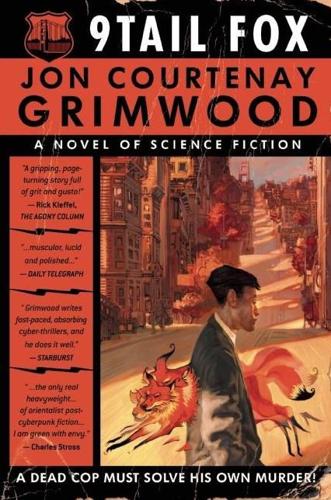
9Tail Fox
by
Jon Courtenay Grimwood
Published 19 Oct 2005
A dead man in a borrowed body. Bobby sighed. CHAPTER 13 Thursday 19 February Half of Bobby’s childhood seemed to have taken place on planes. San Francisco to New York. New York to Paris. Paris to San Francisco. Juggling families, trying to slip through gaps between the loyalties that threatened to crush him. Aged eleven, on a hot October afternoon, Bobby watched a couple ignore each other for the time it took a plane to travel from San Francisco to New York. Two children sat in the seats between them, buffers against a silence that was already frosting as the plane accelerated along the runway.
…
CHAPTER 12 Thursday 19 February After the snow stopped falling and the runways had been cleared, Bobby caught the first flight out of New York for San Francisco. The hotels circling Kennedy Airport were full of families waiting for flights. So it took money and perseverance to find Bobby a seat, although it helped that Bobby wanted to fly business class and was willing to pay the first price offered. All he wanted was what everyone wanted, to get home. It was only as Bobby headed away from check-in that he realised his home might still be in San Francisco, but the house there was no longer his … ‘Mr Vanberg?’ The voice matched the questioner’s face, professionally pleasant and slightly watchful.
…
Helen paid for everything from Bobby’s flight and the cost of his hotel room to food, winter clothing and taxis both ways from Bobby’s home to San Francisco airport. Added to which, she was to meet him at JFK and have a taxi waiting. No using the subway, no sharing cabs with complete strangers. Bobby’s father had no problem with her using the bus. Grandfather Lau, however, wanted to make it as difficult as possible. And, because of this, Helen had to fly out from Paris to New York the day before Bobby was allowed to fly from San Francisco to meet her. Everything was to turn on a telephone call. Until Johnny Zha heard from his ex-wife’s sister that she was already at JFK, Grandfather Lau would not allow Bobby onto the New-York-bound plane.
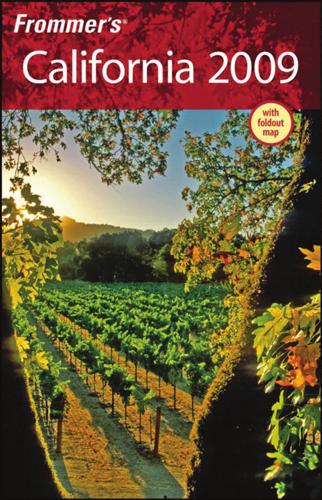
Frommer's California 2009
by
Matthew Poole
,
Harry Basch
,
Mark Hiss
and
Erika Lenkert
Published 2 Jan 2009
See also specific neighborhoods accommodations, 703–722 area codes, 702 babysitters, 702 beaches, 739–741 doctors and dentists, 702 downtown, 699 accommodations, 703, 706–710 restaurants, 722–725 shopping, 754 sightseeing, 744–745 emergencies, 703 getting around, 700–702 hospitals, 703 layout of, 698 neighborhoods in brief, 699–700 nightlife, 755–759 outdoor activities, 749–753 police, 703 post office, 703 restaurants, 722–734 safety, 703 shopping, 753–755 sightseeing, 734–749 sightseeing tours, 748–749 taxes, 703 taxis, 702 traveling to, 695–696 visitor information, 698 what’s new in, 5–6 San Diego Air & Space Museum, 742 San Diego Aircraft Carrier Museum, 745 San Diego and environs, 695–768 San Diego-Coronado Bay Bridge, 748 San Diego County Fair, 41 San Diego Museum of Art (SDMA), 742, 744 San Diego Natural History Museum (SDNHM), 744 San Diego Opera, 757 San Diego Padres, 744 San Diego Passport, 738 San Diego Repertory Theatre, 756 San Diego Symphony, 756–757 San Diego Wild Animal Park, 734–735 San Diego Zoo, 735–738 San Fernando Valley, 492 accommodations, 513–514 San Francisco, 65–149 accommodations, 77–94 reservations, 77 American Express, 75 architectural highlights, 125–126 area codes, 76 cable cars, 73–74, 120–121 The Castro, 72 accommodations, 93–94 restaurants, 115–116 shopping, 138 sightseeing, 130 Civic Center, 72, 126 accommodations, 92–93 restaurants, 111–112 climate, 38 Cow Hollow, 71 accommodations, 91–92 restaurants, 108–111 earthquakes, 76 emergencies, 76 Financial District, 70–71 accommodations, 85 restaurants, 102–104 Fisherman’s Wharf, 71 accommodations, 89–91 restaurants, 107–108 shopping, 138–139 sightseeing, 122–123 getting around, 73–75 Haight-Ashbury, 73 accommodations, 93–94 restaurants, 112–113 shopping, 139 Hayes Valley shopping, 138 hospitals, 76 Japantown, 72 restaurant, 111 layout of, 67, 70 Marina District, 71 restaurants, 108–111 Mission District, 72 restaurants, 116–117 sightseeing, 130 money-saving tourist passes, 67 neighborhoods, 70–73 sightseeing, 130–131 nightlife, 139–149 Nob Hill & Russian Hill, 71 accommodations, 88–89 restaurants, 105 sightseeing, 130–131 North Beach, 71 accommodations, 89–91 restaurants, 105–107 shopping, 139 sightseeing, 131 organized tours, 132 outdoor pursuits, 134–136 Pacific Heights, 72 accommodations, 91–92 parking, 75 restaurants, 94–117 Richmond & Sunset Districts, 73, 113–114 safety, 76 shopping, 136–139 sightseeing, 117–134 SoMa (south of Market Street), 72 accommodations, 85–88 restaurants, 99–102 shopping, 138 taxes, 76 taxis, 74–75 toilets, 76 traveling to, 65–66 visitor information, 66–67 what’s new in, 1–2 San Francisco Ballet, 140–141 San Francisco Brewing Company, 147 San Francisco CityPass, 67 San Francisco Giants, 120 San Francisco International Airport (SFO), 65 San Francisco International Film Festival, 40 San Francisco Lesbian, Gay, Bisexual, Transgender Pride Parade, 41 San Francisco Maritime National Historical Park, 129 San Francisco Museum of Modern Art (SFMOMA), 129–130 San Francisco-Oakland Bay Bridge (San Francisco), 126 San Francisco Opera, 141 San Francisco Symphony, 141 San Francisco Zoo (& Children’s Zoo), 131 San Gabriel Mountains, 657 San Joaquin Valley (the Central Valley), 374–378 San Jose, 176–180 San Jose Historical Museum, 177 San Jose Museum of Art, 177 San Juan Bautista, 386 San Juan Bautista State Historic Park, 386 San Juan Capistrano, 643, 646 San Luis Obispo, 435–439 San Miguel, 473 San Simeon, 424–432 Santa Anita Racetrack (Arcadia), 576 Santa Barbara, 455–465 accommodations, 460–463 outdoor activities, 458–459 restaurants, 463–465 shopping, 459–460 sightseeing, 455–458 traveling to, 455 visitor information, 455 Santa Barbara Botanic Garden, 458 Santa Barbara County Courthouse, 456 Santa Barbara Family Vacation Center, 461 Santa Barbara International Film Festival, 39 Santa Barbara Island, 473–474 Santa Barbara Museum of Art, 456 Santa Barbara Zoo, 458 Santa Catalina Island, 602–611 Santa Cruz, 379–386, 472–473 Santa Cruz Harbor, 381 Santa Cruz Surfing Museum, 380 Santa Monica and the Beaches, 483, 550 accommodations, 498–502 restaurants, 515–520 shopping, 583 sightseeing, 551 Santa Monica Mountains, 572 Santa Monica Museum of Art at Bergamot Station (Los Angeles), 550 785 786 Santa Monica Pier (Los Angeles), 541 Santa Monica State Beach, 568 Santana Row (San Jose), 178 Santa Rosa accommodations, 214 restaurant, 215 Santa Rosa Chapel and Cemetery (Cambria), 428 Santa Rosa Island, 473 Santa Ynez Canyon, 572 Santa Ynez Valley, 448–454 Sausalito, 162–165 Sausalito Art Festival, 43 Sauvignon blanc, 34 Scharffen Berger Chocolate Maker (Berkeley), 156 Schindler House (Los Angeles), 551 Schonchin Butte, 304 Schramsberg (Calistoga), 191–192 Scotts Flat Lake, 361 Scotty’s Castle & the Gas House Museum (Death Valley), 693 Scuba diving Channel Islands National Park, 474 Monterey, 391 San Diego, 753 Santa Catalina Island, 607 Seal and Bird Rocks, 403 Seal Beach, 642 Seal Rocks (San Francisco), 133 SeaWorld San Diego, 739 Sebastiani Vineyards & Winery (Sonoma), 202 Segway rentals, Los Angeles, 573 Segway tours Angel Island, 166 San Francisco, 122 Self-Realization Fellowship (Encinitas), 763 Senior travel, 51 Sentinel Bridge, 317 Sequoia and Kings Canyon national parks, 339–347 accommodations, 346–347 Sequoia Audubon Trail, 170 17-Mile Drive (Pebble Beach), 402–403 Seymour Marine Discovery Center (Santa Cruz), 381 SFMOMA MuseumStore (San Francisco), 138 Shafer Vineyards (Napa), 186 Shasta (town), 290 Shasta, Lake, 290, 293 Shasta, Mount, 288, 293–297 Shasta Dam, 290 Shasta Dam and Power Plant, 293 Shasta Trinity National Forest, 292 Shaver Lake, 376–378 Shrine Drive-Thru Tree, 245 Sierra-at-Tahoe, 266 Sierra National Forest, 375–378 Sierra Summit Ski Area, 378 Silent Movie Theatre (Los Angeles), 598 Silver Lake (Los Angeles), 488 Simon Rodia Watts Towers Jazz Festival, 43 Siskiyou, Lake, 295 Sisson Museum, 294 Six Flags California (Los Angeles), 542 Skiing.
…
When asking for directions, find out the nearest cross street and the neighborhood where your destination is located, but be car eful not to confuse numerical av enues with numerical streets. N umerical av enues ( Third A ve. and so on) ar e in the Richmond and S unset Districts, in the western part of the city. Numerical streets (Third St. and so on) are south of Market Street, in the east and south par ts of town. NEIGHBORHOODS IN BRIEF Union S quare Union S quare is the commercial hub of San Francisco. Most major hotels and depar tment stores are crammed into the area surrounding the actual squar e, which was named for a series of violent pr o-union mass demonstrations staged here on the eve of the Civil War. A plethora of upscale boutiques, restaurants, and galleries occupy the spaces tucked betw een the larger buildings.
…
Most major hotels carr y discount-shopping guides. Many buses pass through this area, including nos. 9, 12, 14, 15, 19, 26, 27, 30, 42, 45, and 76. The SFMOMA MuseumStore, 151 Third St., 2 blocks south of Market Street, across from Yerba Buena Gardens ( & 415/357-4035; www.sfmoma.org), is a fav orite among locals. The shop’s art cards and books, as w ell as je welry, housewares, and knickknacks are well designed. For visitors, the San Francisco mementos here are much more tasteful than those sold in Fisherman’s Wharf. Fashionable bargain hunters head to Jeremys, 2 S. P ark, at S econd Street betw een Bryant and Brannan streets ( & 415/882-4929; www.jeremys.com), where top designer fashions, from shoes to suits, sell at rock-bottom prices.
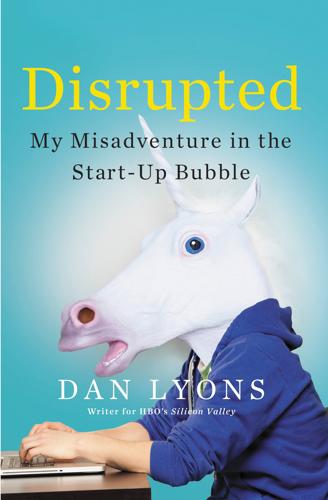
Disrupted: My Misadventure in the Start-Up Bubble
by
Dan Lyons
Published 4 Apr 2016
Suddenly I am the editor-in-chief of a struggling technology news website called ReadWrite, a tiny blog with three full-time employees and a half-dozen woefully underpaid freelancers. ReadWrite is based in San Francisco, which means I fly out on Monday and take a redeye back to Boston on Thursday or Friday. On weeks when I’m not in San Francisco I’m either in New York, where ReadWrite’s parent company is based, or in some other city, making sales calls, trying to get tech companies to buy ads from us. It’s not a lot of fun, but I’m making a paycheck and keeping my eyes open for something better. ReadWrite’s offices are on Townsend Street, in the South of Market neighborhood, where all of the hot tech start-ups are located—Twitter, Uber, Dropbox, Airbnb.
…
But as things turned out, those people may have been right to be afraid. Regarding terminology: When I use the term Silicon Valley I do not mean to denote an actual geographic region—the sixty-mile peninsula between San Francisco and San Jose, where the original technology companies were built. Instead, like Hollywood, or Wall Street, Silicon Valley has become a metaphorical name for an industry, one that exists in Los Angeles, Seattle, New York, Boston, and countless other places, as well as the San Francisco Bay Area. The term bubble, as I use it, refers not only to the economic bubble in which the valuation of some tech start-ups went crazy but also to the mindset of the people working inside technology companies, the true believers and Kool-Aid drinkers, the people who live inside their own filter bubble, brimming with self-confidence and self-regard, impervious to criticism, immunized against reality, unaware of how ridiculous they appear to the outside world.
…
With Sting, he traveled to the Peruvian rain forest, where they tripped on ayahuasca and ended up hugging and sobbing on a mud floor. He and his best friend, Oracle CEO Larry Ellison, drove to the Tenderloin in San Francisco and fired water cannons at transvestite hookers. They made prank phone calls, dialing a local Thai restaurants to order “penis sauce” or calling a hardware store in the Castro section of San Francisco to inquire about black caulk. Eventually I got caught. A reporter at the New York Times figured out who was writing the Fake Steve blog and confronted me, and I came clean. There were profiles about me all over the place, from the New York Times to Der Spiegel in Germany and El Mundo in Spain.

The Rise of the Network Society
by
Manuel Castells
Published 31 Aug 1996
started in Silicon Valley.72 Moreover, most of the Internet start-ups that introduced e-commerce, and revolutionized business (such as Ebay), also clustered in Silicon Valley. The coming of multimedia in the mid-1990s created a network of technological and business linkages between computer-design capabilities from Silicon Valley companies and image-producing studios in Hollywood, immediately labeled the “Siliwood” industry. And in a run-down corner of San Francisco (South of Market), artists, graphic designers, and software writers came together in the so-called “Multimedia Gulch” that threatens to flood our living rooms with images coming from their fevered minds – in the process creating the most dynamic multimedia design center in the world.73 Can this social, cultural, and spatial pattern of innovation be extrapolated throughout the world?
…
Rohozinski, Rafal (1998) “Mapping Russian cyberspace: a perspective on democracy and the Net”, paper delivered at the United Nations Research Institute on Social Development Conference on Globalization and Inequality, Geneva, June 22. Rosen, Ken et al. (1999) “The multimedia industry in San Francisco’s South of Market area”, Berkeley, University of California, Haas School of Business, Centre for Real Estate Economics, research report. Rosenbaum, Andrew (1992) “France’s Minitel has finally grown up”, Electronics, 65(6). Rosenberg, Nathan (1976) Perspectives on Technology, Cambridge: Cambridge University Press. —— (1982) Inside the Black Box: Technology and Economics, Cambridge: Cambridge University Press. —— and Birdzell, L.E. (1986) How the West Grew Rich: the Economic Transformation of the Industrial World, New York: Basic Books.
…
Sometimes, as in the European metropolitan regions, but also in California or New York/New Jersey, these centers are pre-existing cities incorporated in the metropolitan region by fast railway and motorway transportation networks, supplemented with advanced telecommunication networks and computer networks. Sometimes the central city is still the urban core, as in London, Paris, or Barcelona. But often there are no clearly dominant urban centers. For instance, the largest city in the San Francisco Bay Area is not San Francisco but San José, the capital of Silicon Valley. Yet, San Francisco remains the key location for advanced services, while the East Bay includes a major university (Berkeley) and a biotechnology global hub (Emeryville). In other instances, as in Atlanta or in Shanghai, the new centers (North Atlanta, Pudong) are induced by the fast growth of new business services in the metropolitan region.
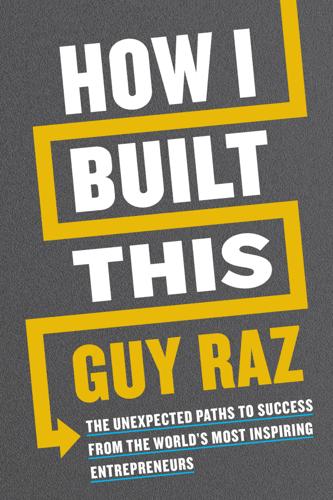
How I Built This: The Unexpected Paths to Success From the World's Most Inspiring Entrepreneurs
by
Guy Raz
Published 14 Sep 2020
Just ask Reed Hastings—or, better yet, ask his 7,000 employees. 21 Think Small to Get Big When we moved our family from Washington, DC, to the Bay Area, one of the first things we did was to take the ferry from Jack London Square in Oakland across the bay to San Francisco and spend the day walking around. My boys wanted to do the typical San Francisco stuff—watch the sea lions at Fisherman’s Wharf, ride a cable car down Powell Street, visit Alcatraz—but as we disembarked at the iconic Ferry Building, walked out onto the Embarcadero, and looked up Market Street toward downtown, I was taken by a view of the city I’d never seen before as a visitor when I’d come in from the airport or across the Bay Bridge. To one side was the San Francisco we know from movies: the two identical beige buildings of One Market Plaza; the Transamerica Pyramid; the four towers of the Embarcadero Center, which look like Earth reached up to give the sign of the horns using buildings instead of fingers.
…
With mercantile roots, he gave up his fantasy of finding gold and decided instead to open a store selling mining supplies and sweets in Stockton, a town at the midpoint on the road from San Francisco to the nearest mining claims in the Sierra foothills. Over the next few years, as that store flourished, he opened a second one in San Francisco, then a hotel, and when that burned down in 1851, he built a stand-alone confectionery that would become the Ghirardelli Chocolate Company. In 1852, as San Francisco began to explode with growth, Henry Wells and William Fargo came out from New York to form Wells, Fargo & Co. to service the banking needs of miners and merchants alike.
…
Childhood friends from Grosse Pointe, Michigan, Adam and Eric went to college on opposite sides of the country for very different purposes—Adam to Stanford for chemical engineering, Eric to Rhode Island for business—before reuniting in San Francisco in the late 1990s, entirely by chance. “It was Thanksgiving one year, maybe 1997 or 1998. I walk onto the plane, and I see Eric,” Adam told me of their encounter on the way home for the holiday. “He’d only moved to San Francisco a couple weeks prior. There was an open seat. I ended up sitting next to him on the plane, and for five hours we got all caught up. It turned out we were living on the exact same block.”

From Counterculture to Cyberculture: Stewart Brand, the Whole Earth Network, and the Rise of Digital Utopianism
by
Fred Turner
Published 31 Aug 2006
By the end of the decade, millions of Americans were investing their savings in Internet companies, very much in the belief that the economy and perhaps even humanity as a whole had entered a new era. Young engineers were migrating to the hubs of digital innovation as fast as they could. In the industrial-era lofts south of Market Street in San Francisco and in the narrow corridors of Manhattan’s Silicon Alley, twenty-something marketers pulled their six-hundred-dollar Herman Miller chairs around hand-hewn oak and redwood tables and plotted something called “web strategy.” More than a few began to imagine themselves as bits of talent and information swirling in the currents of a knowledge economy, their own careers tied to their ability to divine its rapidly changing laws.59 Corporations reconfigured offices to facilitate flexible work, programmers camped in their companies’ open-all-night offices, and day after day, financiers, technologists, and ordinary Americans checked the financial pages for signs that the future was still dawning.
…
“I was looking for the wrong thing,” he wrote in his diary. “I was looking for San Francisco beauty, San Francisco people, San Francisco happiness—the bohemian style. . . . Therefore, Resolved—to go posh. To frequent the theaters, music halls, galleries, and homes not as an interloper taking all he can learn, but as a learning participant.”10 Brand remained somewhat isolated in Washington, but when he returned to Fort Dix, he found his way into a swirling New York art scene. In the summer of 1960, Brand had met a young San Francisco painter named Steve Durkee; by 1961 Durkee had moved into a lower-Manhattan loft, where Brand began to visit him on weekends from Fort Dix.
…
C., 48 Roberts, Walter Orr, 130 Rolling Stone, 116 Roosevelt, Franklin, 17 Rosenblueth, Arturo, 20, 22, 25, 26, 122 Rossetto, Louis, 207, 209, 210, 216, 217, 225, 235, 236 Rossinow, Douglas, 34 Roszak, Theodore, 36, 47, 70; The Making of a Counterculture, 29, 32 Rothschild, Michael, 223, 224; Binomics: The Inevitability of Capitalism, 197–98 Royal Dutch/Shell: countercultural practices, 184; Planning Group, 181 Ruesch, Jürgen, 53 Sachs, Goldman, 235 Saffo, Paul, 172 SAGE (Semi-Automated Ground Environment air defense system), 19, 24, 27–28, 266n53 Salmon, Robert, 191 Salon (online magazine), 156 San Francisco Mime Troupe, 66 San Francisco Museum of Art, 1963 USCO performance, 51 San Francisco Oracle, 80 San Francisco Zen Center, 125 Santa Fe Institute (SFI), 176, 190, 198, 200 Savio, Mario, 11, 12, 14, 16 Saxenian, AnnaLee, 150, 278n23 scenario planning, 184, 186 – 87 School of Management and Strategic Studies, 129 Schwartz, Peter, 248; contributions to Wired, 217, 218; and Global Business Network, 183, 184 – 85, 187, 188; and Learning Conferences, 181, 182; “The Long Boom,” 233 –34; and scenario planning, 181, 187; and Wired, 211–12 science, sudden importance of after World War II, 17, 23 Scientific American, 80 Scorpion, 170 Seburn, Roy, 61 second-generation cybernetics, 148 Secret Service, 170, 172 Seed (newspaper), 36 self-directing system, 21, 22 servomechanisms, 21, 22 –23, 265n43 Shannon, Claude, 22, 23, 47, 265n37 shareware, 137 Shell Oil, 5, 182; Group Planning Office, 186 Shirley, John, 164 Shugart, Diana, 98 Signal, 196 –97, 284n42 Silicon Beach Software, 211 Silicon Valley, 3; collaborative norm, 150; Defense Department contracts, 149 –50; growth of economy, 150; illegal aliens in workforce, 260; job turnover, 150 –51 Silver, David, 133 Simple Living Project, 70 Smith & Hawken, 128, 185 socioeconomic change, “Third Wave,” 228 soft technology, 125, 128 Software Review, 131, 132 Sol, 115 Soleri, Paolo, 81 Source, the, 130 Soviet Union, testing of an atomic bomb in 1949, 31 space station, 126 Spacewar, 116, 134 Spencer, Herbert, 210 Spengler, Oswald, 62 spinner, as power-leveling device, 65 Spooner, Lysander, 210 “stagflation,” 119 Index Stalin, Joseph, 24 Stallman, Richard, 136 Stanford Artificial Intelligence Laboratory, 116, 133, 134, 177 Stanford Research Institute (SRI), 70, 88; ARPANET node, 109; Augmentation Research Center (ARC), 61, 106, 107– 8, 109, 110; countercultural practices, 184; and human-computer integration, 104; and Peradam, 110; Values and Lifestyles Program, 183 – 84 Stanford University, 70, 150 Star, Susan Leigh, 72 Stark, David, 156, 157 Stephenson, Karen, 191 Sterling, Bruce, 164, 167 Stern, Gerd, 48, 49, 50, 51, 65 Stockwell, Foster, 267n70 Stolaroff, Myron, 61 Stone, Allucquère Rosanne, 163 Stone, Robert, 60 Students for a Democratic Society (SDS), 34, 35, 118, 209, 253, 267n80 “Summer of Love,” 32 Sun Microsystems, 172 surveillance data, 169 Sutherland, Ivan, 111 Syndicus, Maria, 151 Systems Science Laboratory, 112 systems theory, 264n28, 265n43; as contact language for robotics community, 198; facilitation of interdisciplinary collaboration, 24; and military-industrial-academic complex, 27, 28; and New Communalism, 38; and Whole Earth Catalog, 71, 78, 79, 84 Taylor, Robert, 111 TCI, 208 Technology, Entertainment, and Design (TED) Conference, 177, 211 techno-mysticism, 50 Telecommunications Act of 1996, 13, 230 telecommunications policy, 230 Terman, Frederick, 150 Tesler, Larry, 111, 112, 246, 251–52 Tet Offensive, 98 Thacker, Charles, 111 Theall, Donald, 52 Thinking Machines Corporation, 182 Thompson, Mark, 201 [ 325 ] Thoreau, Henry David, 55 Thrift, Nigel, 214 time-sharing computing, 28, 105, 107, 114, 117, 246 Toffler, Alvin, 208, 215, 222, 227; “Magna Carta for the Knowledge Age,” 228 –30 Toffler, Heidi, 227 Tom Swift Terminal, 115 Tough, Paul, 167– 68, 169 “trading zone,” 72 Transcendentalism, 55, 75 tribalism, 49, 53 Trips Festival, 65 – 68, 67, 92, 164, 178 Truman administration, Defense Systems Engineering Committee, 27–28 Tucker, Benjamin, 210 Tudor, David, 48 Turkle, Sherry, 189 Turner, Ted, 211 Turoff, Murray, 130 2600 (magazine), 168, 169 Ullman, Ellen, Close to the Machine, 257–59 Unified Planning Machinery, 181 Universal Resource Locator (URL), 213 universal rhetoric, 84 universities: engagement with cold war politics, 12; wartime funding, 18 university-based research: after World War II, 18; before World War II, 17 Urban House, 70 urban rioting, 74 USCO, 48 –51, 66; anti-authoritarian humanism and tribal elitism, 54; design of comprehensive media environments, 58; electronic communication technologies, 52; motto, 54; multimedia backdrops, 51; questions of leadership and gender politics, 50; “Shrine,” 51; techno-mystical ideology, 49 – 50; theatrical ecologies, 51 Varela, Francisco, 182, 183 “Verbal American Landscape,” 51 Viacom, 208 Vietnam War, 74; end of, 120; protests against, 34, 35 virtual communities, 6, 142, 161– 62, 247, 248 “virtual reality,” 163 Volvo, 182 von Foerster, Heinz, Observing Systems, 122 [ 326 ] Index Von Neumann, John, 226, 264n28 VPL Research, 163, 165 Wack, Pierre, 186 – 87 Walking Journal, 131 Wallace, Bob, 136 –37 Warm Springs Indian Reservation, 59 Warshall, Peter, 182, 189, 191, 192 Weathermen, 118 Weaver, Warren, 23 Web browsers, 213 –14, 222 Weir, Bob, 166 WELL (Whole Earth ’Lectronic Link), 3, 6, 7, 141– 48, 247; as BBS, 144; “Bozo filter,” 145; as community held together by talk, 147; cultural tools inherited from counterculture, 156; design goals, 143; early management policies, 145; as economic heterarchy, 153 –59; fluid boundary between public and private, 154; gift economy, 157– 58; hosting of regular forums to discuss Wired articles, 217; interactive collectivity in real time, 151; managed according to a mix of cybernetic principles, 147– 48; membership, 278n29; performance value, 155; powerful form of economic as well as interpersonal support, 248; prominence of women, 151–52; reputation value, 155 –56; resource for the redefinition of cyberspace, 162; rhetoric of community, 157, 158; rhetoric of virtual community, 161; “Scribble” feature, 145; as a self-regulating biotechnological system, 146; subscription rates, 145; users from the growing computer industry, 151; users in earliest years, 143; users’ ownership of postings, 145; users’ postings had value in both the social and the economic registers, 156; as virtual community, 142, 158 –59; “WELL Engaged” system, 277n1; WELL Office Parties (WOPs), 158; Whole Earth ethos, 146, 148; women and, 278n29 Wenner, Jann, 116 “We R All One,” 51 Western Behavioral Sciences Institute, La Jolla, California, 129 Wheeler, Bill, 77 Wheeler’s Ranch, 77 Whirlwind computer, 27 Whitman, Walt, 62 Whole Earth Catalog, 3, 4, 57, 82; celebrated small-scale technologies, 5, 79, 125; consistency, 81– 82; contributions from four social groups, 73; convergence of systems theory and New Communalist politics, 71, 104, 111; “Cowboy Nomad,” 86 – 87; defined purpose, 82 – 83; Demise Party, 115; design framework, 80; development of, 71; few references to the Vietnam War, 98; first, 79 – 80; front cover, 83; full financial accounts in every issue, 90; function, 91; and geodesic domes, 94; geographically distributed network of counterculturalists, 151; guide to a new way of being an individual, 88 – 89; information goods, 92; as information technology, 69 –102; information technology and cybernetics to a New Communalist social vision, 104; legitimacy exchange, 85; little attention to questions of gender, race, and class, 91–102; local systems mirrored global systems, 100; material goods, 92; model for the WELL, 141, 142 – 43; narrow focus on women’s sexuality, 98; as network forum, 72, 73, 78 –91, 101, 245; offered new ways to imagine the possibilities of computers, 114; “personal” technologies, 92 –93; principles of juxtaposition, 84; products belonging to the do-ityourself tradition, 93; relationship between information, technology, and community, 110; replicated mainstream hierarchies of social distinction, 100; research orientation, 79; seemingly comprehensive informational system, 83; statement of purpose and arrangement of categories, 84 – 85; Supplement, 80 – 81; systems theory as contact language and structuring principle, 71, 79, 84; systems theory principles, 84; told readers how to reach out to one another, 84; tools for transformation, 91–97; “tools” linked multiple networks and institutions, 93; as town squares, 89; and typesetting technologies, 272n28; vision of technology as a countercultural force, 6; and the WELL, 153 –54, 156 Whole Earth community: imagined world as a series of overlapping information systems, 250; involvement with virtual reality, 281n61; rhetoric of cybernetics to facilitate exchange of legitimacy between technological and countercultural communities, 250 Whole Earth Epilog, 120 Index Whole Earth ’Lectronic Link (WELL).
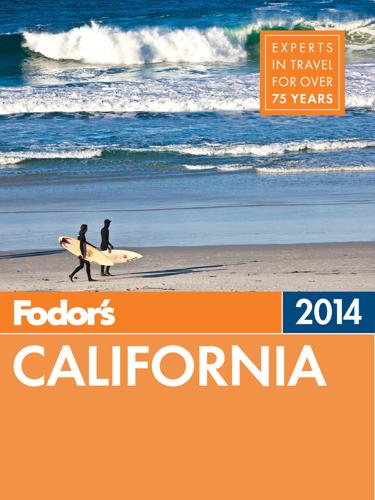
Fodor's California 2014
by
Fodor's
Published 5 Nov 2013
BART Travel BART (Bay Area Rapid Transit) trains, which run until midnight, travel under the bay via tunnel to connect San Francisco with Oakland, Berkeley, and other cities and towns beyond. Within San Francisco, stations are limited to downtown, the Mission, and a couple of outlying neighborhoods. Trains travel frequently from early morning until evening on weekdays. After 8 pm weekdays and on weekends there’s often a 20-minute wait between trains on the same line. Trains also travel south from San Francisco as far as Millbrae. BART trains connect downtown San Francisco to San Francisco International Airport; the ride costs $8.25. Intracity San Francisco fares are $1.75; intercity fares are $3.15 to $8.50.
…
Getting Here and Around Air Travel The major gateway to San Francisco is San Francisco International Airport (SFO), 15 miles south of the city. It’s off U.S. 101 near Millbrae and San Bruno. Oakland International Airport (OAK) is across the bay, not much farther away from downtown San Francisco (via I–80 east and I–880 south), but rush-hour traffic on the Bay Bridge may lengthen travel times considerably. San Jose International Airport (SJC) is about 40 miles south of San Francisco; travel time depends largely on traffic flow, but plan on an hour and a half with moderate traffic. Airports San Francisco International Airport (SFO). | 800/435–9736, 650/821–8211 | www.flysfo.com.
…
The California Zephyr travels from Chicago to the Bay Area, and has spectacular alpine vistas as it crosses the Sierra Nevada range. San Francisco doesn’t have an Amtrak train station but does have an Amtrak bus station, at the Ferry Building, from which shuttle buses transport passengers to trains in Emeryville, just over the Bay Bridge. Shuttle buses also connect the Emeryville train station with downtown Oakland, the Caltrain station, and other points in downtown San Francisco. You can buy a California Rail Pass, which gives you 7 days of travel in a 21-day period for $159. Caltrain connects San Francisco to Palo Alto, San Jose, Santa Clara, and many smaller cities en route. In San Francisco, trains leave from the main depot, at 4th and Townsend streets, and a rail-side stop at 22nd and Pennsylvania streets.
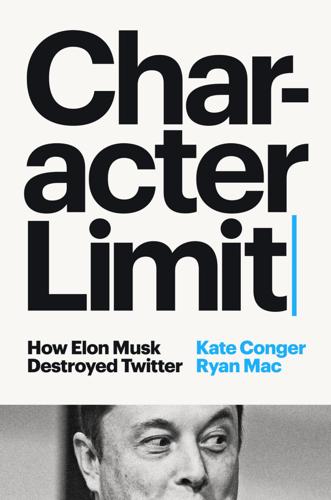
Character Limit: How Elon Musk Destroyed Twitter
by
Kate Conger
and
Ryan Mac
Published 17 Sep 2024
In July 2000, he had sketched the idea in a legal pad with a blue ballpoint, calling it My.Stat.Us, surrounding the product name with curlicued doodles. In the sketch, Dorsey’s status was “reading,” but other options included “in bed” and “going to park.” At the time, Dorsey frequented South Park in San Francisco, a small oval of green space in the city’s South of Market district, nestled among tech offices and apartment buildings. The idea stayed rooted in the back of his mind as Odeo sputtered along. The start-up was struggling to get users, and when Apple added podcasts to iTunes in 2005, Odeo was dead on arrival. Dorsey saw an opportunity and started pitching his status update concept to Williams and other leaders at Odeo.
…
“I actually got the nose ring because there was just an impulse thing—I thought that might look really cool,” Dorsey later said on 60 Minutes. “There was no real statement that I was trying to make.” Having taken a few freelance coding gigs around the Bay Area, including one building a dispatch service for the ferries to San Francisco’s Alcatraz Island, Dorsey came across Odeo, a podcasting start-up that web entrepreneur Ev Williams was building in San Francisco, in 2005. Williams had made a fortune two years earlier by selling his publishing platform Blogger to Google, and Odeo was his next act. With Blogger, Williams had taken pride in delivering publishing to the masses, allowing anyone to post their own content online with a single click.
…
* * * >>> On March 19, little more than a week after the truce with Elliott, California issued its first stay-at-home order, banning residents from leaving their homes except for essential tasks. As the pandemic began to rage, Twitter’s headquarters, an Art Deco high-rise on San Francisco’s Market Street, lay empty. Dorsey initially retreated to his mansions in San Francisco’s Sea Cliff neighborhood and in Big Sur. But he soon hit the road, traveling to Hawaii, Costa Rica, and French Polynesia. His direct reports complained that they could sometimes hear roosters crowing in the background of his conference calls, a reminder that he was on an island, while they were trapped in their apartments.

Frommer's San Diego 2011
by
Mark Hiss
Published 2 Jan 2007
The British explorer George Vancouver was, in 1793, perhaps the first to wonder why San Diegans had situated their settlement so far away from what most agreed was a rather wonderful port. In 1850, San Francisco merchant William Heath Davis had a similar idea and purchased 160 acres of bayside land in what was then called “New Town” (present-day downtown), about 4 miles south of Old Town. In hopes of luring people and businesses, Davis built a wharf, ordered a handful of prefab saltbox houses shipped in from Maine, and oversaw the opening of two hotels. New Town didn’t take off, however, and the experiment was dubbed “Davis’s Folly.” NEW TOWN BOOM & BUST Less than 2 decades later, another San Francisco businessman, Alonzo Horton, swooped in and picked up 800 acres in New Town for $265.
…
MTS MTS PETCO Park 13 San Diego Chinese Historical Museum 10 Seaport Village 11 USS Midway Museum 4 William Heath Davis House Museum 9 Maritime Museum This flotilla of classic ships is led by the full-rigged merchant vessel Star of India (1863), a National Historic Landmark and the world’s oldest ship that still goes to sea. The gleaming white San Francisco–Oakland steampowered ferry Berkeley (1898) worked round-the-clock to carry people to safety following the 1906 San Francisco earthquake; it now pulls duty as a museum with fine ship models on display. The elegant Medea (1904) is one of the world’s few remaining large steam yachts, and the Pilot (1914) was San Diego Bay’s official pilot boat for 82 years.
…
The ship, whose billowing sails are a familiar sight along Harbor Drive, once carried cargo to India and immigrants to New Zealand, and it braved the arctic ice in Alaska to work in the salmon industry. Another component of the museum is the 1898 ferry Berkeley, built to operate between San Francisco and Oakland. In service through 1958, it carried survivors to safety 24 hours a day for 4 days after the 1906 San Francisco earthquake. You can also check out the HMS Surprise, which had a star turn in the film Master and Commander: The Far Side of the World; a Soviet-era B-39 attack submarine; the Californian, a replica of a 19th-century revenue cutter; the Medea, a 1904 steam yacht; and the Pilot, which served as San Diego Bay’s official pilot boat for 82 years.

Gonzo: The Life of Hunter S. Thompson
by
Corey Seymour
,
Johnny Depp
and
Jann S. Wenner
Published 31 Oct 2007
Hunter decided he wanted to be closer to the action, so they moved down to a place right across from the University of California Medical Center in San Francisco. He and I rented a trailer and I moved them down, which was another adventure because the mattress flew out of the trailer, as it usually does. It was there where he mostly wrote Hell’s Angels. CHAPTER THREE San Francisco, Hells Angels, and Merry Pranksters I saw him two days after they beat him up. Both of his eyes were filled with blood. His ribs were taped. He could hardly stand up. SANDY THOMPSON We moved to San Francisco and got a place at the top of Golden Gate Park, right at the edge of the Haight.
…
Soldier of Fortune snapped him as he pulled the trigger, and we saw the tracer go fifty feet above the goddamn car. Not even close. JEANETTE ETHERIDGE is the owner of Tosca, a bar in San Francisco. I met Hunter in San Francisco in the late sixties, but we got to be good friends when he was working as the night manager of the O’Farrell Theater—which was run by the Mitchell brothers, who had made the classic porno film Behind the Green Door. Hunter was also writing a weekly column for the San Francisco Examiner, and became a regular at my bar in North Beach. JEFF ARMSTRONG is a manager of the O’Farrell Theatre. In 1984, he accepted an assignment from Playboy for a story he called “The Night Manager.”
…
The day after I send that letter off from Málaga, I get a letter from him saying he’s off for San Francisco, and since I’m flush he’s going to delay a little bit as far as the money he owes me. So I write a letter back to him saying, “You stupid son of a fucking bitch. You promised.” Now he knows fucking well I’m depending on that money. For several days I was going nuts. Then I get a telegram from Sandy saying, basically, “He’s gone.” Sandy had to go to my mother to get the money for my wife and I to get home. JOHN CLANCY I moved to San Francisco in ’59, and Hunter came out west shortly after that, and then Sandy joined him a little later.
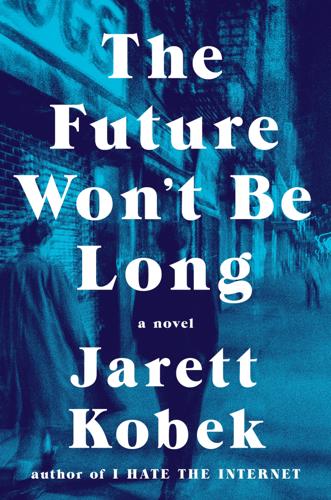
The Future Won't Be Long
by
Jarett Kobek
Published 15 Aug 2017
Each eruption demonstrated the hopeless delusions of the American political left. In general, The Power Mongers paid zero mind to the shrill ululations of San Francisco faggots on the topics about which, it may be assumed, the San Francisco faggots possessed some degree of expertise. Like a decade of dead gay men. Why then would our Dark Masters suddenly muster two fucks of a feather regarding a subject about which, it may be assumed, the San Francisco faggots knew nothing? Outside of America’s liberal hotbeds, the country was transfixed by a creeping jingoism. The great unwashed masses proudly wore t-shirts that read DESERT STORM and BONK BONKS SADDAM HUSSEIN and IT’S NOT OVER TILL STORMING NORMAN SCHWARZKOPF SAYS IT’S OVER!
…
Минерва had invited me to go with her to an event at Night Break called Sushi Sundays, during which the management erected tables and set up an impromptu restaurant. The denizens of San Francisco sat devouring tekka-maki and kappa-maki and were entertained by local punk and metal bands. I’d declined. Following a few merry-go-rounds with Минерва’s bong and its sweet maryjane, I couldn’t help myself. I spilled the beans about my fight with Nash Mac. “That boy is such a clod,” I said. “You know New York, darling, you’ve been there. You remember what it was like. San Francisco is nothing.” “Wrong,” said Минерва. “What?” I asked. “Wrong idea,” she said. “San Francisco is deadly.” “We walked over the corpses of junkies!
…
Over the rooftops, I espied the dark and ragged outline of Buena Vista Park, towering above San Francisco like Fangorn over Middle Earth. The blinking lights of Sutro Tower hovered like UFOs. It’d been so long since Jon. I hadn’t seen the other one in almost six months. I’d alienated my family. The only friends who gave two shakes of a fist were in the bedroom, but they were coupled, and the mystery of every coupling is impenetrable. I slept fully clothed, not removing a stitch, opting to ignore the blankets piled beside the couch. MARCH 1993 Adeline Wanders Around San Francisco I became as a pilgrim on the road to Canterbury, frittering away the weeks by wandering around San Francisco, un flaneur sans privilège du pénis.

Makers
by
Chris Anderson
Published 1 Oct 2012
In New York City, smaller companies still manufacture everything from envelopes (customers can easily visit the factory to inspect designs before they go on the line) to handcrafted BMX bikes at Brooklyn Machine Works (at as much as $2,800 a frame, cheap labor is not the priority). In San Francisco, a thriving group called SFMade represents scores of entrepreneurial manufacturers who trade on their locality, from Timbuk2 bags to Mission Motors electric motorcycles. The sorts of businesses that capitalize on being close to their market range from custom furniture, which needs close contact with customers, to high-end mattresses (build-on-demand lowers cost), to niche couture (my own office building in the hot high-tech district South of Market also houses some textile factories, with immigrant Chinese workers working on locally designed clothes).
…
Just consider the high-end chocolate made by San Francisco’s Tcho, in a full beans-to-bars chocolate factory run on a converted pier on the Bay by the original founders of Wired. They started local, serving the same boutique demand for artisanal products that saw the rise of high-end coffee chains such as Peets (another San Francisco native) decades earlier. But because they’re a product of the Web Age, they went global more quickly, both through e-commerce and online word of mouth. Now, five years after its founding, Tcho is sold by more than four hundred retailers around the country. The factory on the pier in San Francisco run by Web pioneers makes chocolate around the clock to keep up with demand.
…
But if you want one in your own home, you’ll typically need a custom tank made at a cost of thousands of dollars. This didn’t seem right to Alex Andon. He had taken a fancy to jellyfish while sailing in the British Virgin Islands as a teenager. After graduating from Duke with a biology degree in 2006, he came to the San Francisco Bay Area for a biotech job. But the jellyfish fascinated him more, in part because San Francisco Bay is one of the best places in the world to catch them. He decided to quit his job and set up a company in a friend’s garage to make custom jellyfish tanks. He called it Jellyfish Art, and it grew quickly, offering modified fish tanks with special pumps and custom water-flow systems that kept the jellyfish off the sides.
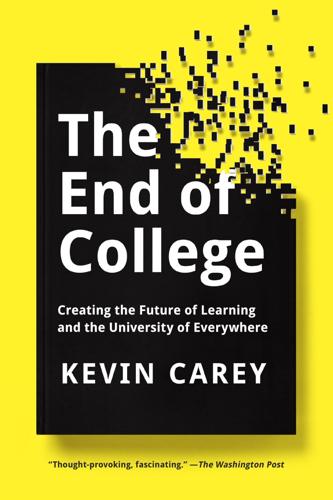
The End of College: Creating the Future of Learning and the University of Everywhere
by
Kevin Carey
Published 3 Mar 2015
Mobile, social, and cloud, each driven by venture-backed technology companies in Silicon Valley. Decades of increasingly powerful technology married to capital and the best minds of the research university had created a distinct and powerful culture in the converted industrial buildings south of Market Street in San Francisco and the storefronts and garages around the academic and industrial giants of Silicon Valley. It was a belief system in which people were not just augmented but liberated by technology—a place where people could discard the compromises and confusions of human living and build something more rational and enlightened in their place
…
It wasn’t hard to guess where those competitors would come from: Silicon Valley, a place with enough money, smart people, and cultural prestige to compete head-to-head with the hybrid universities, using a profoundly different philosophy about what to do with information technology and what the future should bring. — IT WAS FOUR in the afternoon on a gorgeous spring day in the Mission District of San Francisco. I was standing on a sidewalk with Michael Staton, waiting for an Uber to arrive. Michael came to the Bay Area in the early 2000s to launch an Internet start-up company that builds social networks for incoming college freshmen. He had recently switched to the investment side of the deal-making table and become a partner in a venture capital firm specializing in technology and education.
…
The United States government acted on Vannevar Bush’s recommendations for scientific investment on a gargantuan scale. Enormous amounts of money came to California. Some of it went to the research universities, but much of it went to defense contractors and scientific facilities that had begun growing as the military managed points of its global communications and aeronautical networks in and around the San Francisco Bay. Like other universities, Stanford experienced an influx of students after the war. One of Vannevar Bush’s MIT graduate students was appointed dean of engineering. His name was Frederick Terman, and he saw opportunity in symbiosis between business, technology, and academe. In 1951 he helped convert some nearby university land into the Stanford Industrial Park.
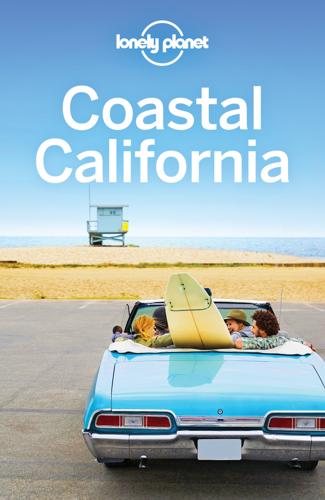
Coastal California Travel Guide
by
Lonely Planet
The Summer of Love brought free food, love and music to the Haight, and pioneering gay activists in the Castro helped elect Harvey Milk as San Francisco supervisor – America’s first out gay official. When San Francisco witnessed devastating losses from HIV/AIDS in the 1980s, the city rallied to become a global model for epidemic treatment and prevention. San Francisco’s unconventional thinking spawned the web in the 1990s, until the dot-com bubble burst in 2000. But risk-taking SF continues to float outlandish new ideas – social media, mobile apps, biotech. Congratulations: you’re just in time for San Francisco’s next wild ride. Downtown San Francisco & SoMa 1Top Sights 1Asian Art MuseumB5 2Cable Car MuseumC1 3Contemporary Jewish MuseumE4 4Ferry BuildingG1 5Luggage Store GalleryC5 6San Francisco Museum of Modern ArtE4 7SF CameraworkC5 1Sights 8Diego Rivera's Allegory of California FrescoE2 9Glide Memorial United Methodist ChurchC4 10Huntington ParkC2 11Yerba Buena GardensE4 2Activities, Courses & Tours 12City KayakH5 13Emperor Norton's Fantastic Time MachineD3 4Sleeping 14AxiomD4 15Golden Gate HotelC3 16Hotel CarltonB3 17Hotel VitaleG2 18MarkerC3 19Palace HotelE3 20Petite AubergeC3 5Eating 21AcquerelloA2 22BenuF4 23CalaA6 24El Porteño EmpanadasG1 25farm:tableB3 26Ferry Plaza Farmers MarketG1 27Hog Island Oyster CompanyG1 28In SituF4 29JardinièreA6 30MijitaG1 31Red ChilliC4 32Rich TableA7 33SentinelE3 34Seven HillsB1 Slanted DoorG1 35Swan Oyster DepotA2 36Tout SweetD3 6Drinking & Nightlife 37Big 4C2 38Blue Bottle Coffee KioskA6 39Bourbon & BranchC4 40Club OMGD5 41Hole in the WallC7 42PowerhouseC7 43StudC7 3Entertainment 44AMC Metreon 16E4 45American Conservatory TheaterC3 46Great American Music HallA4 47San Francisco BalletA6 San Francisco OperaA6 48San Francisco SymphonyA6 49SFJAZZ CenterA6 50Strand TheaterC5 51Yerba Buena Center for the ArtsE4 7Shopping 52Heath CeramicsG1 53Recchiuti ChocolatesG1 54Westfield San Francisco CentreD4 1Sights Downtown, Civic Center & SoMa oSan Francisco Museum of Modern ArtMUSEUM (SFMOMA; MAP GOOGLE MAP ; %415-357-4000; www.sfmoma.org; 151 3rd St; adult/under 18yr/student $25/free/19; h10am-5pm Fri-Tue, to 9pm Thu, public spaces from 9am; c; g5, 6, 7, 14, 19, 21, 31, 38, mMontgomery, ZMontgomery) The expanded SFMOMA is a mind-boggling feat, tripled in size to accommodate a sprawling collection of modern masterworks and 19 concurrent exhibitions over 10 floors – but, then again, SFMOMA has defied limits ever since its 1935 founding.
…
Winter may be slim pickings for salad in the fertile Central Valley, but ideal for Southern California citrus. San Francisco Bay Area For miners converging here for the gold rush, San Francisco offered an unrivaled variety of novelties and cuisines, from cheap Chinese street food to French fine dining for those who struck it rich. Today, San Francisco’s adventurous eaters support the most restaurants per capita of any US city – five times more than NYC, ahem – and farmers markets every day of the week, year-round. Some of San Francisco's novelty dishes have extraordinary staying power, including chocolate bars (invented by the Ghirardelli family as power bars for miners), ever-popular cioppino (seafood stew), and sourdough bread, with original gold-rush era mother dough still yielding local loaves with a distinctive tang.
…
Take a permanent vacation in laid-back beach towns while devouring fish tacos, or wander Balboa Park’s museums and famous zoo. San Francisco Sights Activities Tours & Courses City Walk Festivals & Events Sleeping Eating Drinking & Nightlife Entertainment Shopping San Francisco Pop 870,887 Why Go? Get to know the capital of weird from the inside out, from mural-lined alleyways named after poets to clothing-optional beaches on a former military base. But don't be too quick to dismiss San Francisco's wild ideas. Biotech, gay rights, personal computers, cable cars and organic fine dining were once considered outlandish too, before San Francisco introduced these underground ideas into the mainstream decades ago.
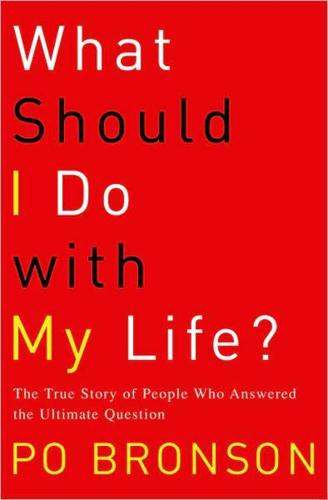
What Should I Do With My Life?
by
Po Bronson
Published 2 Jan 2001
How many times will you get the benefit of arriving at a crossroads, where you don’t have to fight the tug of rolling inertia, and your choice isn’t going to hurt someone you love? Not many. Make them count. They will define you. When I left First Boston, I joined my girlfriend managing and writing a subscription-only newsletter on San Francisco politics. I was earning about one thousand dollars a month. At night I took my first class in creative writing at San Francisco State, a lonely commuter school of mostly part-time students. I continued to wedge one class a week into my schedule for the next seven years. You might think that I had an obvious topic to write about, bringing to school my incredible front-row perspective on the unique macho culture of global finance.
…
Probably both. That’s friction. That’s what makes it interesting. Marc Weidenbaum is thirty-four, tall and slender. He moved here a year and a half ago. He’s an exotic here, because he’s a Jewish kid from Long Island via San Francisco who talks too fast and wears a backpack. “You don’t see many backpacks here,” he said. “The backpack is a staple of New York and San Francisco. It says you’re coming from somewhere, and you’re going somewhere else, and you have things you need that you can’t be without. Here, backpacks are unnecessary. People look at me and think I’m way too old to have a backpack.
…
He is on the board of directors of Consortium Book Sales & Distribution and the editorial board of Zoetrope: All Story magazine. He has written for The New York Times Magazine, The Wall Street Journal, and Wired. He graduated from Stanford with a BA in economics and San Francisco State with an MFA in creative writing. He lives in San Francisco. For more information on Po Bronson, go to www.pobronson.com. Also by Po Bronson The Nudist on the Late Shift The First $20 Million Is Always the Hardest Bombardiers Copyright © 2002 by Po Bronson All rights reserved under International and Pan-American Copyright Conventions.
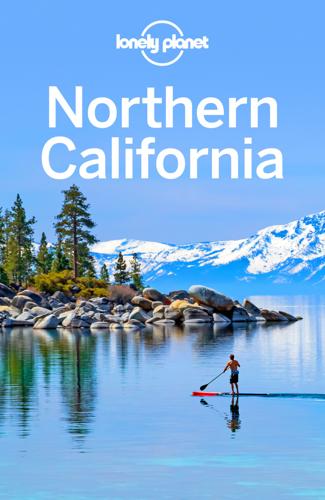
Northern California Travel Guide
by
Lonely Planet
Valley Walks Many brilliant hiking trails originate in Yosemite Valley, including waterfall walks to Vernal and Nevada Falls, and the near-vertical ascent of famous Yosemite Falls. Follow the watercourses for maximum drama. San Francisco San Francisco Highlights Sights Activities Tours & Courses City Walk Festivals & Events Sleeping Eating Drinking & Nightlife Entertainment Shopping Information San Francisco by Cable Car San Francisco Pop 870,887 Why Go? Get to know the capital of weird from the inside out, from mural-lined alleyways named after poets to clothing-optional beaches on a former military base. But don't be too quick to dismiss San Francisco's wild ideas. Biotech, gay rights, personal computers, cable cars and organic fine dining were once considered outlandish too, before San Francisco introduced these underground ideas into the mainstream decades ago.
…
The Summer of Love brought free food, love and music to the Haight, and pioneering gay activists in the Castro helped elect Harvey Milk as San Francisco supervisor – America’s first out gay official. When San Francisco witnessed devastating losses from HIV/AIDS in the 1980s, the city rallied to become a global model for epidemic treatment and prevention. San Francisco’s unconventional thinking spawned the web in the 1990s, until the dot-com bubble burst in 2000. But risk-taking SF continues to float outlandish new ideas – social media, mobile apps, biotech. Congratulations: you’re just in time for San Francisco’s next wild ride. Downtown San Francisco & SoMa 1Top Sights 1Asian Art MuseumB5 2Cable Car MuseumC1 3Contemporary Jewish MuseumE4 4Ferry BuildingG1 5Luggage Store GalleryC5 6San Francisco Museum of Modern ArtE4 7SF CameraworkC5 1Sights 8Diego Rivera's Allegory of California FrescoE2 9Glide Memorial United Methodist ChurchC4 10Huntington ParkC2 11Yerba Buena GardensE4 2Activities, Courses & Tours 12City KayakH5 13Emperor Norton's Fantastic Time MachineD3 4Sleeping 14AxiomD4 15Golden Gate HotelC3 16Hotel CarltonB3 17Hotel VitaleG2 18MarkerC3 19Palace HotelE3 20Petite AubergeC3 5Eating 21AcquerelloA2 22BenuF4 23CalaA6 24El Porteño EmpanadasG1 25farm:tableB3 26Ferry Plaza Farmers MarketG1 27Hog Island Oyster CompanyG1 28In SituF4 29JardinièreA6 30MijitaG1 31Red ChilliC4 32Rich TableA7 33SentinelE3 34Seven HillsB1 Slanted DoorG1 35Swan Oyster DepotA2 36Tout SweetD3 6Drinking & Nightlife 37Big 4C2 38Blue Bottle Coffee KioskA6 39Bourbon & BranchC4 40Club OMGD5 41Hole in the WallC7 42PowerhouseC7 43StudC7 3Entertainment 44AMC Metreon 16E4 45American Conservatory TheaterC3 46Great American Music HallA4 47San Francisco BalletA6 San Francisco OperaA6 48San Francisco SymphonyA6 49SFJAZZ CenterA6 50Strand TheaterC5 51Yerba Buena Center for the ArtsE4 7Shopping 52Heath CeramicsG1 53Recchiuti ChocolatesG1 54Westfield San Francisco CentreD4 1Sights Downtown, Civic Center & SoMa oSan Francisco Museum of Modern ArtMUSEUM (SFMOMA; MAP GOOGLE MAP ; %415-357-4000; www.sfmoma.org; 151 3rd St; adult/under 18yr/student $25/free/19; h10am-5pm Fri-Tue, to 9pm Thu, public spaces from 9am; c; g5, 6, 7, 14, 19, 21, 31, 38, mMontgomery, ZMontgomery) The expanded SFMOMA is a mind-boggling feat, tripled in size to accommodate a sprawling collection of modern masterworks and 19 concurrent exhibitions over 10 floors – but, then again, SFMOMA has defied limits ever since its 1935 founding.
…
Greyhound (%800-231-2222; www.greyhound.com) Buses leave daily for Los Angeles ($39 to $90, eight to 12 hours), Truckee near Lake Tahoe ($35 to $46, 5½ hours) and other major destinations. Megabus Low-cost bus service to San Francisco from Los Angeles, Sacramento and Reno. SamTrans Southbound buses to Palo Alto and the Pacific coast. Train Easy on the eyes and light on carbon emissions, train travel is a good way to visit the Bay Area and beyond. Caltrain ( GOOGLE MAP ; www.caltrain.com; cnr 4th & King Sts) connects San Francisco with Silicon Valley hubs and San Jose. Amtrak (%800-872-7245; www.amtrakcalifornia.com) serves San Francisco via stations in Oakland and Emeryville (near Oakland), with free shuttle-bus connections to San Francisco's Ferry Building and Caltrain station, and Oakland's Jack London Sq.
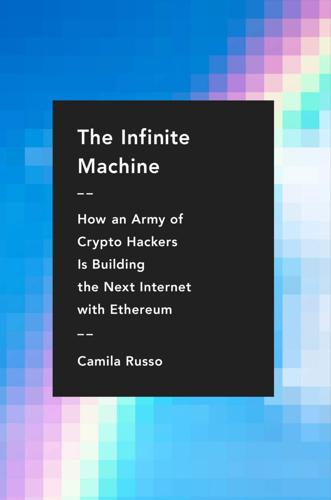
The Infinite Machine: How an Army of Crypto-Hackers Is Building the Next Internet With Ethereum
by
Camila Russo
Published 13 Jul 2020
In just under three short years, Vitalik had gone from Bitcoin skeptic to writing about Bitcoin to working on Bitcoin projects. After about six months on the road, his world tour ended in San Francisco. As he climbed up and down the city’s steep hills, he continued to refine the idea of a new blockchain that could become the platform enabling any decentralized, censorship-resistant application imaginable. He made his way to Ripple CTO Stefan Thomas’s studio apartment, just south of Market Street, where he would stay for two weeks, eager to get to work. He opened his laptop and started typing, “The Ultimate Smart Contract and Decentralized Application Platform.”
…
Like an infinite machine. 7 The First Responders Anthony D’Onofrio, more widely known by his pseudonym of “Texture,” was making the four-hour drive to see his pregnant girlfriend, like he did every weekend. She was living in Sebastopol, California, a small town near the vineyards of Sonoma County, about two hours north of San Francisco, and he was living in Merced, the city known as the gateway to Yosemite National Park, about two hours south of San Francisco. It was the beginning of winter, and the temperature had started to drop. Traffic was unusually light as Texture relaxed into the seat of his white, 2002 BMW 325i. He had started a weed edibles business and had chosen this “mom car” with the explicit goal of attracting the least amount of attention possible, as it was often loaded with THC-laced candy.
…
Those who talked to me were generous enough to help me unearth dozens of old emails, chat logs, documents, and pictures. I also dug deep into online forums, blog posts, and archived websites. I followed this colorful, idealist, brilliant crew to their conferences and hackathons in Prague, Buenos Aires, Toronto, Berlin, Denver, Paris, New York, San Francisco, and Osaka. I felt like Alice following the White Rabbit into a world of impossible dreams: banking without banks, breeding digital cats, self-organizing companies with no CEOs, and talk of flying to the moon. Shaggy, unkempt young developers, whether they had dropped out of computer science programs or had fled companies from the other side of the looking glass—these were the magicians trying to make these dreams a reality amid a swirl of internet memes, rainbows, unicorns, and lines of computer code.

Dreaming in Code: Two Dozen Programmers, Three Years, 4,732 Bugs, and One Quest for Transcendent Software
by
Scott Rosenberg
Published 2 Jan 2006
That was too bleak for another staffer, who erased an r, leaving a more positive biblical prophecy: “We come toward thee.” Kapor repeatedly told his programmers that the nonprofit OSAF was going to operate under different rules from the venture-capital-funded start-ups whose wreckage, in those post–Internet boom days, littered the San Francisco Bay area—leaving OSAF’s new neighborhood south of Market Street feeling like an urban dead zone. At a May meeting he reassured some of them who feared that their team was growing too big, too fast: “We’re not operating with the mythology of the Silicon Valley death march, with the deadline to ship a product and get revenue, where the product quality goes out the window.
…
Leung already knew how to do “distributed development” from his Apache work; Kapor invited him to join OSAF and work from home, with a visit to the San Francisco mother ship every few months. Today Leung is going to demo some tests he has rigged to see how well the Chandler repository can handle large quantities of data. A dedicated blogger, he devised a program that would load twenty megabytes of blog posts in RSS format into Chandler, creating eleven thousand Chandler items. There’s only one problem: While a colleague at the OSAF office runs the demo on screen, Leung is patched in by phone, and the phone link is only half working: He can hear San Francisco, but San Francisco can’t hear him. So he narrates the demo by typing his explanations into the IRC chat room, which is projected on the wall, where his colleagues can read them.
…
I thought there needed to be more variety in the game’s insurrections, so I started inventing additions—new subroutines that would plunge Sumer into civil war or introduce rival governments competing for legitimacy. I didn’t care how late it was. The F train ran all night to take me home to Queens. The revolution had to be customized! A quarter century later, in May 2000, I sat in an office in San Francisco and stared at a modern computer screen (high resolution, millions of colors). Wan ranks of half-guzzled paper coffee cups flanked my keyboard. It was 5:00 A.M. I was forty years old, a founder and now managing editor of the online magazine Salon, and in charge of a software development project.

Coders: The Making of a New Tribe and the Remaking of the World
by
Clive Thompson
Published 26 Mar 2019
When I first met her, she was only 35, but in the hummingbird metabolism of software, that made her an éminence grise. After five years at Facebook, she’d founded her own company, sold it to Dropbox, and worked there as a vice president. After she left Dropbox, she started a venture aimed at inspiring the next generation of coders: South Park Commons. A renovated office building in San Francisco’s South of Market neighborhood, it is a hub for young technologists pondering their future. “It’s like a salon,” Sanghvi said when I showed up for lunch on a hot summer day. Small clusters of engineers, researchers, and entrepreneurs sat at long tables, plowing through email and reading white papers, beneath a sprawling piece of art on the wall, a series of jagged wooden arches.
…
He’d been invited to many Slack groups to discuss sensitive political issues, too, where things weren’t encrypted, either. “I get it! It’s convenient! So we need to make tools that are just as convenient and easy but safe.” It’s a Friday night in San Francisco, and Phillips is presiding over a roomful of pro-privacy hackers. We’re at Noisebridge, a hackerspace in San Francisco famous for attracting everything from soldering-iron-wielding hardware tinkerers to neophyte coders who show up for free learn-to-program tutorials; there’s a giant wall of lights in the main room that tonight is blinking a Game of Life display, antique PCs from the ’70s lying about, a couple of industrial sewing machines, and whiteboards overscribbled with arrays and functions.
…
She wanted to do something like Facebook, a site that she’d joined in her last year of college. Now that was an addictive bit of software. She’d log in all the time to stay in touch with college friends who’d recently graduated, checking their pages to see if they’d updated anything. So Sanghvi bailed on Manhattan, quitting the job even before her first day. She fled to San Francisco, where she got a job at Oracle, the database company. And then, one day a college friend invited her to come by the offices of Facebook itself. It was a tiny firm, serving only college students; everyday folks weren’t yet allowed to use Facebook. When she walked up to the office on the second floor above a Chinese-food restaurant, she found a passel of mostly young white men, some who’d recently bailed on Harvard: a 21-year-old Mark Zuckerberg walking around in nearly wrecked sandals, Adam D’Angelo (the guy who’d taught a younger Zuckerberg some coding), and Dustin Moskovitz, Zuckerberg’s roommate at Harvard.
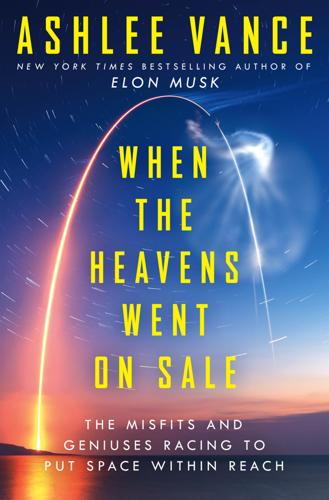
When the Heavens Went on Sale: The Misfits and Geniuses Racing to Put Space Within Reach
by
Ashlee Vance
Published 8 May 2023
The military wanted to see just how weird it could get when it came to blasting objects into orbit and fancied the idea of being able to chuck up a satellite without anyone noticing. After a bit of digging, I discovered the name of the start-up—Ventions LLC—and its CEO, Adam London. And, sure enough, its address at 1142 Howard Street placed the company in the part of San Francisco known as SoMa, or South of Market. All of this intrigued me because the internet had precious little information about this London fella, and rocket start-ups are not meant to exist in SoMa, an area made famous during the dot-com boom for giving rise to internet and software companies and coffee shops where venture capitalists liked to display their self-confidence.
…
And so we’re also going to find a way to build a Burning Man gallery. Or, like, when we wanted a place to test rockets on the airfield, I said to the city, “We’re going to launch rockets here.” Which is insane. Obviously, we’re not going to launch our rocket twenty minutes by car from downtown San Francisco or five seconds from downtown San Francisco by rocket. But if I change it and say, “Well, how about we just test it for a few seconds? You know, we’ll hold it down. We won’t launch it.” They’re like “Okay. All right.” But if I had gone in asking to test a rocket, they would have said, “That’s crazy. No.” It’s the same thing with the art.
…
After about a half hour, word came back that the satellites had been placed safely in orbit three hundred miles above the earth. Covered in white paint, the Doves had tumbled out of the rocket’s cargo chamber one after another and created what looked like a string of pearls traveling across a black backdrop. Employees at Planet’s headquarters in San Francisco began communicating with the satellites through a network of antennas the company had placed at ground stations all around the world. The first step was to check on the Doves and make sure they were alive and functioning correctly. No organization had ever put up anywhere close to eighty-eight satellites at the same time.

The Creative Curve: How to Develop the Right Idea, at the Right Time
by
Allen Gannett
Published 11 Jun 2018
.* Clustered A young woman was sweeping the lobby of the Park Hotel in the SoMa section of San Francisco, the neighborhood south of Market Street. The lobby had muted green walls with benches that looked ripped out of a diner. It wasn’t truly a hotel, rather it was affordable housing with shared bathrooms. As she continued sweeping, she noticed a photographer snapping a picture. Over thirty-five years later, the resulting photo appeared as part of a photo series on the gentrification of SoMa. Since that time, San Francisco, and SoMa in particular, has gone from impoverished to unaffordable. Office space in the formerly rundown SoMa neighborhood now rents for an average of $72.50 per square foot (matching pricey Manhattan), and studio apartments sell for an average of over $1,200 per square foot, which means that a small 450-square-foot studio costs more than $540,000, which is enough to buy a McMansion in many suburbs.
…
Office space in the formerly rundown SoMa neighborhood: Details drawn from “MarketBeat Manhattan Q1 2017,” Cushman & Wakefield (2017), http://www.cushmanwakefield.com/en/research-and-insight/unitedstates/manhattan-office-snapshot/; “MarketBeat San Francisco Q1 2017,” Cushman & Wakefield (2017), http://www.cushmanwakefield.com/en/research-and-insight/unitedstates/san-francisco-office-snapshot/; and “San Francisco,” RedFin (2017), https://www.redfin.com/city/17151/CA/San-Francisco. Richard Florida: Richard Florida, The Rise of the Creative Class (New York: Basic Books, 2014). In one study: Brian Knudsen et al., “Urban Density, Creativity, and Innovation,” Creative Class, May 2007, http://creativeclass.com/rfcgdb/articles/Urban_Density_Creativity_and_Innovation.pdf.
…
If it’s true that familiarity breeds comfort, why did the name Lisa lose popularity over time? Why wouldn’t more and more parents name their daughters Lisa, until one day we all woke up living in Lisaland? Love Kills Slowly Don Ed Hardy was a tattoo artist who for years was best known for the Japanese-inspired designs he inked on bodies at Tattoo City, the San Francisco studio he opened in 1977. One day he got a call from Christian Audigier, the businessman behind the trendy Von Dutch clothing brand. Audigier had seen one of Hardy’s designs and wanted to take it mainstream. He asked Hardy about signing a license to build a brand around his art. Hardy researched Audigier and, as he later told one interviewer, “This guy is at ground zero of everything that’s wrong with contemporary civilization.”

USA Travel Guide
by
Lonely, Planet
Sights Let San Francisco’s 43 hills and more than 80 arts venues stretch your legs and imagin-ation, and take in some (literally) breathtaking views. The 7 x 7-mile city is laid out on a staid grid, but its main street is a diagonal contrarian streak called Market St. Downtown sights are within walking distance of Market St, but keep your city smarts and wits about you, especially around South of Market (SoMa) and the Tenderloin (5th to 9th Sts). SF’s most historic landmarks are in the Mission, while exciting new destinations are inside Golden Gate Park. Downtown San Francisco Top Sights Asian Art Museum C7 Coit Tower D3 Davies Symphony HallB7 Ferry Building F4 San Francisco Museum of Modern Art E6 Sights 1 14 Geary E6 2 49 Geary E6 3 77 Geary D6 4 Aquarium of the Bay D2 5 Aquatic Park BathhouseB2 6 Art Institute C3 7 Beat Museum D4 8 Cartoon Art Museum E6 9Catharine Clark GalleryE6 10Children’s Creativity MuseumE6 11Chinatown GateD5 12 Chinese Culture Center D4 13 Chinese Historical Society of America Museum D5 14 City Hall B7 15 Contemporary Jewish Museum E6 16 George Sterling Park B3 17 Grace Cathedral C5 18 Hyde Street Pier Historic ShipsB2 19 Musée Mécanique C2 20 Museum of African Diaspora E6 21Museum of Craft & Folk ArtsE6 22 Pier 39 D1 23San Francisco Maritime National Historical ParkB2 24 Transamerica Pyramid E4 25Union SquareD6 26 Uss Pampanito C2 Activities, Courses & Tours 27 Adventure Cat D2 28Alcatraz CruisesD2 29 Blazing Saddles B2 30 City Kayak G6 31Meeting Point for Fire Engine ToursB2 Sleeping 32 Golden Gate Hotel D5 33 Hotel Abri D6 34 Hotel BohèmeD4 35 Hotel des Arts D5 36 Hotel Rex D5 37 Hotel VitaleF5 38 Orchard Garden HotelD5 39 Pacific Tradewinds E5 40 Petite Auberge C5 41 San Remo Hotel C3 42 Stratford Hotel D6 Eating 43 Bar JulesA8 44 BenuE6 45 Bocadillos E4 46 Brenda's French Soul Food B6 47 Cinecittà D3 48 CoiE4 49 CotognaE4 50 Crown & Crumpet B2 51 FarmerbrownD6 52 Farmers Market F4 53 Gitane E5 Gott's Roadside (see 52) Hog Island Oyster Company (see 52) 54 In-N-Out Burger C2 55 JardinièreB7 Mijita (see 52) 56 Molinari D4 57 Off the Grid A2 58 Saigon Sandwich Shop C6 Slanted Door (see 52) Drinking 59 Aunt Charlie'sD6 60 Endup E7 61 Rebel Bar B8 62 Smuggler's CoveB7 63 Stud D8 64 Tosca Cafe D4 Entertainment 65 111 Minna E5 66 American Conservatory Theater D6 67AT&T ParkG7 68 Cat Club D8 69 Club Fugazi D3 70 Harlot E5 71 Mezzanine D7 TIX Bay Area (see 25) 72 War Memorial Opera House B7 73 Yerba Buena Center for the ArtsE6 Shopping 74 City Lights Bookstore D4 SOMA Cartoon Art Museum MUSEUM Offline map Google map ( 415-227-8666; www.cartoonart.org; 655 Mission St; adult/child $7/5; 11am-5pm Tue-Sun) Comics earn serious consideration with shows of original Watchmen covers, too-hot-to-print political cartoons and lectures with local Pixar studio heads.
…
GAY/LES/BI/TRANS SAN FRANCISCO Doesn’t matter where you’re from, who you love or who’s your daddy: if you’re here, and queer, welcome home. The intersection of 18th and Castro Sts is the heart of the gay cruising scene, but dancing queens and slutty boys head South of Market (SoMa) for thump-thump clubs. The Mission is the preferred ’hood of alt-chicks, trans FTMs (female-to-males) and flirty femmes. Bay Area Reporter (aka BAR; www.ebar.com) covers community news and listings; San Francisco Bay Times (www.sfbaytimes.com) also has good resources for transsexuals; and free mag Gloss Magazine (www.glossmagazine.net) covers nightlife. To find out where the party is, check Honey Soundsystem (www.honeysoundsystem.com) for roving queer dance parties; Betty’s List (www.bettyslist.com) for parties, fundraisers and power-lesbian mixers; and Juanita More (www.juanitamore.com) for fierce circuit parties thrown by a drag superstar.
…
Another mile north, HI Point Montara Lighthouse Hostel ( 650-728-7177; www.norcalhostels.org; Hwy 1 & 16th St; dm $26-31, r $70-105; check-in 3:30-10:30pm; ) is an airy, ecofriendly hostel with a small private beach (reservations essential). From there, it’s just 20 more miles to San Francisco via Devil’s Slide. SAN FRANCISCO & THE BAY AREA San Francisco If you’ve ever wondered where the envelope goes when it’s pushed, here’s your answer. Psychedelic drugs, newfangled technology, gay liberation, green ventures, free speech and culinary experimentation all became mainstream long ago in San Francisco. After 160 years of booms and busts, losing your shirt has become a favorite local pastime at the clothing-optional Bay to Breakers race, Pride Parade and hot Sundays on Baker Beach.
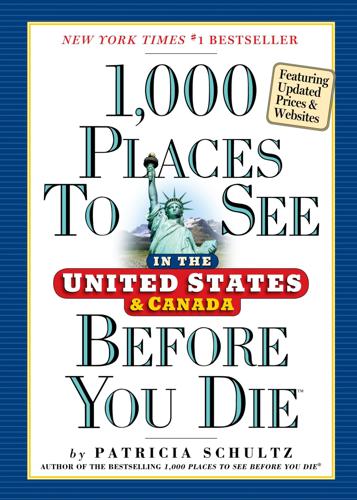
1,000 Places to See in the United States and Canada Before You Die, Updated Ed.
by
Patricia Schultz
Published 13 May 2007
The dazzling collection spans 6,000 years of works from China (its greatest strength), Japan, Korea, India, Afghanistan, Thailand, and Myanmar (Burma), and explores three main themes—the development of Buddhism, how trade and pilgrimage led to cultural exchange, and how Asian artists influenced each other. Rounding out the city’s trio of museums with new homes is San Francisco’s Museum of Modern Art (SFMOMA), founded in 1935 and the first museum on the West Coast devoted solely to 20th-century art. In 1995 it moved into its brand-new building designed by Swiss architect Mario Botta, located in SoMa (the South of Market neighborhood) across from the urban-cool Yerba Buena Gardens. Some argue the building itself is more impressive than the collections within, but you’ll still find works by Matisse, Magritte, Warhol, Stella, Rivera, O’Keeffe, Dalí, and Picasso.
…
John’s, N.L., 984–85 Roosevelt Memorial, D.C., 264 Rosa Mexicano, N.Y., 179 Rosa Parks Library and Museum, Ala., 297 Rosario Resort and Spa, Wash., 896 Rose Bar, Fla., 318 Rosebud Reservation, Nebr., 637 Rose Center for Earth and Space, N.Y., 185 Rosedown Plantation, La., 433 Rose Hill Inn, Mich., 539 Rose Hill Manor, Tex., 769 ROSE ISLAND LIGHTHOUSE, R.I., 87–88 Rose Theater, N.Y., 179 ROSWELL, N.Mex., 735, 737, 744–45 Roswell Museum and Art Center, N.Mex., 745 Rouge, Oreg., 877 Rough Point Mansion, R.I., 84 Rough Rider Museum, N.Mex., 742 Round Top, Tex., 780–81 ROUND TOP ANTIQUES FAIR, Tex., 780–81 Round Up Hall of Fame Museum, Oreg., 877 ROUTE 66, N.Mex., 684, 740, 745–46 Route 66 Auto Museum, N.Mex., 746 ROUTE 100, Vt., 100, 104–5 Route 169 Scenic Byway, Conn., 18–19 Route of the Hiawatha Trail, Idaho, 607 Rowan Oak, Miss., 444–45 Rowe Sanctuary & Iain Nicolson Audubon Center, Nebr., 634 ROYAL BRITISH COLUMBIA MUSEUM, B.C., 1061 ROYAL CANADIAN MOUNTED POLICE TRAINING ACADEMY, Sask., 1069–70 Royal Hawaiian Hotel, Hawaii, 967 ROYAL ONTARIO MUSEUM, Ont., 1006–7 Royal Palms Resort and Spa, Ariz., 692 ROYAL TYRRELL MUSEUM, Alta., 1030–31 Royer’s Round Top Café, Tex., 781 Roy’s, Hawaii, 964 Rozell Point, Utah, 798–99 Rubicon Estate, Calif., 834 Ruidosa, Tex., 779 Run Boogie Café, Tenn., 468 Run of the River Inn, Wash., 888 Russ & Daughters, N.Y., 180 Russell-Brasstown Scenic Byway, Ga., 345 RUSSELL, C.M., MUSEUM, Mont., 621–22 Russian Gulch, Calif., 830 Rust College, Miss., 440 Rusty Parrot Lodge and Spa, Wyo., 669 Rutledge, Ga., 331 RUTT’S HUT, N.J., 132 Ryan Premises National Historic Site, N.L., 981 RYLAND INN, N.J., 139–40 Ryland’s Bistro, N.J., 139–40 Ryman, Tenn., 473–74 Ryves Holt House, Del., 113 S SABBATHDAY LAKE SHAKER VILLAGE, Maine, 30–31 Sacajawea Interpretive Center and Education Center, Idaho, 599 Sackler Galleries, D.C., 269 Sacramento, Calif., 809 Saddlestring, Wyo., 674 Safeco Field, Wash., 899 Sagamore Hotel, N.Y., 158–59 Sagaponack, N.Y., 160, 161 Sag Harbor, N.Y., 161 Saguaro National Park, Ariz., 700 Sahag’s Basturma, Calif., 825 SAILING THE INSIDE PASSAGE, Alaska, 917–18 SAILING THE MAINE WINDJAMMERS, Maine, 36–37 sailing: Annapolis, Md., 117–18 Annapolis Sailing School, Md., 117 Apostle Island Cruise Service, Wis., 579 Community Sailing Center, Vt., 93 Eastern Star, N.S., 992 Madison Regatta, Ind., 509 Maine Windjammers, Maine, 36–37 Mystic Seaport, Conn., 15–16 Newport, R.I., 88 Summer Regattas, R.I., 88–89 WoodenBoat School, Maine, 22–23 Saint-Gaudens National Historic Site, N.H., 73 SALEM, Mass., 64–65 Salem College, N.C., 374 Salem Witch Museum, Mass., 65 Salinas, Calif., 831 SALISHAN SPA AND GOLF RESORT, Oreg., 872–73 Salish Lodge and Golf Course, Oreg., 876 SALISH LODGE & SPA, Wash., 902 Sally’s Apizza, Conn., 17 Salmon River, Idaho, 598–601, 603 SALMON RIVER, MIDDLE FORK OF, Idaho, 600–601 SALMON RIVER SCENIC BYWAY, Idaho, 599–600 saloons: Big Nose Kate’s Saloon, Ariz., 683 Blue Belle Saloon, Okla., 645–46 Blue Moon Saloon, La., 422 Booger Red’s Saloon, Tex., 768 Byron T’s Saloon, N.Mex., 742 Captain Tony’s Saloon, Fla., 307 Diamond Belle Saloon, Colo., 713 Fly Me to the Moon Saloon, Colo., 723 Last Dollar Saloon, Colo., 723 Oxford Saloon, Mont., 627 Palace at #120, Ariz., 693 Salty Dog Saloon, Alaska, 919 White Elephant Saloon, Tex., 768 Wildhorse Saloon, Tenn., 474 Salt Lake City, Utah, 799–800 Salt Lick Barbecue Restaurant, Tex., 755 Saltry Restaurant, Alaska, 919 Salt Spring Island, B.C., 1038, 1039–40 Salt Spring Saturday Market, B.C., 1038 Saltwater Grill, Tex., 770 Salty Dog Saloon, Alaska, 919 SALVADOR DALÍ MUSEUM, Fla., 328–29 Sam Choy’s & Big Aloha Brewery, Hawaii, 965 Samoa Cookhouse, Calif., 842 San Antonio, Tex., 781–85 San Antonio Missions National Park, Tex., 782 San Antonio Museum of Art, Tex., 784 SAN ANTONIO’S HISPANIC HERITAGE, Tex., 783–84 Sanctuary Hotel, S.C., 386–87 Sanctuary on Camelback Mountain, Ariz., 692 Sandcastle Competition, Tex., 770 Sandcastle Day, Oreg., 869 Sanderling Resort & Spa, N.C., 366 Sanders B&B, Mont., 623 Sandhills Journey Scenic Byway, Nebr., 635 SANDHILLS OF NEBRASKA, Nebr., 634–35 Sandia Peak Train, N.Mex., 736 San Diego, Calif., 842–44 San Diego Aerospace Museum, Calif., 842 San Diego Museum of Art, Calif., 842 San Diego Wild Animal Park, Calif., 843 SAN DIEGO ZOO, Calif., 842–43 SANDPOINT, Idaho, 601–2 Sandusky, Ohio, 568 Sandy Point Lodge, Minn., 551–52 San Francisco, Calif., 844–52 San Francisco Botanical Garden, Calif., 846 SAN FRANCISCO FERRY BUILDING, Calif., 846–47 San Francisco Museum of Modern Art (SFMOMA), Calif., 848 SAN FRANCISCO’S ART MUSEUMS, Calif., 847–48 SAN FRANCISCO’S BEST ASIAN RESTAURANTS, Calif., 848–49 SAN FRANCISCO’S FINEST RESTAURANTS, Calif., 849–50 SAN FRANCISCO’S GREAT NEIGHBORHOODS, Calif., 851–52 San Geronimo Fest, N.Mex., 754 SANIBEL ISLAND, Fla., 326–27 SAN INAZIO DE LOYOLA BASQUE FESTIVAL, Idaho, 592–93 San Jose de Tumacácori (mission church), Ariz., 699 San Juan Capistrano, Calif., 807 San Juan Island, Wash., 897 San Juan Islands, Wash., 885, 896–97 San Juan Mountains, Colo., 717–18 SAN JUAN RIVER, Utah, 788–89 San Juan Skyway, Colo., 713 SAN LUIS OBISPO, Calif., 852–53 Sansei Seafood Restaurant and Sushi Bar, Hawaii, 956 San Simeon, Calif., 853–54 San Solomon Courts, Tex., 778 SANTA BARBARA, Calif., 854–55 Santa-Cali-Gon Days, Mo., 452 SANTA CATALINA ISLAND, Calif., 855–56 SANTA CRUZ, Calif., 856–57 Santa Fe, N.Mex., 746–51 Santa Fe Building, Ill., 486 Santa Fe Farmers Market, N.Mex., 749 Santa Fe Museum of Fine Arts, N.Mex., 750 SANTA FE OPERA, N.Mex., 747–48 Santa Fe School of Cooking, N.Mex., 749 SANTA FE’S SOUTHWEST CUISINE, N.Mex., 748–49 Santa Fe Wine & Chili Fiesta, N.Mex., 749 SANTA MONICA, Calif., 828–29 Santa Monica Pier, Calif., 828 Santa Rosa, N.Mex., 746 Santa Ynez, Calif., 857–58 SANTA YNEZ VALLEY, Calif., 857–58 San Ysidro Ranch, Calif., 855 Sapphire Grill, Ga., 349 Sarah P.
…
GOLDEN GATE BRIDGE: www.goldengatebridge.org. BEST TIMES: early spring for cherry blossoms in Japanese Tea Garden; Sun for car-free wandering; weekdays for less crowded visits to park museums and Japanese Tea Garden. Foodie Paradise on the Waterfront THE SAN FRANCISCO FERRY BUILDING San Francisco, California The crossroads of all things delicious, the historic San Francisco Ferry Building is a place to congregate and worship the region’s culinary delights at shops, restaurants, and 200 outdoor market stalls that make up the country’s finest farmers market. The imposing 1898 structure with its signature clock tower has long been the hub for ferries arriving from Sausalito, Tiburon, Larkspur, Vallejo, and Alameda, but was reimagined as a food mecca after the earthquake of 1989.
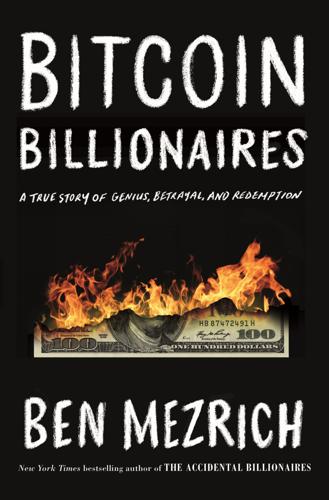
Bitcoin Billionaires: A True Story of Genius, Betrayal, and Redemption
by
Ben Mezrich
Published 20 May 2019
But eclipsing those thoughts, the odd email reminded Tyler of that first moment in Ibiza, when he’d felt like they’d just peered down a rabbit hole toward something the rest of the world had somehow missed. The honk of a taxicab coming around the corner broke through his contemplation, and he pulled his brother toward the curb. “We’re going to need to book an earlier flight to California.” 21 BEHIND THE DOOR May 16, 2013. Six P.M. on the dot. Rincon Hill, south of Market Street, San Francisco. A mostly residential area of wildly priced condos. Their destination appeared to be a skyscraper with a nondescript lobby and a bored-looking concierge behind a desk, who had no idea what Cameron and Tyler were looking for. It wasn’t until they were back out on the street, scanning the building’s facade, that they found it—right out in the open for anybody walking by to see: a single door, with a small sign taped to it, which read THE GENESIS BLOCK.
…
Cameron continued walking a few paces forward before realizing that he had lost his brother. “What are you doing? You’re going to get yourself killed.” Tyler waved him over, then handed him the phone. “What is this?” “It’s an invite. Something in San Francisco.” Cameron stared at the mysterious email on Tyler’s phone. The email was short, from someone they didn’t know. Probably someone who worked for someone else. But that wasn’t the only mysterious part. The invite was for May 16 in San Francisco at 6:00 P.M., the night before their keynote address at Bitcoin 2013. Other than the date, time, and location, there were no other details. The message read only: Look for the Genesis Block at 631 Folsom … photo attached.
…
Charlie gave Courtney his most confident smile, then hit send. ACT THREE All human wisdom is contained in these two words: “Wait” and “Hope”! —ALEXANDRE DUMAS, The Count of Monte Cristo 24 A PIRATE’S TALE San Francisco. October 1, 2013. 3:15 in the afternoon. Diamond Street, quiet, tree-lined, winding through a mostly residential neighborhood, sloping toward a small business district. The Glen Park branch of the San Francisco Public Library, a granite cube with oversize windows. A warm, orange-lit interior. Hardwood floors, paneled ceilings. Up the stairs to the second floor, rear corner, tucked into the science fiction section of the library, a small, brightly lit desk by the window.

Rule of the Robots: How Artificial Intelligence Will Transform Everything
by
Martin Ford
Published 13 Sep 2021
This is part of an industry strategy to keep wages low and adapt to employee turnover rates that were as high as 150 percent in 2019.37 The mechanized nature of these jobs makes it highly feasible to gradually substitute automated machines for workers. One of the most successful examples so far is San Francisco–based Creator, Inc. The sophisticated and aesthetically designed robot at the company’s first restaurant in the city’s South of Market area is able to crank out a gourmet-quality hamburger every thirty seconds. Customers customize and order their burger using a mobile app. The robot then completely automates production of the hamburger from start to finish. No human being ever touches the food during the process.
…
Many of the startup companies and university researchers working in this area believe, like Covariant, that a strategy founded on deep neural networks and reinforcement learning is the best way to fuel progress toward more dexterous robots. One notable exception is Vicarious, a small AI company based in the San Francisco Bay Area. Founded in 2010—two years before the 2012 ImageNet competition brought deep learning to the forefront—Vicarious’s long-term objective is to achieve human-level or artificial general intelligence. In other words, the company is, in a sense, competing directly with higher-profile and far better funded initiatives like those at DeepMind and OpenAI.
…
Creator allocates about forty percent of its costs to food, while a typical restaurant might spend thirty percent.38 It turns out that developing and building a machine capable of fully automating the production of gourmet-quality hamburgers is not a trivial undertaking. Creator was founded in 2012, and I wrote about the company, then called Momentum Machines, in my 2015 book Rise of the Robots. It took more than six years of hardware and software engineering, design and testing before the robot was ready to be put into production, and the San Francisco location was opened in June 2018. However, the company, which has received funding from Google Ventures and other top Silicon Valley venture capital firms, may now be poised to rapidly expand or perhaps license its technology to other restaurants. Creator, with its strategy of leveraging automation to produce high-end hamburgers, will likely soon be joined by a variety of other startup companies that are instead developing robots to produce cheap commoditized burgers.
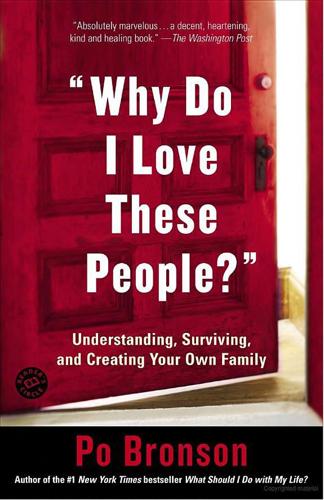
Why Do I Love These People?: Understanding, Surviving, and Creating Your Own Family
by
Po Bronson
Published 26 Dec 2006
It came back when she got to know her father, James, but not as her father, just as a man, a human being with feelings. She found herself loving him again, with a respect she'd not had in twenty years. This is their story. I had actually met Jennifer before. “Do you remember?” she asked. “I still have your old business card,” I recalled truthfully. We would bump into each other at a South of Market club where my best friend and I used to swing-dance. What I remembered about Jen was that she spoke very directly about her emerging career as a television producer. She was ambitious and sharp. And this was memorable, because we were in a club where (1) businessy career conversations seemed out of place, not to mention hard to hear, and (2) Jen was working as a Lucky Strike cigarette girl, in costume, giving away cigarettes.
…
I consider the style of my work “social documentary,” and these are some of the most powerful stories I've ever recorded. I wrote this book because I fell in love with these stories, and I fell in love with these stories partially because I have been on a similar journey myself. Today I have two healthy young children and am happily married. We live in San Francisco and our extended family is spread out over both coasts of the United States and three continents. We visit all of our relatives, often, and it is not a duty or a chore—we like it. My mom lives with us about six weeks a year, and my dad and I have a special connection that I would still feel if he were on Mars.
…
Jennifer remembers fretting about whether this American ice skater's haircut would be sufficient to allow her to fit in, but her father seemed confident in what he was doing. In their culture there was no such thing as questioning your father. “Your cousins will teach you,” he promised. His own father, sister, and brother had gone to San Francisco twenty years earlier. By now they were thriving. The family would smooth their transition. They didn't. The family was caught up in their own lives. They treated the new Louies rudely, mocked them for not speaking English, and overlooked them at Christmas. The new arrivals were never “emotionally claimed,” to use James's phrase.

What's Mine Is Yours: How Collaborative Consumption Is Changing the Way We Live
by
Rachel Botsman
and
Roo Rogers
Published 2 Jan 2010
What’s Mine Is Yours THE RISE OF COLLABORATIVE CONSUMPTION Rachel Botsman and Roo Rogers For my nana, Evelyn Amdur —Rachel For Bernie, Ruby & Mei —Roo Contents Cover Title Page Introduction: What’s Mine Is Yours Part 1 - Context Chapter One - Enough Is Enough Chapter Two - All-Consuming Chapter Three - From Generation Me to Generation We Part 2 - Groundswell Chapter Four - The Rise of Collaborative Consumption Chapter Five - Better Than Ownership Chapter Six - What Goes Around Comes Around Chapter Seven - We Are All in This Together Part 3 - Implications Chapter Eight - Collaborative Design Chapter Nine - Community Is the Brand Chapter Ten - The Evolution of Collaborative Consumption Interviewees Collaborative Consumption Hub Selected Bibliography Index Acknowledgments About the Authors Copyright About the Publisher Introduction What’s Mine Is Yours In October 2007, designers from all over the world traveled to San Francisco to attend the annual industrial design conference. The city’s hotel rooms had been sold out for months. Joe Gebbia and Brian Chesky, old friends and product design graduates from the Rhode Island School of Design, were among the ten thousand people planning to attend. The classmates had recently moved into a big loft in South of Market, San Francisco, or SoMa, as it is known, to start a business. During a conversation Gebbia and Chesky had about making some quick money to help pay their rent, they asked themselves, “Why not rent our extra room and advertise it on the conference Web site?”
…
The key difference is that people generally charge for stuff on craigslist. It’s not usually free. Newmark, just like Beal, created one of the Internet’s most popular sites almost by accident. He started it in 1995 by sending his friends and coworkers a list of cool art and technology events in San Francisco. Gradually, it spread into the wider community. “People started sending me more and more stuff, such as job listings, stuff to sell, and apartment rentals to add to the list, and more and more people asked to be added to it,” Newmark says. Within two years, he had thousands of readers, most of whom he didn’t know.13 From there it has grown into the world’s most popular Web site for classified ads, with more than seven hundred local sites across seventy countries from Romania to Kenya to Canada.
…
As Rob Forshaw, a Zopa lender, puts it, “It makes me feel like I am part of something bigger and seems to trigger a sense of belonging. With belonging comes pride and passion.” Working Alone and Together In 2005, Brad Neuberg was a thirty-one-year-old freelance open-source software programmer living in San Francisco. He had just left a tech start-up to work for himself. Neuberg enjoyed working from home, yet the experience was also isolating. He tried the de facto techie office, a coffee shop, but found it too noisy and distracting and devoid of meaningful interactions. Despite his complaints about the monotony and conformity of the nine-to-five cube-working culture, Neuberg discovered that he missed the social camaraderie of an office.
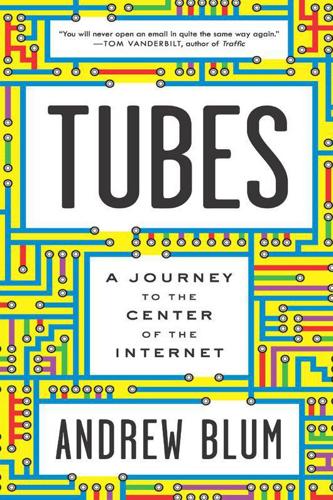
Tubes: A Journey to the Center of the Internet
by
Andrew Blum
Published 28 May 2012
But what about the networks themselves, and their places of connections? In a business that’s always been obsessed with the next new thing, who was still around to tell that story? I went back to California—only to hear about Virginia. On a characteristically damp and gray San Francisco day, I met a network engineer named Steve Feldman at a café a few blocks from his office, in the heart of the cluster of Internet companies located south of Market Street. He looked like a high school math teacher, with khaki pants, sturdy brown walking shoes, and a big beard. His office ID hung around his neck from a lanyard embroidered with NANOG, the North American Network Operators’ Group—the clubby association of engineers who manage the biggest Internet networks, and whose steering committee Feldman chairs.
…
For the twenty-five thousand customers who relied on Auer’s company to connect to “the Internet,” this machine was the on-ramp. Its job was to read the destination of a packet of data and send it along one of two paths. The first path went upstairs to an equipment room belonging to Cogent, a wholesale Internet provider that serviced cities from San Francisco to Kiev. A yellow wire passed through a utility shaft, came through a wall, and plugged into Cogent’s equipment, itself connected to electronic colleagues in Chicago and Minneapolis. This building was Cogent’s only “point of presence” in all of Wisconsin, the only place Cogent’s express train stopped; that’s why Auer’s company was here, and all the others.
…
Feldman responded to the government request for bids with an idea for a fancy new exchange—but the National Science Foundation, which ran the process, said they’d rather just give MFS money to keep MAE-East going. Contracts were eventually awarded for four access points, run by four major telecom players: the Sprint NAP in Pennsauken, New Jersey, just across the Delaware River from Philadelphia; the Ameritech NAP in Chicago; the Pacific Bell NAP in San Francisco; and MAE-East. But Feldman likes to say there were really only three and half, “because we already existed.” (And MFS would soon open MAE-West, at 55 South Market Street, in San Jose, California, to compete with the Pacific Bell NAP.) That geography was deliberate. The National Science Foundation knew that to succeed the network hubs needed to serve distinct regional markets, spread evenly across the country.
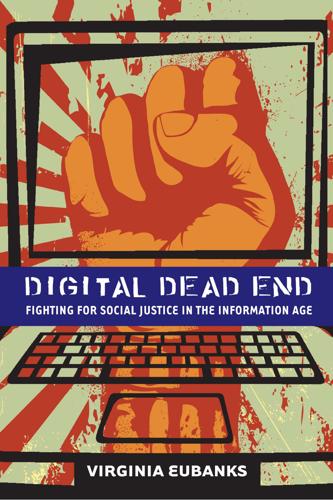
Digital Dead End: Fighting for Social Justice in the Information Age
by
Virginia Eubanks
Published 1 Feb 2011
Though my vision was limited by my privileged social and economic position, I was not blind. It was clear to me at the time that I was part of the massive wave of gentrification that swept through San Francisco neighborhoods like the Mission, South of Market, Hayes Valley, and the Western Addition. Public housing began to disappear, replaced by coffee shops, Internet cafes, and the kind of stores that display two items of clothing in a big white room. In the three and a half years I lived in San Francisco, the vibrant diversity of the city waned visibly and rents in my neighborhood tripled. In the mid-1990s, in the circles I was running in, it was not unusual for people to ask you at parties, only half ironically, “Have you made your first million yet?”
…
I discovered feminism when a women’s studies class gave me language to articulate long-held beliefs about sex and gender inequalities. I engaged in antiwar and anti-imperialist organizing after the first invasion of Iraq. I took my first steps into antiracist and civil rights work after hitchhiking to San Francisco to hear Angela Y. Davis speak at the Western Regional Organizing Conference Against the War in 1991; it was a profoundly life-changing experience. While my college campus was diverse in terms of race, nationality, sexual orientation, and beliefs, it was not terribly economically diverse, and though I met a few Marxists and anarchists, and sought out collectives and co-ops in town, there wasn’t much of a conversation going on about economic inequality.
…
And then came the rumblings of the information revolution. There in the heart of the Silicon Valley, while working as the development director for a community radio station, I discovered this fascinating new thing called the World Wide Web. I hacked my way through HTML, started making Web sites (for the Mosaic browser!), and moved up the coast to San Francisco to start my post-college life in 1995. Those were strange days in the Bay Area. For a young woman like me with racial and economic privilege, a college degree, no family obligations, and some working knowledge of computers, it was a remarkable time of freedom and excitement. I set myself up as a freelance Web site developer, found a $300 per month room in the Mission District, and started one of the first cyberfeminist ‘zines, a short-lived snarky online periodical called Brillo.

Facebook: The Inside Story
by
Steven Levy
Published 25 Feb 2020
As a student of Jobs, Dave Morin had seen Apple go to market with a strictly focused product that later took on new powers, hitting competitors with a delayed punch. The iPod was out for two years before the iTunes store. So Facebook set an ambitious May 24 date to unveil and ship. And it rented the San Francisco Design Center, a large venue in the South of Market neighborhood where start-ups abounded, so that it could invite almost a thousand people for what would be its first developers conference. It called the event F8, a reference to its frequent all-night hackathons where engineers would spend eight or more hours blasting away on a blue-sky idea.
…
“I wanted to be part of fundamentally setting the DNA of the organization with Mark. It’s hard, and not as rewarding,” she says, “[but] I want to be able to have the path to changing lives of those that I care about.” In September 2016, CZI had made its biggest announcement at an auditorium in the sprawling Mission Bay medical complex in San Francisco (which includes the Zuckerberg San Francisco General Hospital, whose reconstruction benefited from a $75 million donation). Zuckerberg came onstage promising that CZI would be spending $3 billion to “cure all disease” during the life span of his two daughters, roughly by the end of the century. (The Zuckerbergs’ second child, August, was born in 2017.)
…
I’m just going to keep doing what I’m doing and as long as I create something of massive value, the money will follow.” Parker had a superpower when it came to detecting the next big thing. In 2004, he sensed it would be based on the power of networks, like Napster and Plaxo were. Parker had even gotten tight with Jonathan Abrams, who headed Friendster, and he was hanging around a small group of people in San Francisco who believed that social media would take over the world. So, when the girlfriend of one of Parker’s roommates pulled up Thefacebook on her computer one day, in the spring of 2004, Parker rubbernecked. He was struck that it looked a lot like Friendster or MySpace, but used only people’s real names.
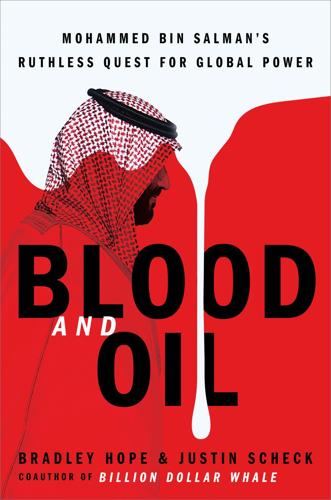
Blood and Oil: Mohammed Bin Salman's Ruthless Quest for Global Power
by
Bradley Hope
and
Justin Scheck
Published 14 Sep 2020
He worked for Mohammed personally. But as an employee of the crown prince’s son, he could gain access pretty much anywhere. On June 13 of that year, Asaker traveled to San Francisco to meet Twitter’s head of Middle East partnerships, an Egyptian American named Ahmad Abouammo. It was framed as a routine visit by an important figure from an important Twitter market. Abouammo showed Asaker around Twitter headquarters in San Francisco’s South of Market district. Asaker explained that he worked for an important prince who used Twitter extensively. The men exchanged contact information and arranged to follow up in London in the fall.
…
But sometimes they come across things that clearly deserve an examination by prosecutors. A US company’s employees taking cash from a foreign government to access user information is one example. So intelligence officials passed the information on to the Justice Department, where it found its way to the San Francisco FBI office. Late in 2015, an FBI agent walked downhill from San Francisco’s Kennedy-era federal building in the squalid Tenderloin, down a block littered with syringes, to Market Street, where Twitter has its headquarters. The agent sat down with company lawyers and broke the news: Twitter had a mole. By that time Abouammo had left the company, but Alzabarah was still active.
…
Abouammo had limited technical skill, and a single mole was hardly a reliable way of ensuring consistent access to Twitter users’ private information. Asaker wanted a better spy. As luck would have it, Twitter had hired a young Saudi named Ali Alzabarah, who was educated in the United States on a Saudi scholarship. Living in San Francisco, Alzabarah struck his friends as a typical software engineer—a “nerd,” one friend called him admiringly. He didn’t seem interested in things other than software and didn’t speak much until the conversation turned to programming or the future of technology. Away from work, Alzabarah seemed to spend most of his time at home or socializing with a small group of expat Saudis who worked at tech firms in the Bay Area.
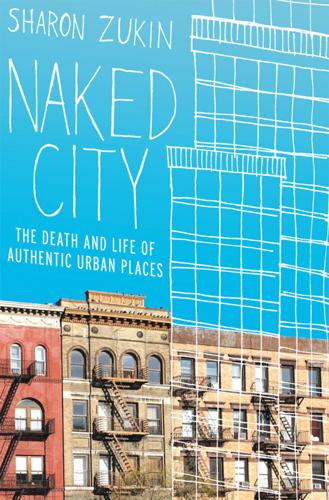
Naked City: The Death and Life of Authentic Urban Places
by
Sharon Zukin
Published 1 Dec 2009
Though it didn’t affect cities with declining populations and little opportunity for economic growth, this same metamorphosis did extend the success of big cities with dynamic corporate financial and media sectors to rundown neighborhoods outside the center. Nouveau grit not only describes Williamsburg’s revival; it also applies to the rebirth of San Francisco south of Market Street during the dot-com boom and the Seattle of Starbucks and grunge, as well as to the revival of a small number of industrial neighborhoods in Kansas City, Oklahoma City, Baltimore, and Philadelphia. Gritty’s appeal was in the postindustrial spirit of the times and in the symbolic economy’s ability to synthesize dirt and danger into new cultural commodities.
…
Some ex-hippies became entrepreneurs, selling drugs, psychedelic posters, and used clothing, and gradually the consumer products and spaces that went along with the hippies’ looser lifestyle became visible symbols not just of a more interesting way to live, but of a more interesting place to live. Haight-Ashbury in San Francisco and the East Village in New York marked spaces of social diversity and cultural experimentation; they also indicated how the counterculture’s conflict with modernization could create excitement around a city’s old neighborhoods. In a curious and unexpected way, the counterculture’s pursuit of origins—by loosening the authentic self and bonding with the poor and underprivileged—opened a new beginning for urban redevelopment in the 1970s, alongside gentrification and gay and lesbian communities.19 The allure of newly hip neighborhoods spread through the power of alternative media.
…
In London, said the Financial Times, “the gritty post-industrial wasteland climate” of the South Bank is now “a powerhouse for growth” fueled by theaters, trendy shopping, and a modern art museum.28 In the following years critics praised gritty novels, plays, and art for their honest aesthetic qualities, their ability to represent a specific space and time, and identified “gritty” with a direct experience of life in the way that we have come to expect of authenticity. “Photographs [the artist Ben] Shahn took of life on New York sidewalks in the ‘30s have an unmediated, gritty spontaneity,” said the New York Times. The media also admired the “gritty urban aesthetic” of gentrifying neighborhoods from Philadelphia to San Francisco, where “gritty bars” and warehouses were now joined, paradoxically, by new restaurants, boutique hotels, and expensive condos. In all cities housing prices in gritty neighborhoods rose faster than elsewhere. Today the use of “gritty” in the media depicts a desirable synergy between underground cultures and the creative energy they bring to both cultural consumption and real estate development, not as an alternative to but as a driver of the city’s growth.
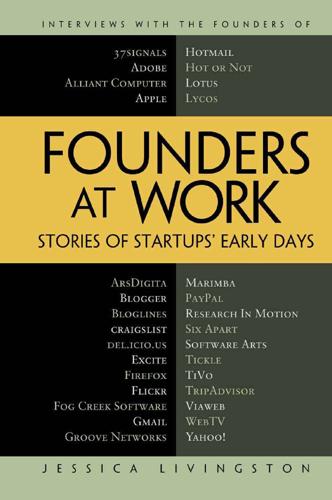
Founders at Work: Stories of Startups' Early Days
by
Jessica Livingston
Published 14 Aug 2008
and this Internet thing started to smell kind of like it. So John During had a lot of experience in that. Livingston: So you said, “Let’s do it”? Kahle: Yes, and moved out to San Francisco, started the company in a Menlo Park mansion, sort of on the Thinking Machines model. That was as far north as I thought I could put the company and still be connected in with the Apples and the Suns and the other technology companies. In 1992, San Francisco wasn’t the place for companies. That happened in the mid ’90s, with the whole South of Market rebuilding. That was another sort of “learn the lesson of going someplace where people don’t call you crazy.” I really needed the help of those that were in Silicon Valley, though I knew that as this industry built up, it was going to work more with the creative people.
…
I didn’t make enough money to go and make a nonprofit and fund it myself, and I didn’t know how to ask for money in a nonprofit, but I knew how to build products. Alexa Internet was a navigation system for the Internet. Bruce Gilliat and I started it out here in San Francisco, in a house in the middle of a park—in the Presidio. We’re in a 1500-acre park in the middle of San Francisco. We’re the second lease-holder here. Livingston: You started both companies simultaneously? Did you have different people running each one? Kahle: Everybody worked at Alexa. The idea was that everything that Alexa ever collected would be donated to the Internet Archive.
…
Kahle: Maybe you can do that now in Cambridge; maybe it’s changed. But there’s a more institutional idea that you have to be more proven. San Francisco is full of dreamers. It’s the people with the new ideas. It may be bad, they may be inappropriate, they may fail, but I love the idea that we can do something new and different—something that hasn’t been done before, something that’s going to affect a lot of people. There’s an idea that you can pull something off here. That sort of uplifting nature to San Francisco and the Bay Area in general really lives on. This is a city of dreamers, and that’s what makes it just a wonderful place to live and to work.
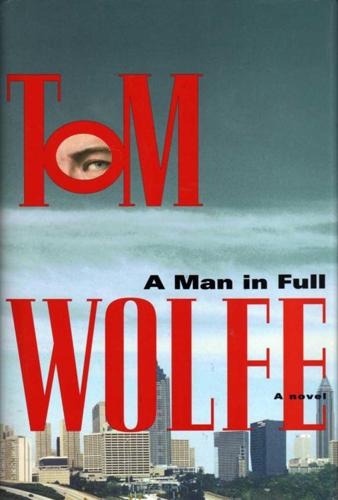
A Man in Full: A Novel
by
Tom Wolfe
Published 31 Mar 2010
Conrad drove his jack over to the foreman's desk. Kenny was standing there beside his jack studying a printout he had just picked up. "Shit," he said to nobody in particular. Then he caught sight of Conrad and held up the sheet and said, "Nat'n'Nate's," and made a face. Nat'n'Nate's was a big old delicatessen in San Francisco just South of Market Street. The pickers hated Nat'n'Nate's orders because of the heavy cases of processed meat. Conrad pulled a printout from the wire basket Morden Rehabilitation, up in Santa Rosa . . . He scanned the sheet ... Shouldn't be too bad an order. He got up on the pallet jack and drove into the canyons amid the ice cliffs.
…
Chapter 5 The Suicidal Freezer Unit HE CROKER GLOBAL FOODS WAREHOUSE IN THE SAN FRANCISCO Bay Area is not in any part of the fabled Bay Area that ever stole the heart of a songwriter. Or, as far as that goes, a travel writer, not even a travel writer desperate for something different to write about. No, the Croker warehouse is on the wrong side of the bay, the east side, not the San Francisco side but the Oakland side, up toward El Cerrito, in Contra Costa County, just off the marshes, in the flatlands. On those magical evenings in San Francisco when the fog rolls in from the Pacific Ocean and people emerge from the hotels on Nob Hill and go for brave walks down the staggeringly steep slopes of Powell Street and shiver deliciously in the chilly air and listen to the happy clapper clangor of the cable cars and the mournful foghorns of the freighters heading out to sea, and all at once life is a lovely little operetta from the year 1910 - at that moment, likely as not, barely five miles to the east, a brutal sun has been roasting Contra Costa County for thirteen or fourteen hours, and the roof of the Croker warehouse is still swimming in caloric waves, even though the stars are out and the mercury remains swollen up to 90 degrees, down from 104 at 3 p.m., and the employees' parking lot, which is dirt, has been cooked to cinders until it's as parched, pocked, dusty, and godforsaken as the surface of Mars.
…
—The Times Magazine (London) "Wolfe has come through with yet another corking example of the "big realistic fictional novel' (700-plus pages in this case) that he holds so dear." —Vanity Fair "Brave, flamboyant." —The New Yorker "A big ol’ American novel... Dazzling... Blessed with full-throttle momentum." —The Boston Sunday Globe "Ambitious . . . propulsive." —San Francisco Chronicle "A Man in Full nails the sensibilities and frailties of today ... the quickest 742-pagc read you will ever find.” —St. Louis Post-Dispatch "EVERYTHING YOU WANT A NOVEL TO BE. It has complex characters, a storyline that keeps you guessing, and the kind of writing that makes you want to take your TV out in the back yard and pulverize it with a sledgehammer."
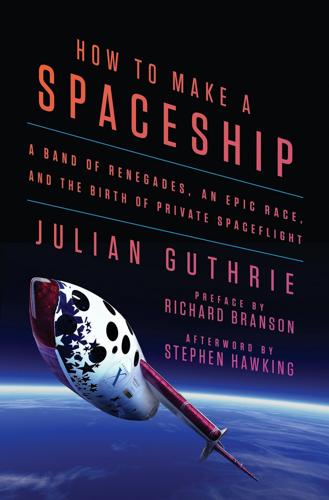
How to Make a Spaceship: A Band of Renegades, an Epic Race, and the Birth of Private Spaceflight
by
Julian Guthrie
Published 19 Sep 2016
Shortly after the reunion, Todd suffered a collapsed lung and was hospitalized. Peter’s last visit with the man he called his closest brother was in San Francisco’s South of Market neighborhood. Even under heavy sweatpants, Todd looked gaunt. The two went for a walk and Todd had a nasal cannula and pulled a small oxygen tank. The experimental treatments in Russia had failed. Peter and Todd, only a month apart in age, had spent countless hours walking together, talking about everything from space governance structures to the development of new economic systems. On this foggy day in San Francisco, they walked slowly. Todd, a Francophile and a student of history, loved Peter’s idea and inspiration for the XPRIZE.
…
The Rutans were strict Seventh-day Adventists, observing the Sabbath from sundown Friday to sundown Saturday. Burt couldn’t play team baseball, basketball, football, or any other sport requiring weekend practices or games. He couldn’t see movies, chase girls, or race hot rods. Instead, he flew, chased, and crashed airplanes. He and his mother would drive to San Francisco, about four hours north of Dinuba, to shop at a small hobby store. Burt wanted parts, but he didn’t want planes built from a kit. He had no interest in building something that he already knew would fly. At age eight he designed and built a model of an airplane that had engines under swept wings, looking a lot like the Boeing 707 years before it took flight.
…
There were family members, professors, and ISU loyalists. Peter, wearing suit and tie, touched the moonstone and closed his eyes. He had seen Todd twice in the months before his passing: for an ISU founders’ reunion in April, where he, Bob, and Todd had their last photo taken together here in the Milestones of Flight gallery, and later in San Francisco, where Todd was living with his partner. The founders’ reunion had been held in part to draw up an “ISU Credo,” crafted and signed by Bob, Todd, and Peter on April 12—the day before Todd’s thirty-fourth birthday and on the anniversary of Yuri Gagarin’s 108-minute orbital flight. More important, the reunion had brought together the Gang of Three, Peterbobtodd.
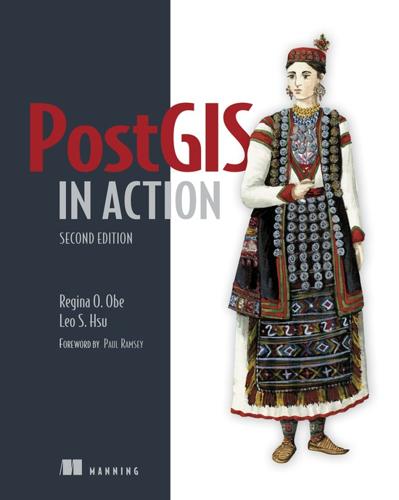
PostGIS in Action
by
Regina O. Obe
and
Leo S. Hsu
Published 2 May 2015
Proj4Text Differences in PostGIS 1.5 and PostGIS 2.0/2.1 The way the proj4text value is presented is different in PostGIS 1.5 than it is in PostGIS 2.0/2.1. The details behind the coding logic of this change are beyond the scope of this book, but you can find more information on the PROJ.4 site (http://trac.osgeo.org/proj/wiki/GenParms#towgs84-DatumtransformationtoWGS84). Exercise 2: San Francisco Data (Reading from .prj files) For this second exercise, we grabbed a zip file of San Francisco data that included a .prj file. The .prj contents look like this: PROJCS["NAD_1983_StatePlane_California_III_FIPS_0403_Feet", GEOGCS["GCS_North_American_1983", DATUM["D_North_American_1983", SPHEROID["GRS_1980",6378137.0,298.257222101]], PRIMEM["Greenwich",0.0], UNIT["Degree",0.0174532925199433]], PROJECTION["Lambert_Conformal_Conic"], PARAMETER["False_Easting",6561666.666666666], PARAMETER["False_Northing",1640416.666666667], PARAMETER["Central_Meridian",-120.5], PARAMETER["Standard_Parallel_1",37.06666666666667], PARAMETER["Standard_Parallel_2",38.43333333333333], PARAMETER["Latitude_Of_Origin",36.5], UNIT["Foot_US",0.3048006096012192]] You can surmise from this that the units are feet, it uses the NAD 83 datum, and the projection is some California state plane.
…
The output of listings 15.15 and 15.16 is the same and is shown in the following listing. Listing 15.17. Output of ranking results using self-join or window ank | nei_2 | dist -----+-----------------------+----------------- 1 | Downtown/Civic Center | 0 1 | Financial District | 0 1 | Nob Hill | 0 1 | North Beach | 0 1 | Russian Hill | 0 6 | South of Market | 1726.01750301085 Another kind of correlated subquery is the LATERAL clause. We’ll examine laterals next. 15.5.4. Laterals PostgreSQL 9.3+ introduced the LATERAL construct, which is used in the FROM join clause. LATERAL allows you to create correlated subqueries in the FROM clause of an SQL statement or to use a set-returning function in the FROM clause that takes input from another table in the FROM clause.
…
The buffer is created by picking a specific point and drawing a circle polygon around it with a 10-meter radius centered at the point, generated from code in chapter 8. Table 3.4. Ten-meter buffer areas in different regions of the world City utm geog wm diff_utm_geog diff_utm_wm Honolulu 312 312 362 0.13 49.48 San Francisco 312 312 500 0.22 188.03 Boston 312 312 572 0.02 260.22 Paris 312 312 722 0.24 409.54 Oslo 312 312 1240 0.18 927.74 Saint Petersburg 312 312 1241 0.09 929.03 Helsinki 312 312 1260 0.15 947.76 Bergen 312 312 1272 0.11 959.40 Arkhangelsk 312 312 1681 0.20 1368.54 Murmansk 312 312 2412 0.25 2100.22 Why is a PostGIS 10-meter buffer of a point 312 and not 314 sq m?
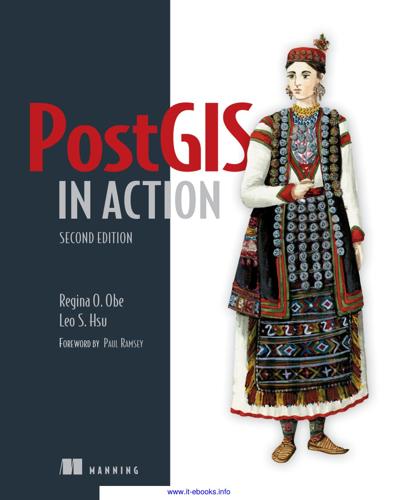
PostGIS in Action, 2nd Edition
by
Regina O. Obe
and
Leo S. Hsu
Published 2 May 2015
The details behind the coding logic of this change are beyond the scope of this book, but you can find more information on the PROJ.4 site (http://trac .osgeo.org/proj/wiki/GenParms#towgs84-DatumtransformationtoWGS84). Licensed to tracy moore <nordick.an@gmail.com> www.it-ebooks.info Determining the spatial reference system of source data 79 EXERCISE 2: SAN FRANCISCO DATA (READING FROM .PRJ FILES) For this second exercise, we grabbed a zip file of San Francisco data that included a .prj file. The .prj contents look like this: PROJCS["NAD_1983_StatePlane_California_III_FIPS_0403_Feet", GEOGCS["GCS_North_American_1983", DATUM["D_North_American_1983", SPHEROID["GRS_1980",6378137.0,298.257222101]], PRIMEM["Greenwich",0.0], UNIT["Degree",0.0174532925199433]], PROJECTION["Lambert_Conformal_Conic"], PARAMETER["False_Easting",6561666.666666666], PARAMETER["False_Northing",1640416.666666667], PARAMETER["Central_Meridian",-120.5], PARAMETER["Standard_Parallel_1",37.06666666666667], PARAMETER["Standard_Parallel_2",38.43333333333333], PARAMETER["Latitude_Of_Origin",36.5], UNIT["Foot_US",0.3048006096012192]] You can surmise from this that the units are feet, it uses the NAD 83 datum, and the projection is some California state plane.
…
The output of listings 15.15 and 15.16 is the same and is shown in the following listing. Listing 15.17 Output of ranking results using self-join or window ank | nei_2 | dist -----+-----------------------+----------------1 | Downtown/Civic Center | 0 1 | Financial District | 0 1 | Nob Hill | 0 1 | North Beach | 0 1 | Russian Hill | 0 6 | South of Market | 1726.01750301085 Another kind of correlated subquery is the LATERAL clause. We’ll examine laterals next. 15.5.4 Laterals PostgreSQL 9.3+ introduced the LATERAL construct, which is used in the FROM join clause. LATERAL allows you to create correlated subqueries in the FROM clause of an SQL statement or to use a set-returning function in the FROM clause that takes input from another table in the FROM clause.
…
The buffer is created by picking a specific point and drawing a circle polygon around it with a 10-meter radius centered at the point, generated from code in chapter 8. Table 3.4 Ten-meter buffer areas in different regions of the world City utm geog wm diff_utm_geog diff_utm_wm Honolulu 312 312 362 0.13 49.48 San Francisco 312 312 500 0.22 188.03 Boston 312 312 572 0.02 260.22 Paris 312 312 722 0.24 409.54 Oslo 312 312 1240 0.18 927.74 Saint Petersburg 312 312 1241 0.09 929.03 Helsinki 312 312 1260 0.15 947.76 Bergen 312 312 1272 0.11 959.40 Arkhangelsk 312 312 1681 0.20 1368.54 Murmansk 312 312 2412 0.25 2100.22 Why is a PostGIS 10-meter buffer of a point 312 and not 314 sq m?
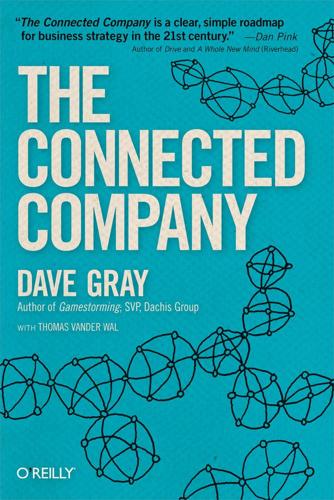
The Connected Company
by
Dave Gray
and
Thomas Vander Wal
Published 2 Dec 2014
The rapid expansion proved too much for the company, and it was merged into Continental Airlines in 1987. In 2007, Yahoo launched an innovation studio called Brickhouse, in order to better compete with nimble startups. Yahoo opened a 14,000-square-foot office far away from corporate headquarters, in the South of Market Area (SOMA) of San Francisco, a hotbed of startups and innovation, and seeded the effort with entrepreneurs such as Flickr cofounder Caterina Fake. Basically, Brickhouse was an innovation pod, set up to rekindle the startup flame and encourage experimentation and the exploration of new ideas. The Brickhouse team moved quickly, developing products in a third of the time it took at Yahoo proper.
…
Buzzsaw is now called Building Collaboration Services, and Buzzsaw CEO Carl Bass is now the CEO of Autodesk. Disrupting Full-Service Telecom at O2 In 2008, Gav Thompson, Head of Brand innovation at UK telecom provider O2, came up with an idea for a pilot pod while sitting in a Web2.0 conference in San Francisco, doodling in his notebook. He envisioned a company that was designed and run mostly by customers, and a new service called giffgaff—an ancient Scottish word for “mutual giving”—was born. O2 started the pod by launching a community first, so prospective customers could talk about what they wanted in a service.

Lonely Planet London City Guide
by
Tom Masters
,
Steve Fallon
and
Vesna Maric
Published 31 Jan 2010
Return to beginning of chapter INFORMATION City Cycle Hire ( 365629; www.citycyclehire.com; 61 Newnham Rd; bikes half-day/day/24 hr from £5/8/10 plus a £40 deposit; 9am-5.30pm Mon-Fri year round, 9am-5pm Sat Apr-Sep) Scudamore’s ( 359750; www.scudamores.com; Granta Pl, Mill La; per hr £16-18, 45-min chauffeured rides £14 per person) Has punts for hire and chauffeured rides. Tourist office ( 0871 226 8006; www.visitcambridge.org; Old Library, Wheeler St; 10am-5pm Mon-Sat, 11am-3pm Sun May-Sep, 10am-5.30pm Mon-Sat Oct-Apr) Just south of Market Sq. Staff can arrange accommodation and two-hour walking tours (adult/child including entry to King’s College £10/8.50), leaving at 1.30pm year-round, with more departures during summer. Trinity Punt Hire ( 338800; www.trin.cam.ac.uk; Trinity St, Trinity College; punts per hr £12) Has punts for hire and chauffeured rides.
…
Return to beginning of chapter GAY & LESBIAN LONDON * * * SHOPPING DRINKING & NIGHTLIFE THE WEST END CLERKENWELL, SHOREDITCH & SPITALFIELDS THE EAST END & DOCKLANDS NORTH LONDON SOUTH LONDON FURTHER RESOURCES * * * * * * top picks Duckie Circus Joiners Arms Gay’s the Word Barcode Heaven Ghetto G Spot Orange XXL What’s your recommendation? www.lonelyplanet.com/london * * * The city of Oscar Wilde, Quentin Crisp and Elton John does not disappoint its queer visitors, proffering a fantastic mix of brash, camp, loud and edgy parties, bars, clubs and events all year round. A world capital of gaydom on par with New York and San Francisco, London is home to enormous gay and lesbian communities that fan out throughout the city. There’s also a superb film festival Click here, one of the world’s largest annual gay pride events (Click here) and a simmering activist movement to boot. Things have improved immeasurably in the past decade for gay and lesbian rights and recognition: protection from discrimination is now enshrined in law, and civil partnerships now allow gay couples the same rights as straight couples, even with respect to adoption.
…
Return to beginning of chapter TIME Wherever you are in the world, the time on your watch is measured in relation to the time at Greenwich in London – Greenwich Mean Time (GMT). British Summer Time, the UK’s form of daylight-saving time, muddies the water so that even London is ahead of GMT from late March to late October. To give you an idea, San Francisco is usually eight hours and New York five hours behind GMT, while Sydney is 10 hours ahead of GMT. Phone the international operator on 155 to find out the exact difference. Return to beginning of chapter TIPPING Many restaurants now add a ‘discretionary’ service charge to your bill, but in places that don’t you are expected to leave a 10% to 15% tip unless the service was unsatisfactory.

England
by
David Else
Published 14 Oct 2010
Today the city’s rich past is blighted by some nasty examples of postwar town planning, although there are a few remaining buildings of architectural note. The town is also famous for footwear and was once the heart of the boot and shoe industry. Orientation The town is centred on Market Sq, with the main pedestrianised shopping route, Abington St, running east from it, where it becomes Kettering Rd, with its hotels and bars. To the south of Market Sq are the guildhall and the tourist office. The town’s infamously ugly bus station is to the north. Information The helpful tourist office ( 01604-838800; www.explorenorthamptonshire.co.uk; The Guildhall, St Giles Sq; 10am-5pm Mon-Sat) was in a temporary home next to the Derngate Royal Theatre at the time of writing but will move to Sessions House on George Row during 2009.
…
TIME Wherever you are in the world, time is measured in relation to Greenwich Mean Time (GMT, or Universal Time Coordinated, UTC as it’s more accurately called), so a highlight for many visitors to London is a trip to Greenwich and its famous line dividing the western and eastern hemispheres. To give you an idea, if it is noon in London, it is 4am on the same day in San Francisco, 7am in New York and 10pm in Sydney. British summer time (BST) is Britain’s daylight saving; one hour ahead of GMT from late March to late October. TOURIST INFORMATION Before leaving home, check the informative, comprehensive and wide-ranging websites VisitBritain (www.visitbritain.com)and EnjoyEngland (www.enjoyengland.com), covering all the angles of national tourism, with links to numerous other sites.

Great Britain
by
David Else
and
Fionn Davenport
Published 2 Jan 2007
Today the city’s rich past is blighted by some nasty examples of postwar town planning, although there are a few remaining buildings of architectural note. The town is also famous for footwear and was once the heart of the boot and shoe industry. Orientation The town is centred on Market Sq, with the main pedestrianised shopping route, Abington St, running east from it, where it becomes the Kettering Rd, with its hotels and bars. To the south of Market Sq are the guildhall and the tourist office. The town’s infamously ugly bus station is to the north. Information The helpful tourist office ( 01604-838800; www.explorenorthamptonshire.co.uk; The Guildhall, St Giles Sq; 10am-5pm Mon-Sat) was in a temporary home next to the Derngate Royal Theatre at the time of writing but will move to Sessions House on George Row during 2009.
…
Return to beginning of chapter TIME Wherever you are in the world, time is mea-sured in relation to Greenwich Mean Time (GMT, or Universal Time Coordinated, UTC as it’s more accurately called), so a highlight for many visitors to London is a trip to Greenwich and its famous line dividing the western and eastern hemispheres. To give you an idea, if it is noon in London, it is 4am on the same day in San Francisco, 7am in New York and 10pm in Sydney. British summer time (BST) is Britain’s daylight saving; one hour ahead of GMT from late March to late October. Return to beginning of chapter TOURIST INFORMATION Before leaving home, check the informative, comprehensive and wide-ranging website VisitBritain (www.visitbritain.com) or the more specific sites www.enjoyengland.com, www.visitscotland.com and www.visitwales.com.